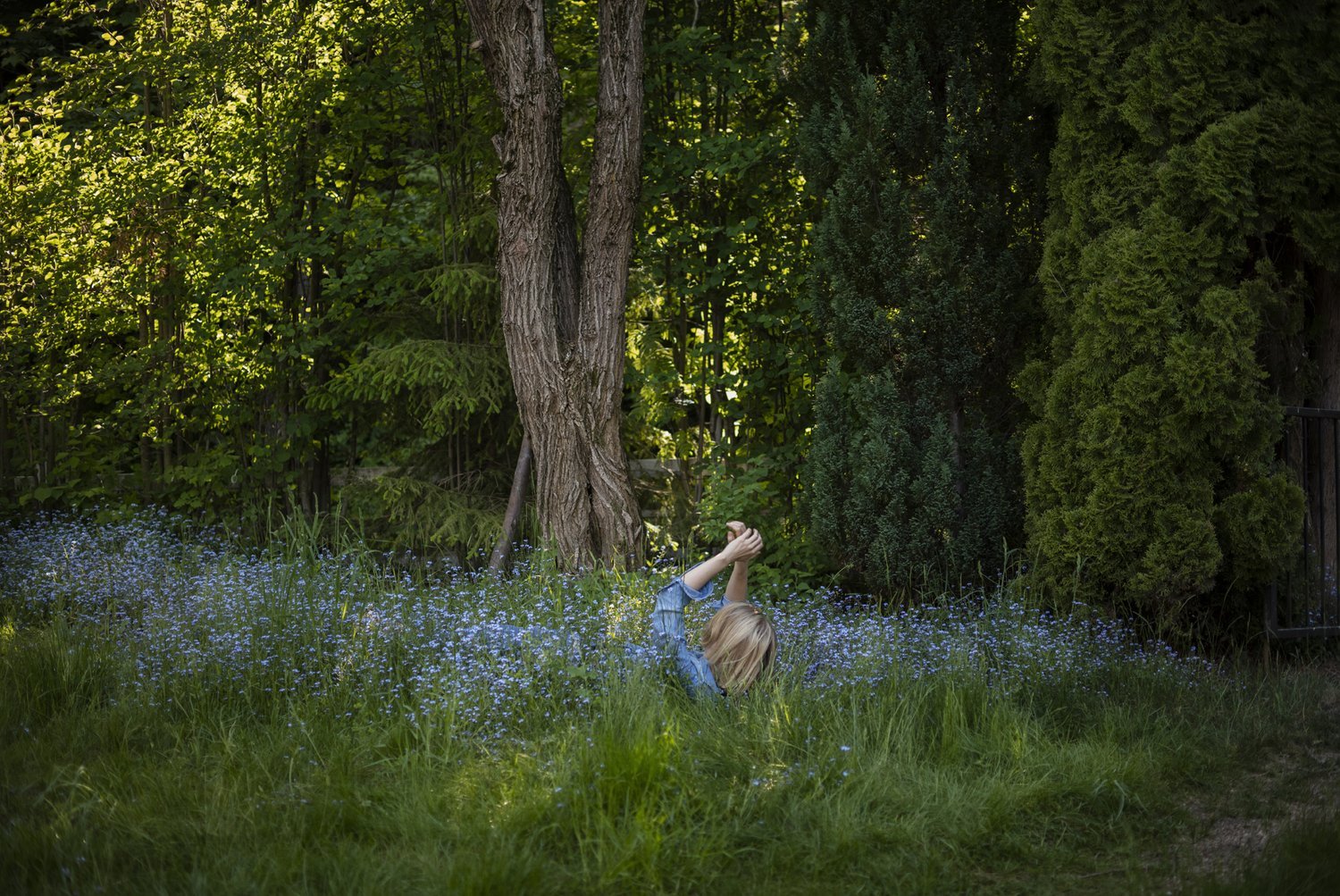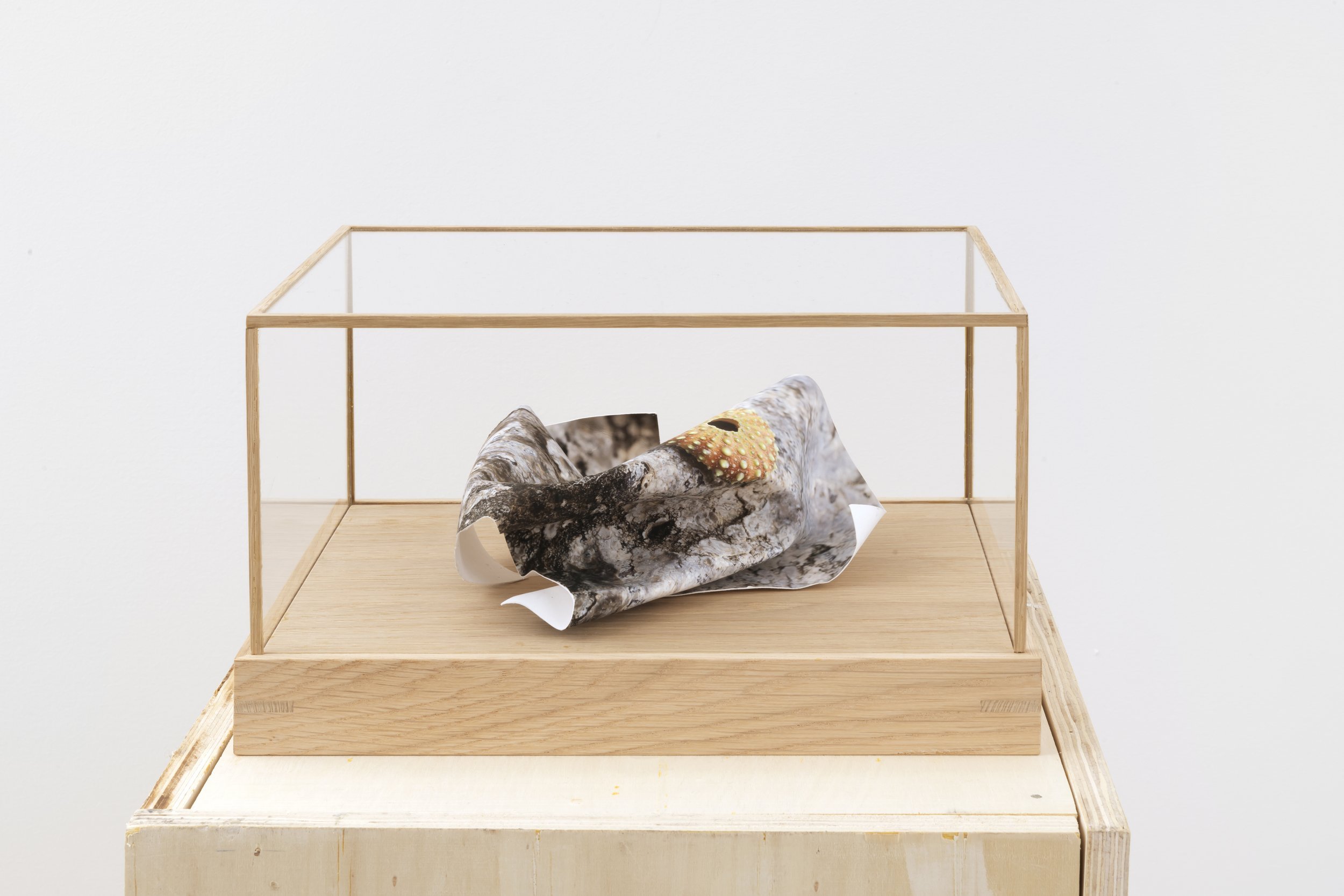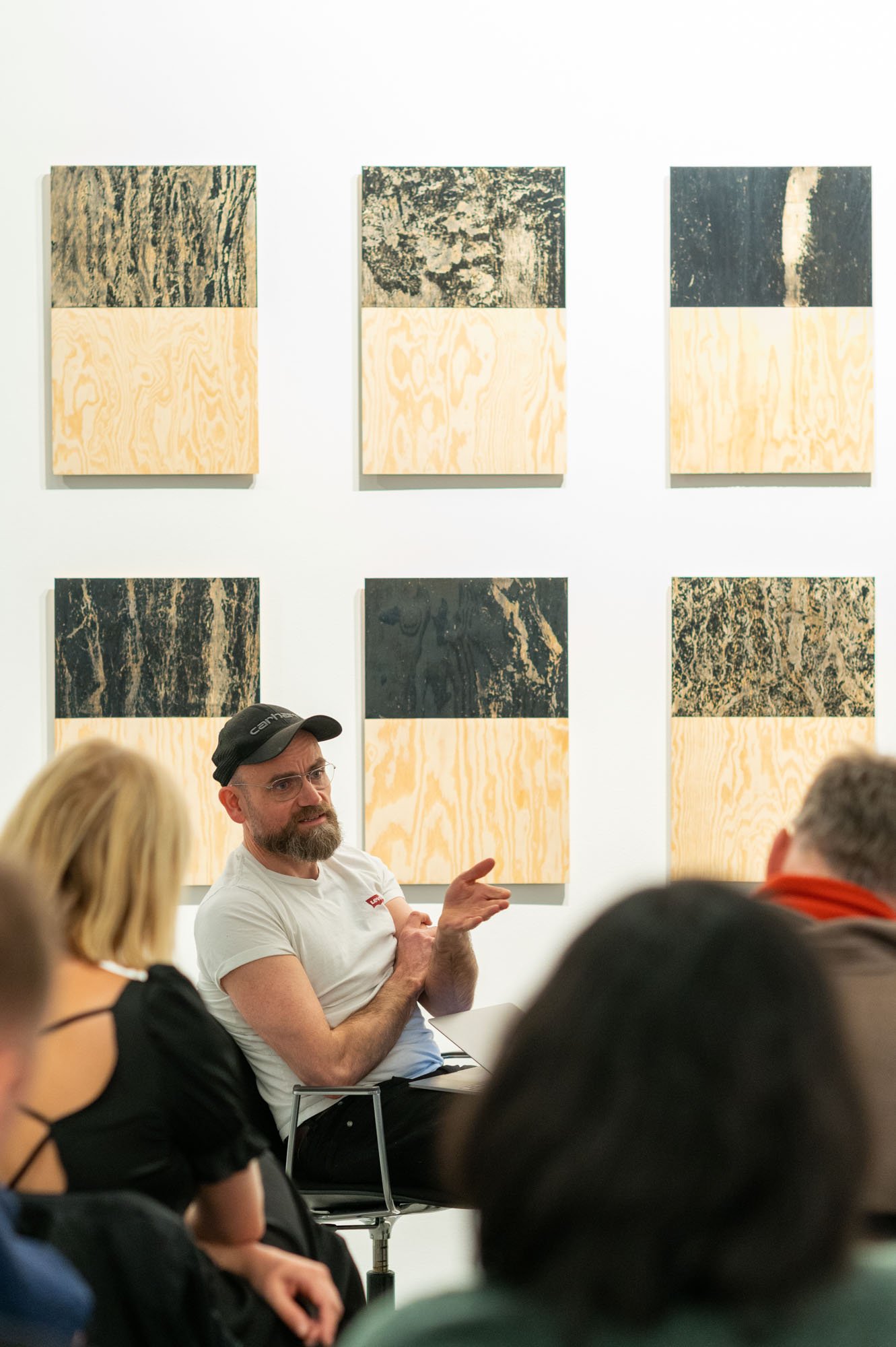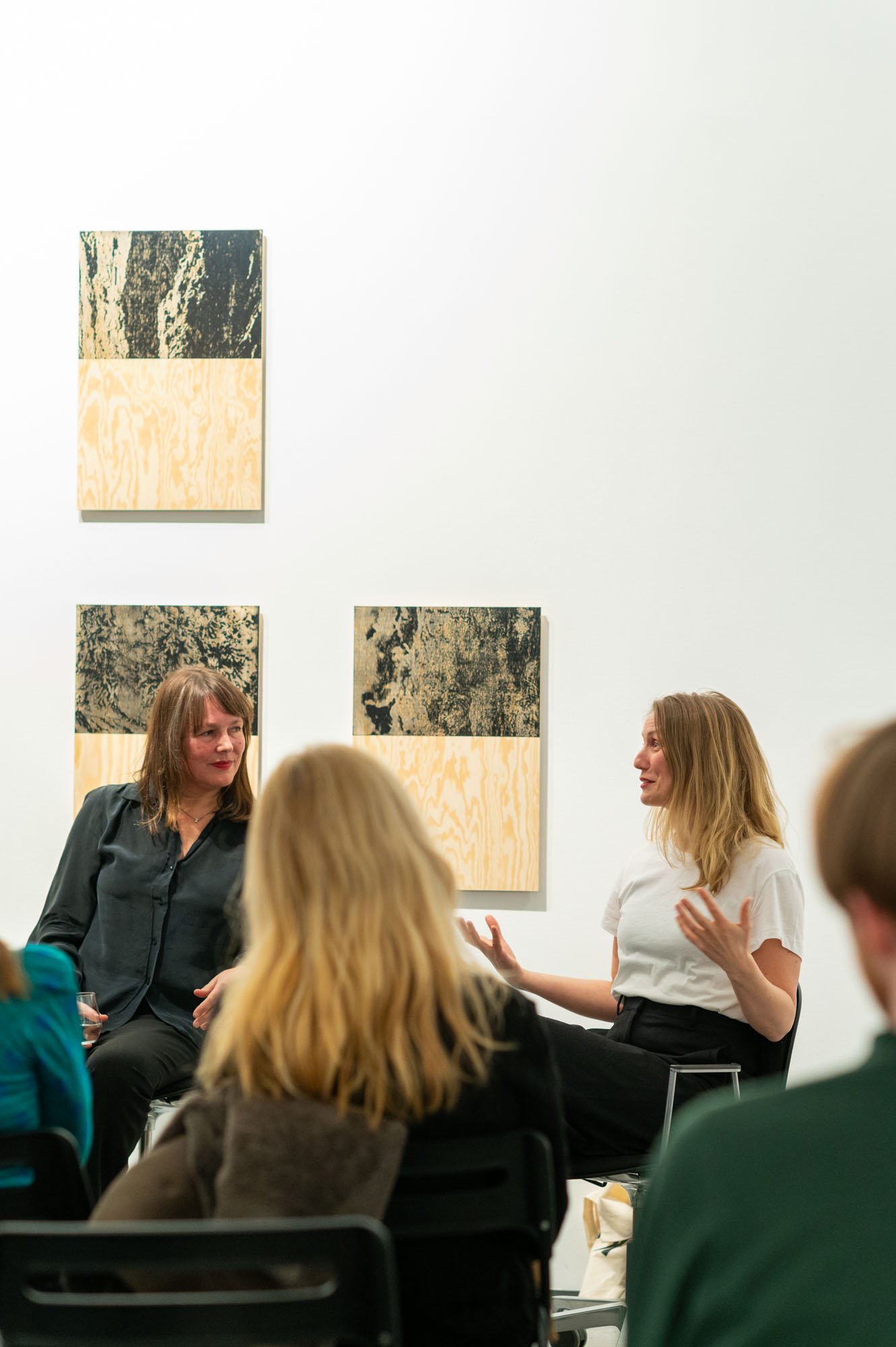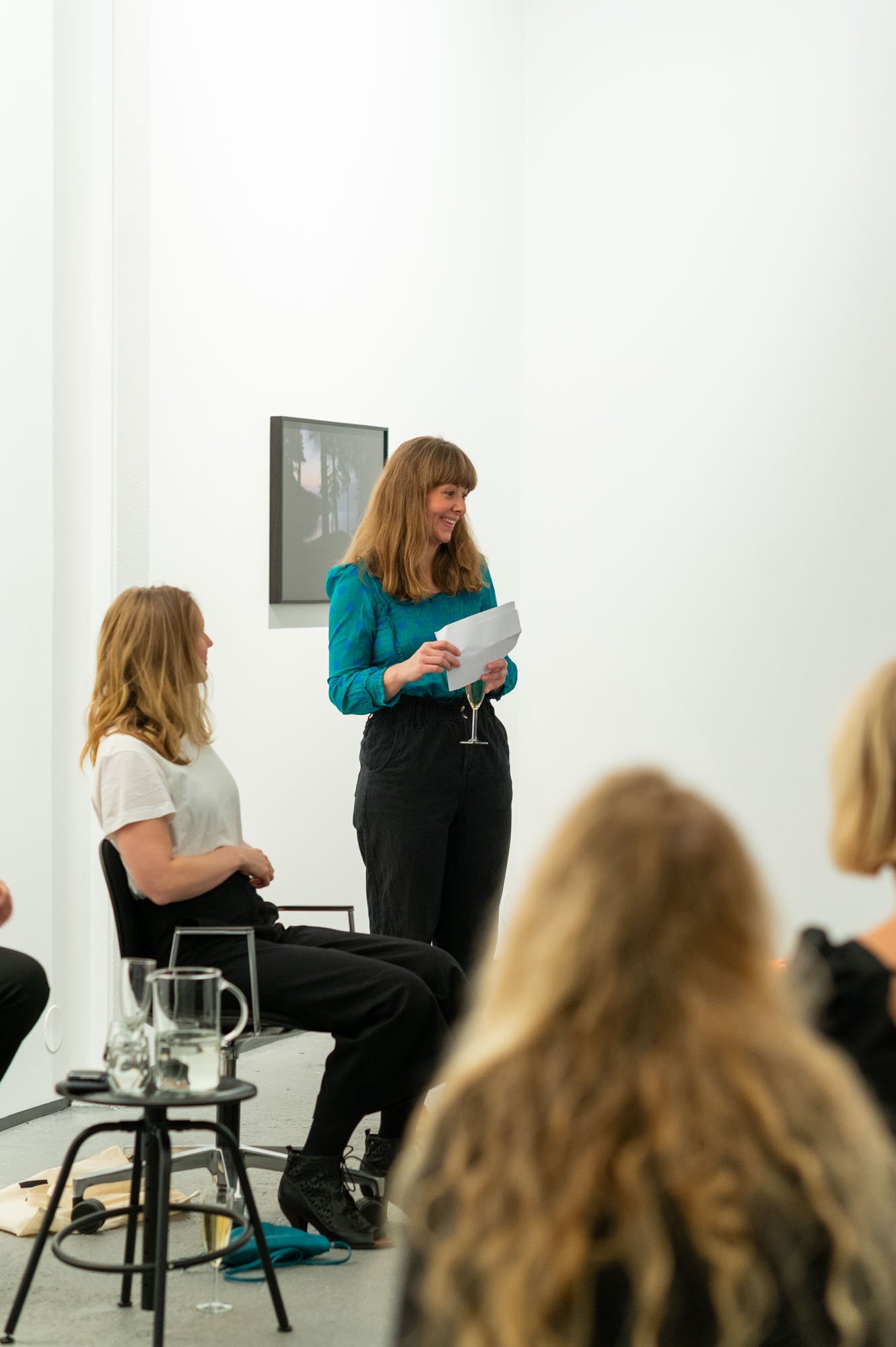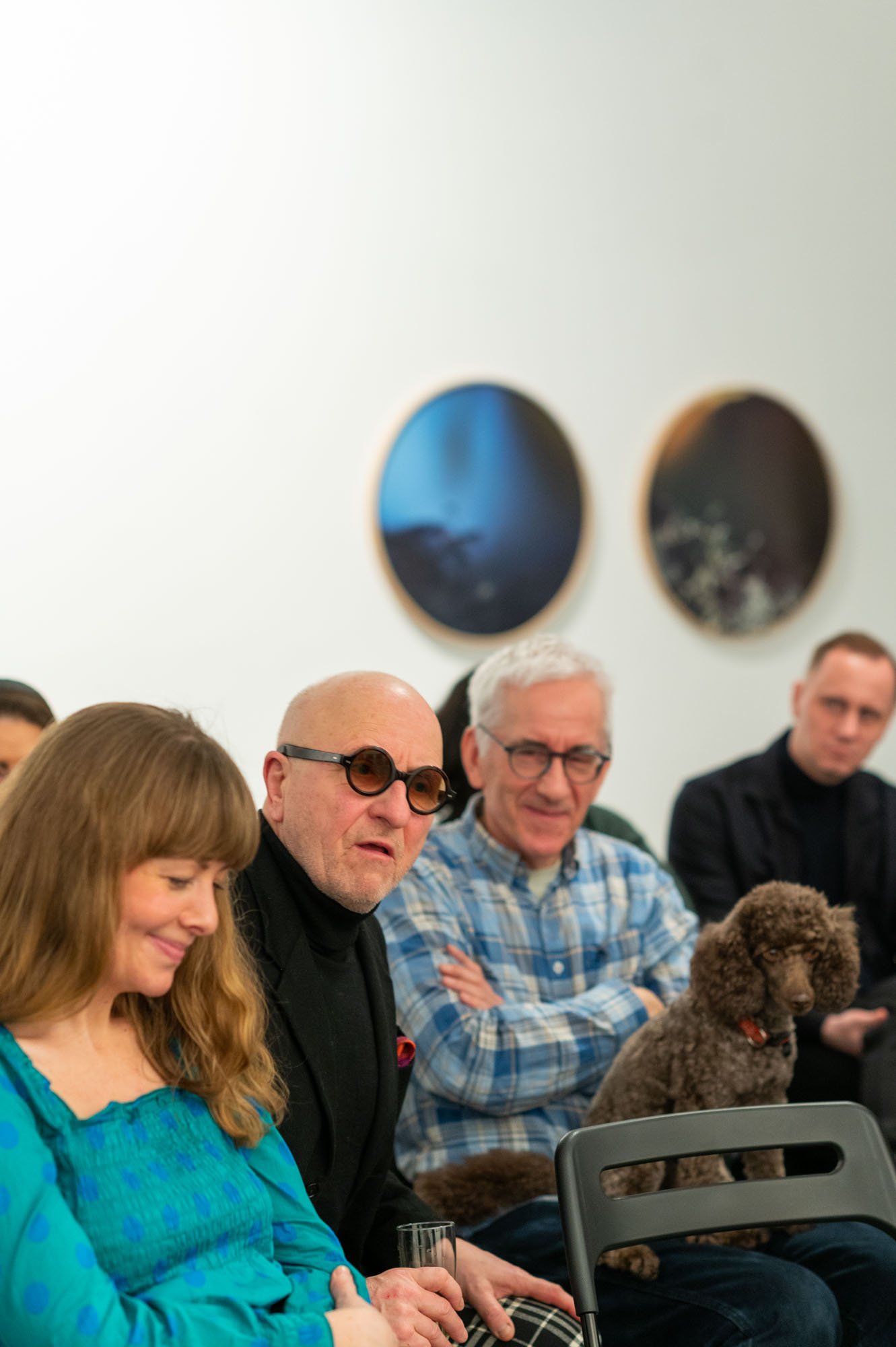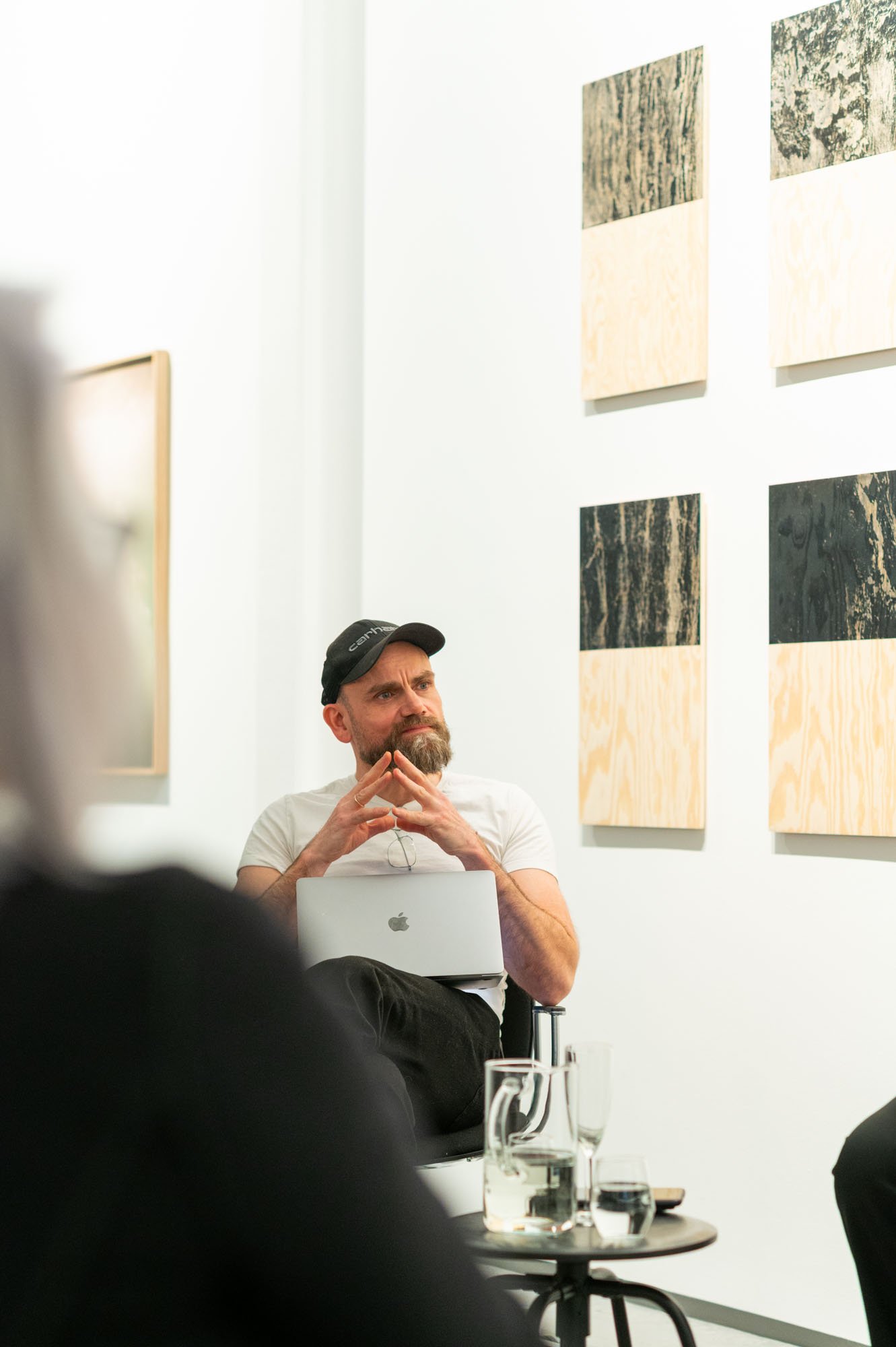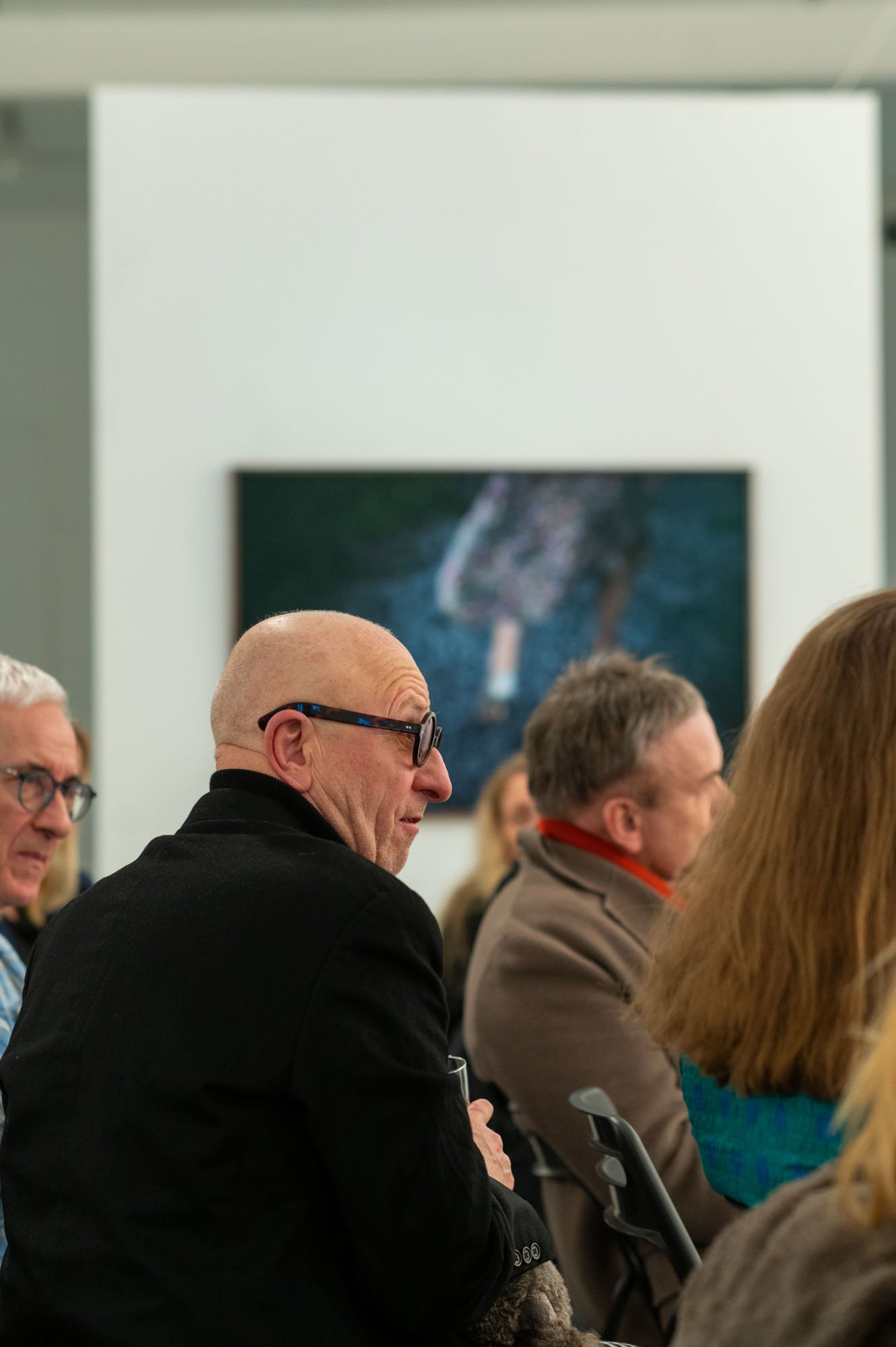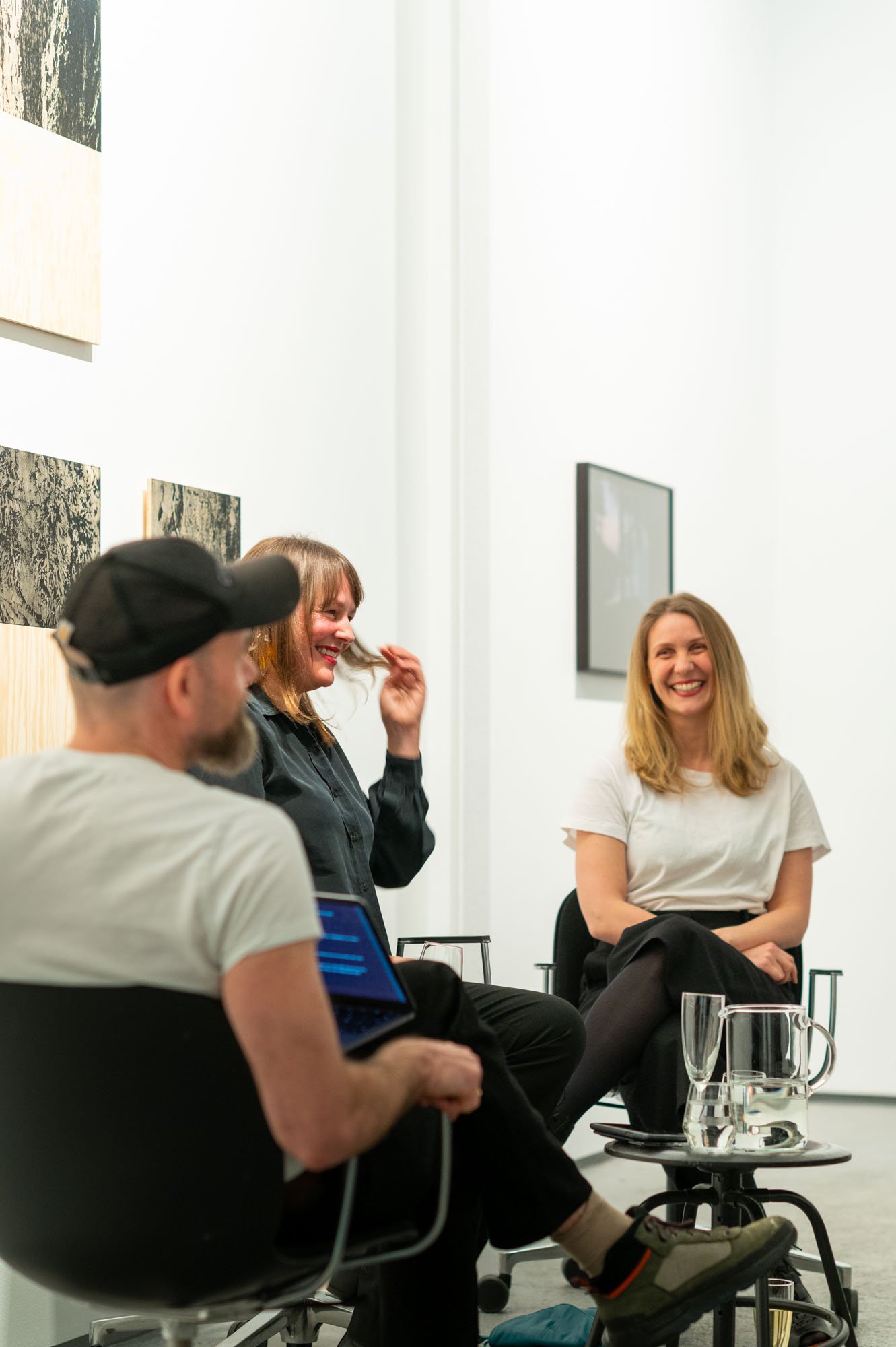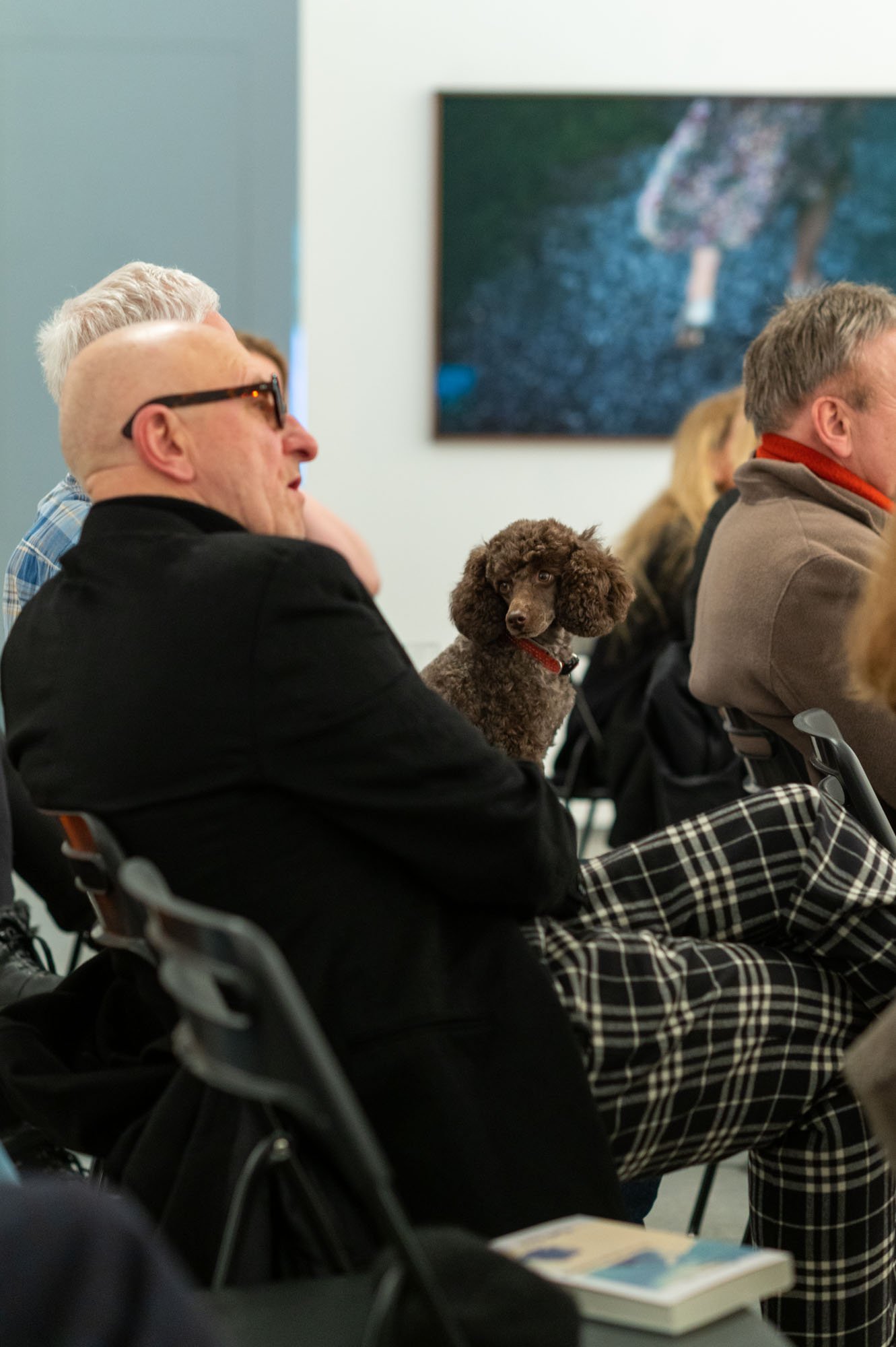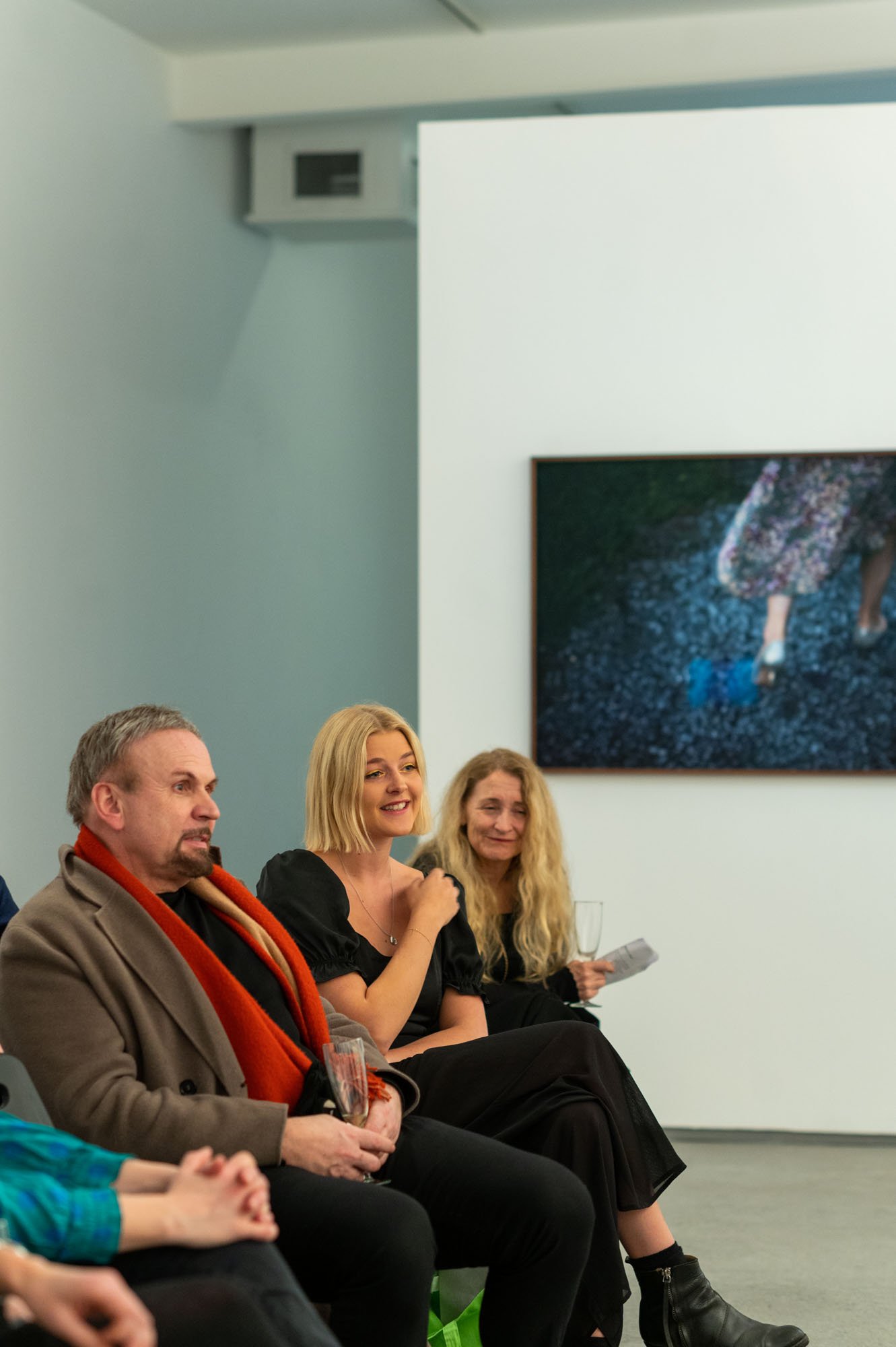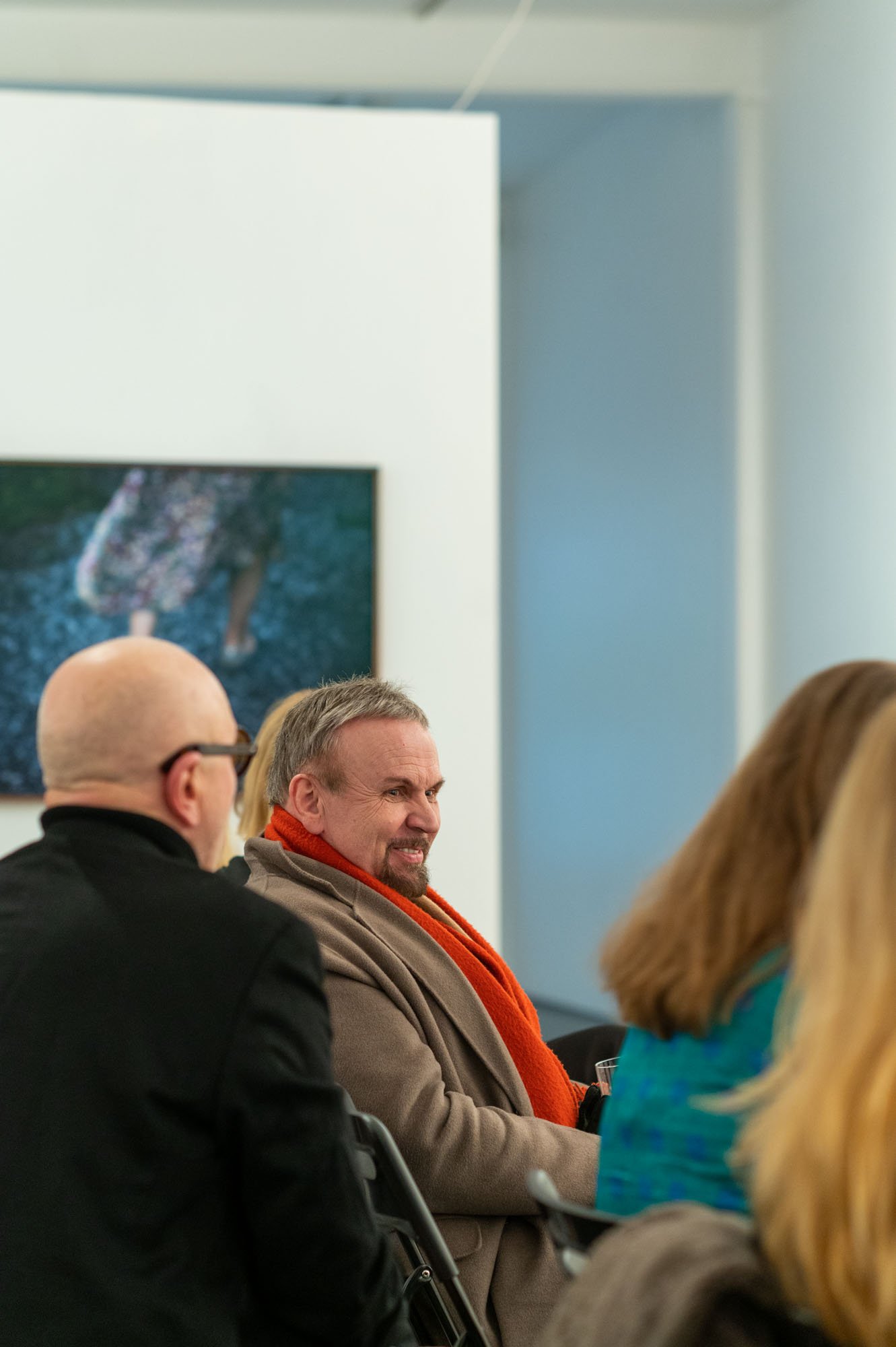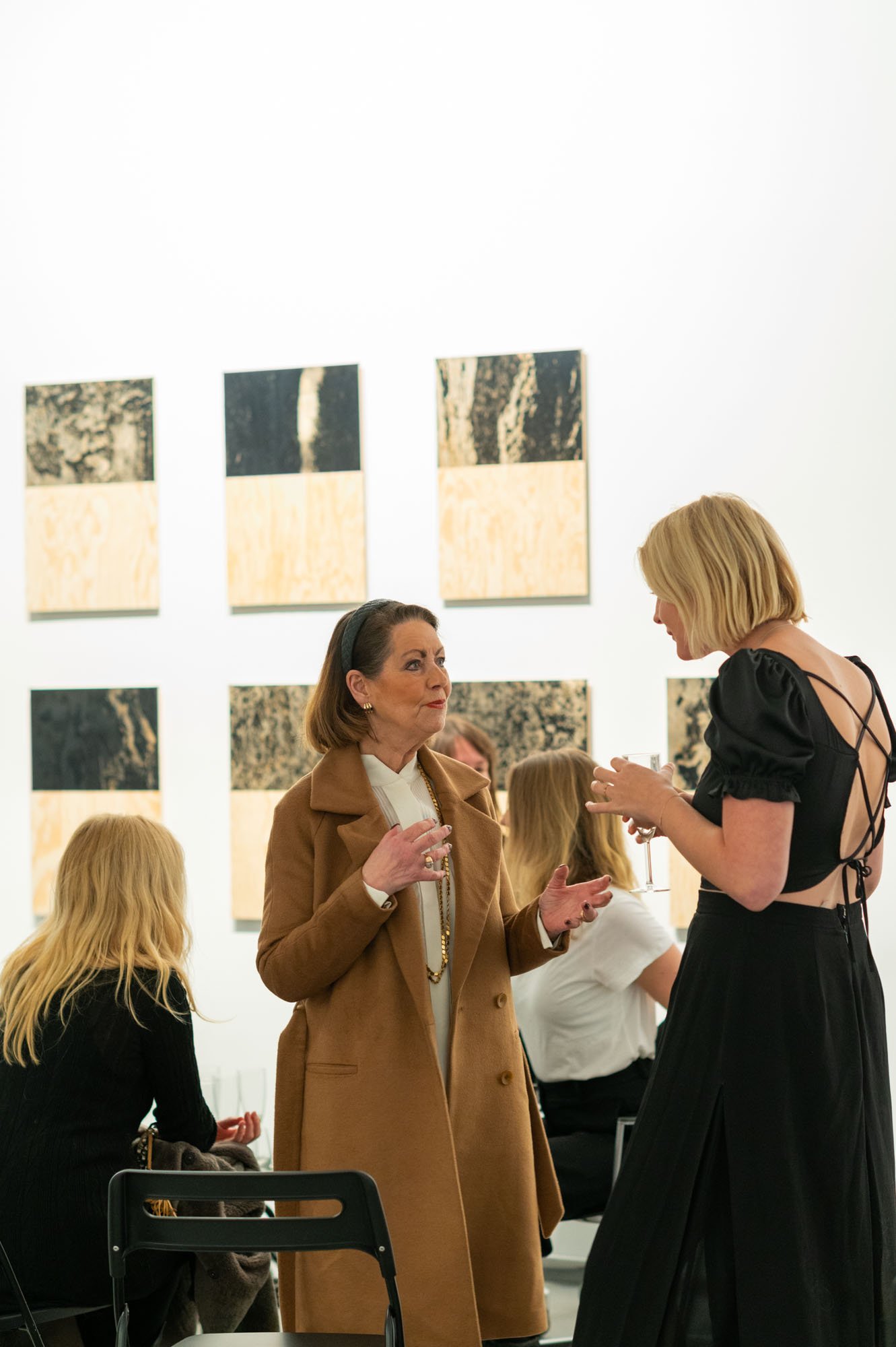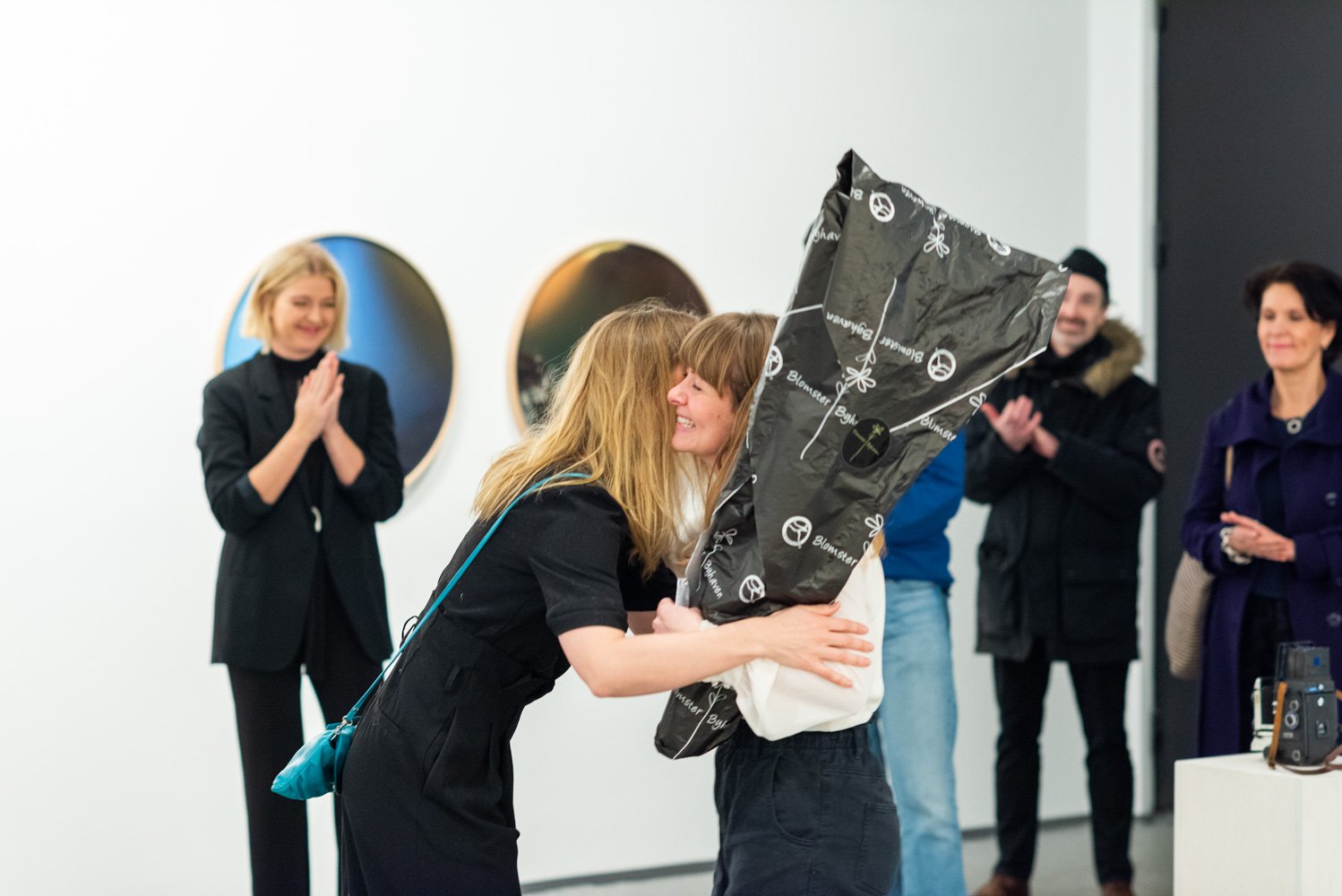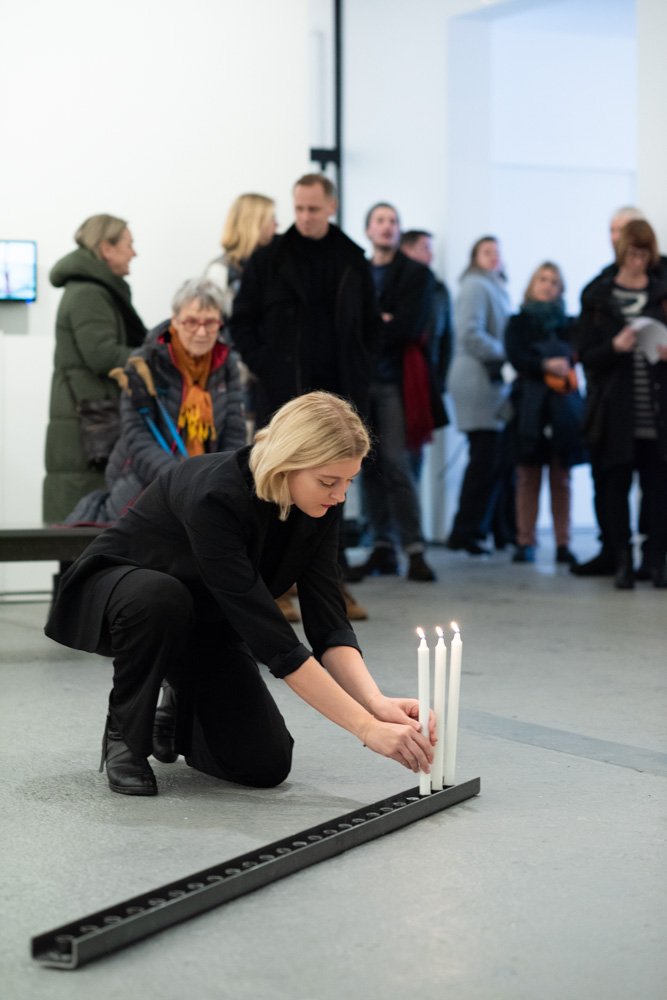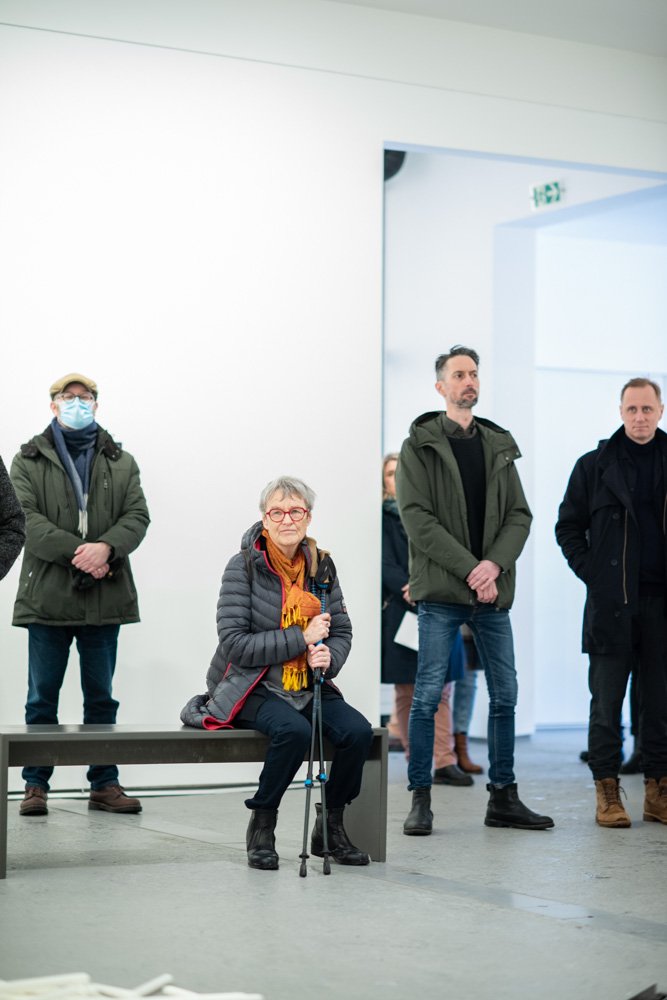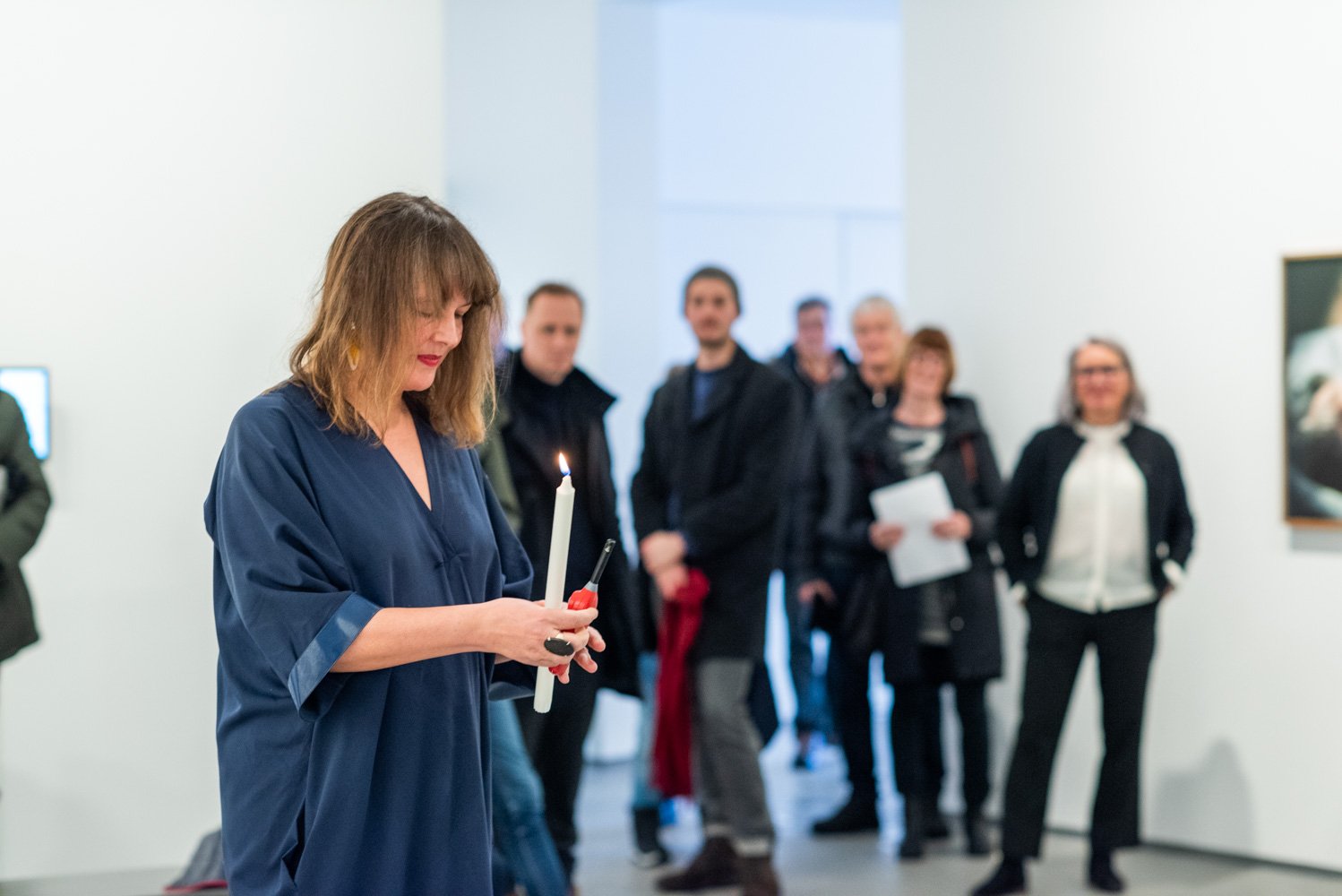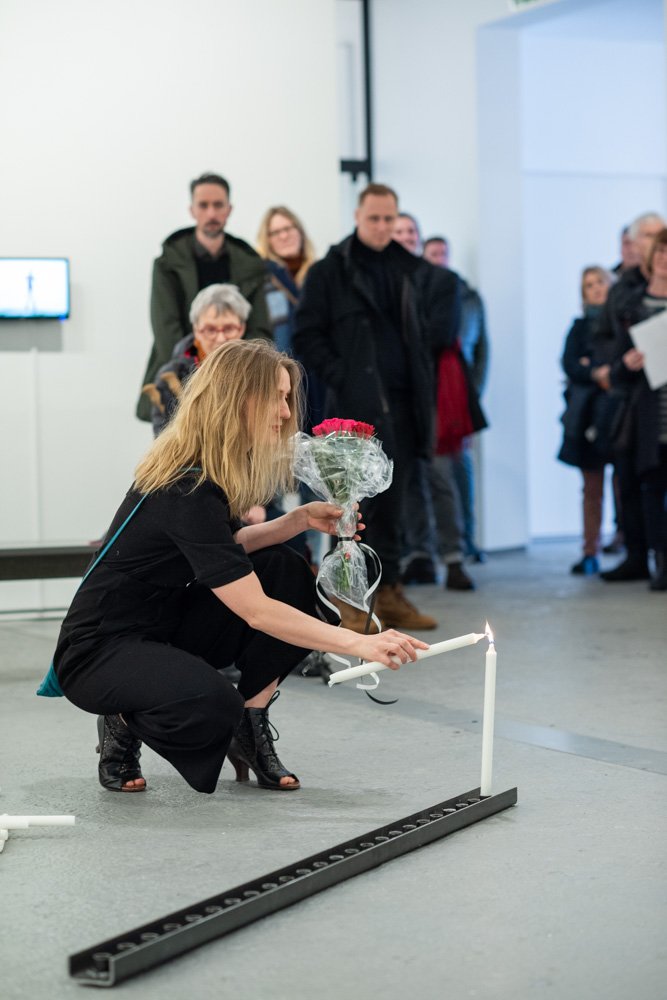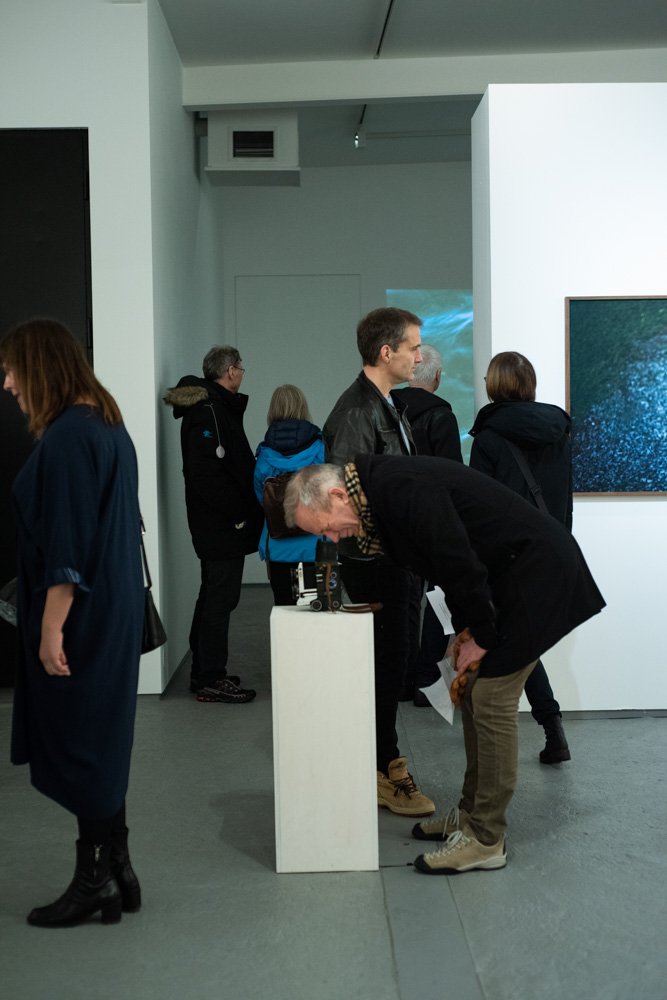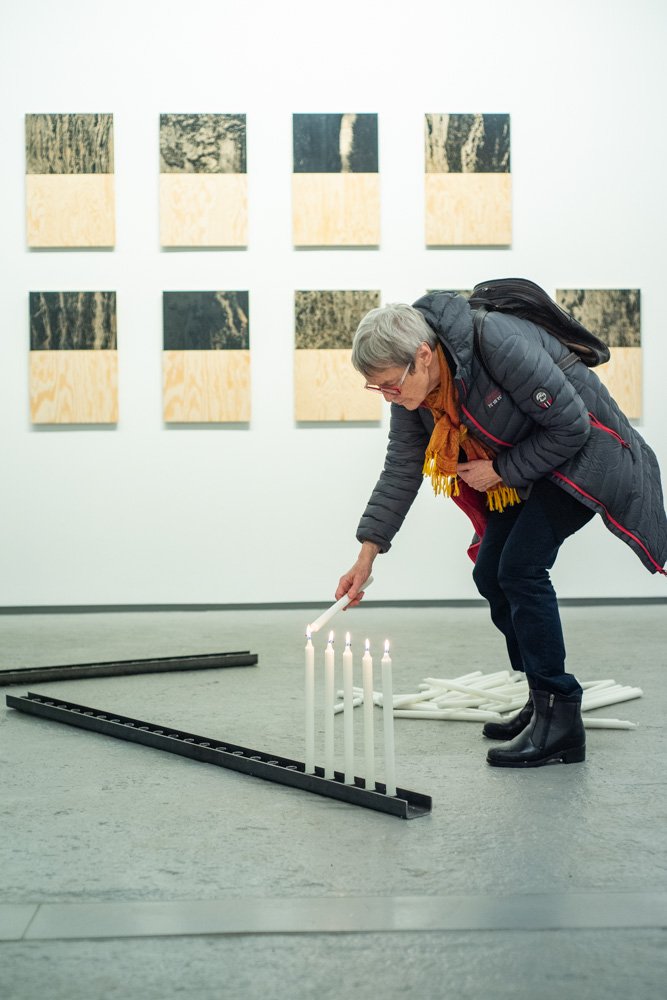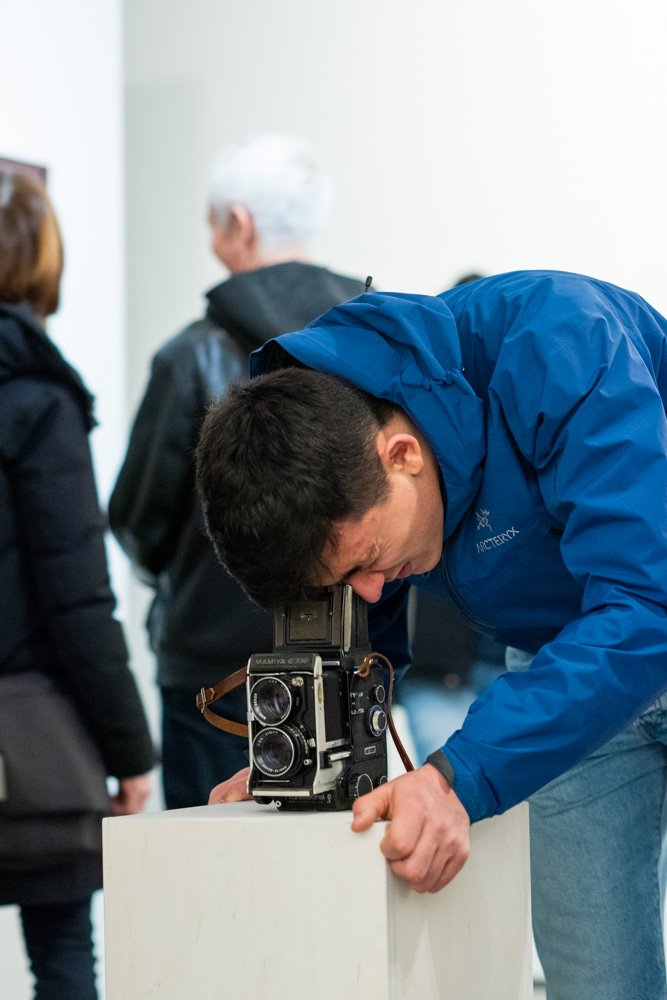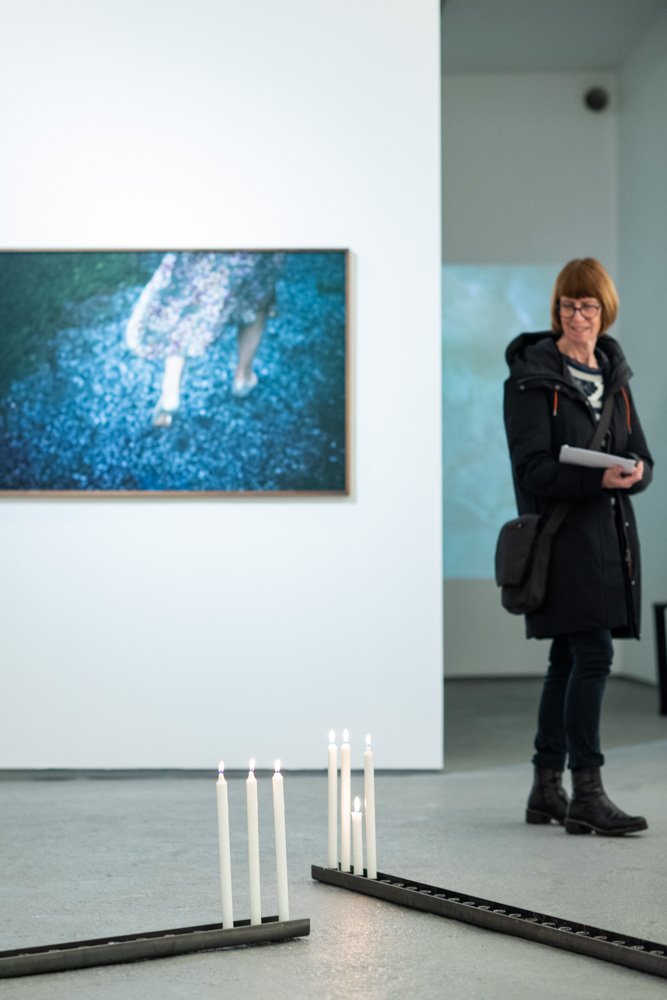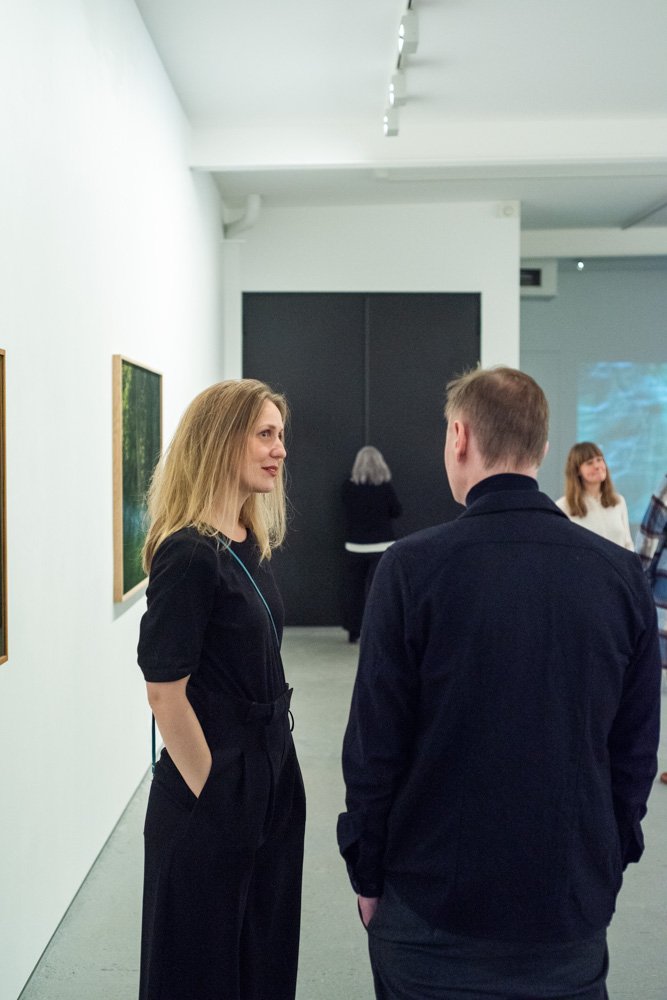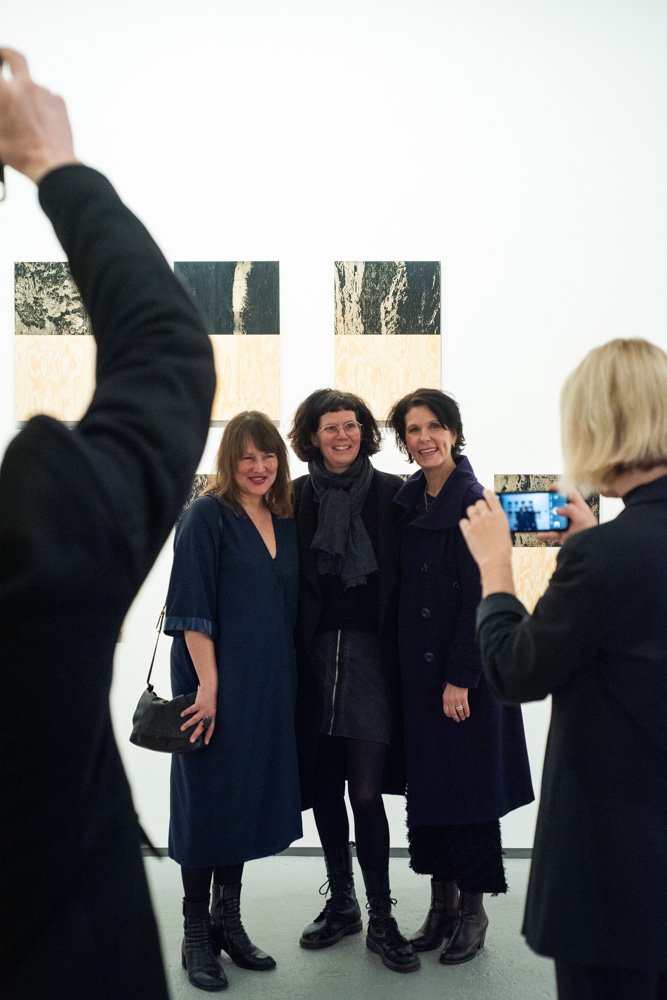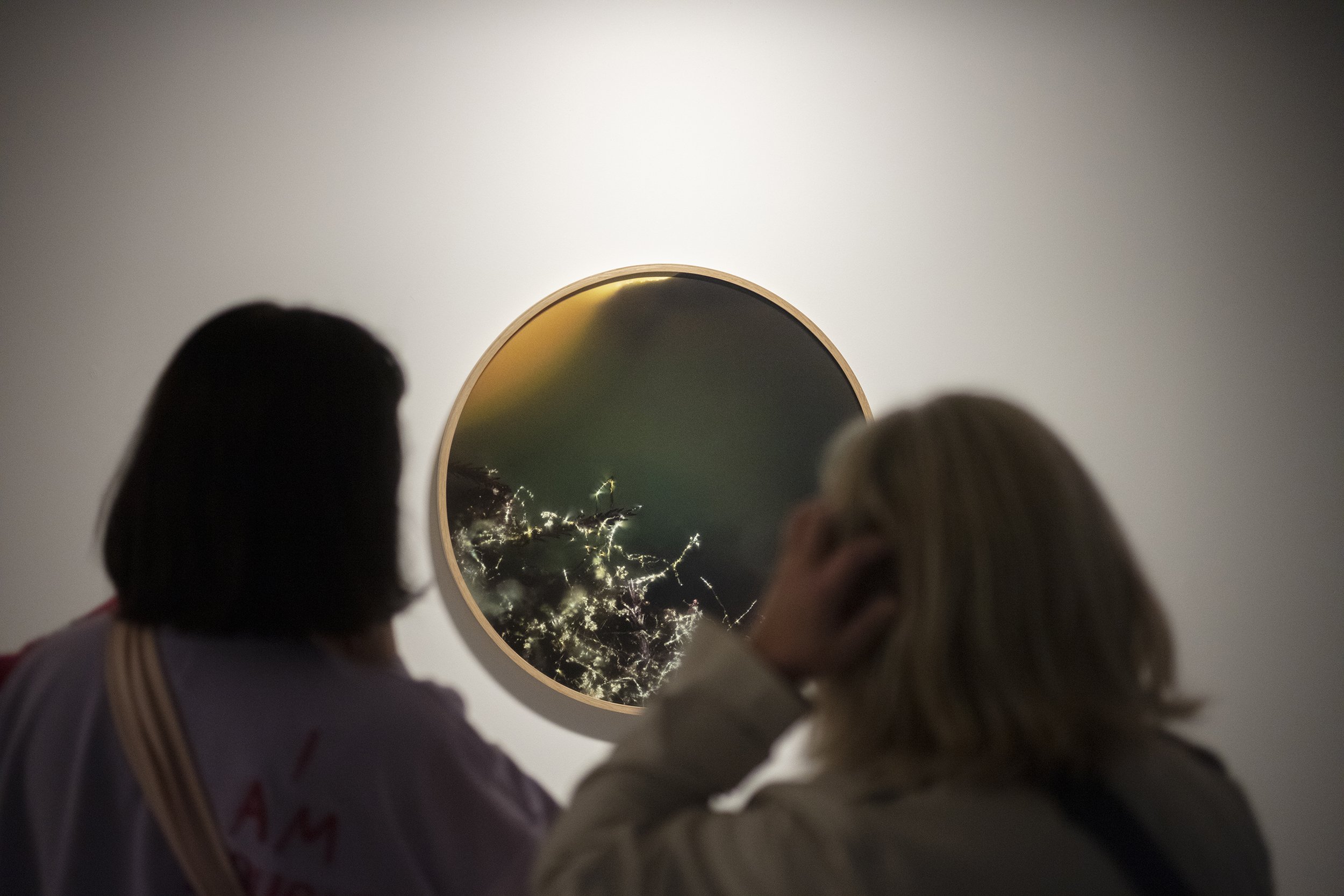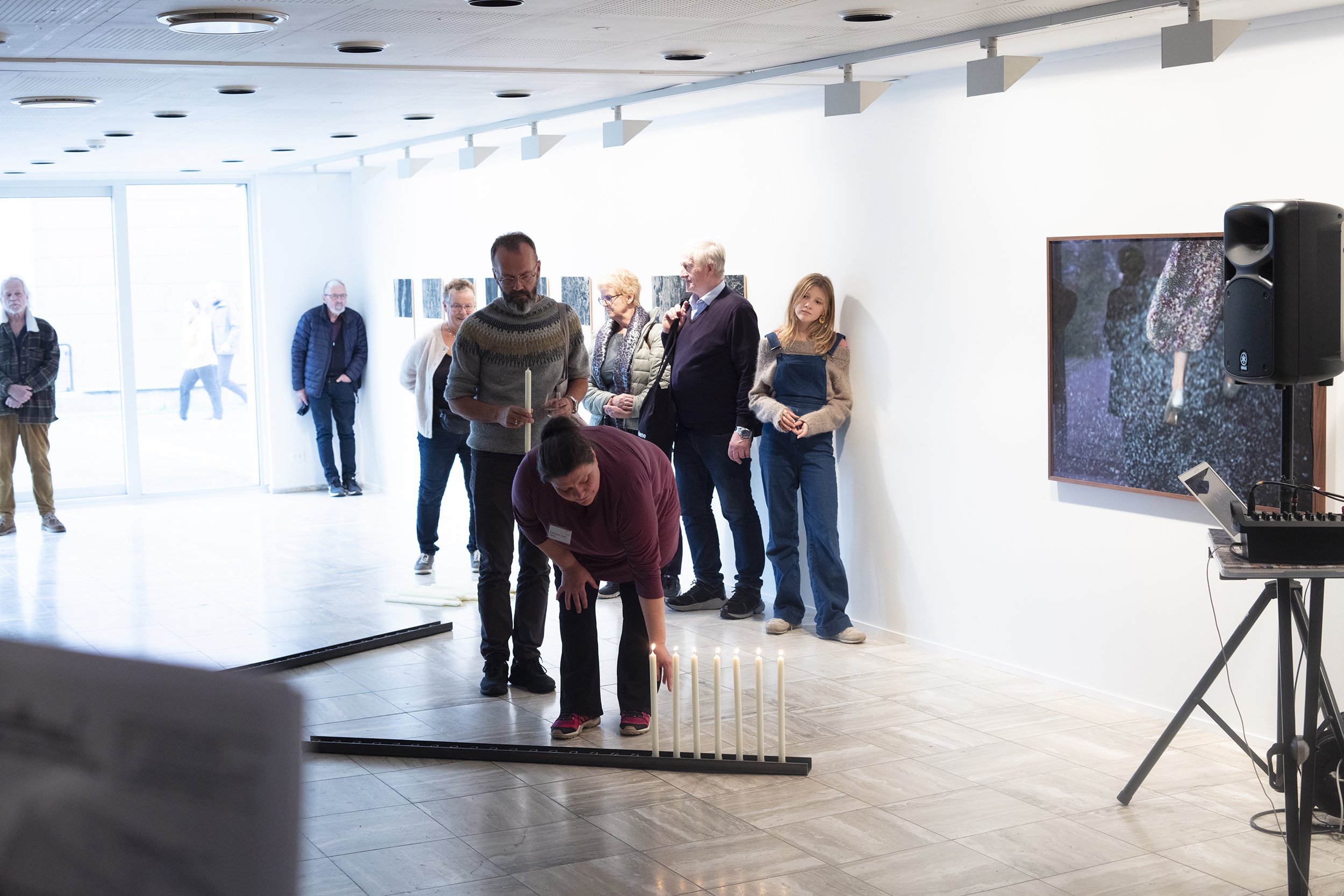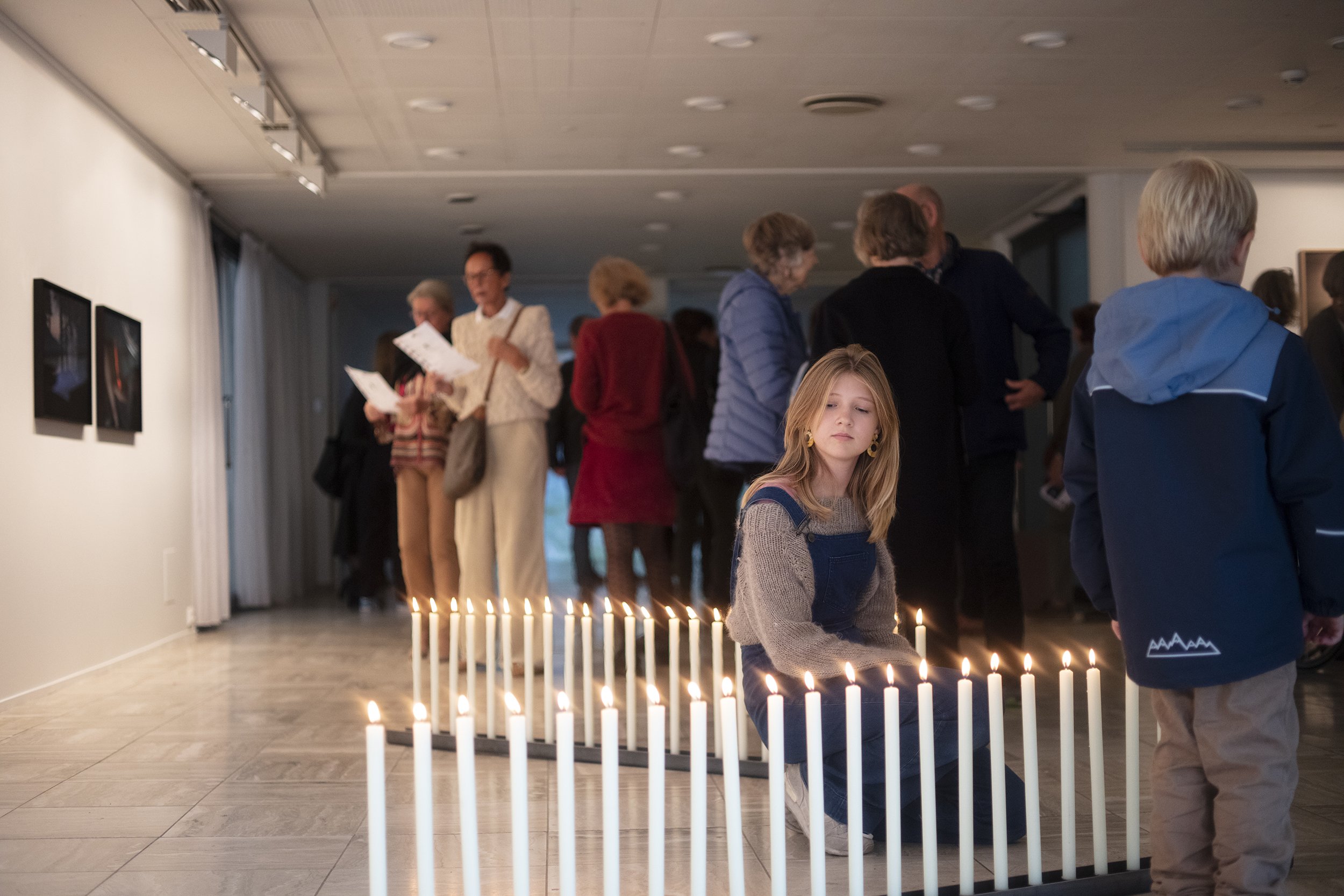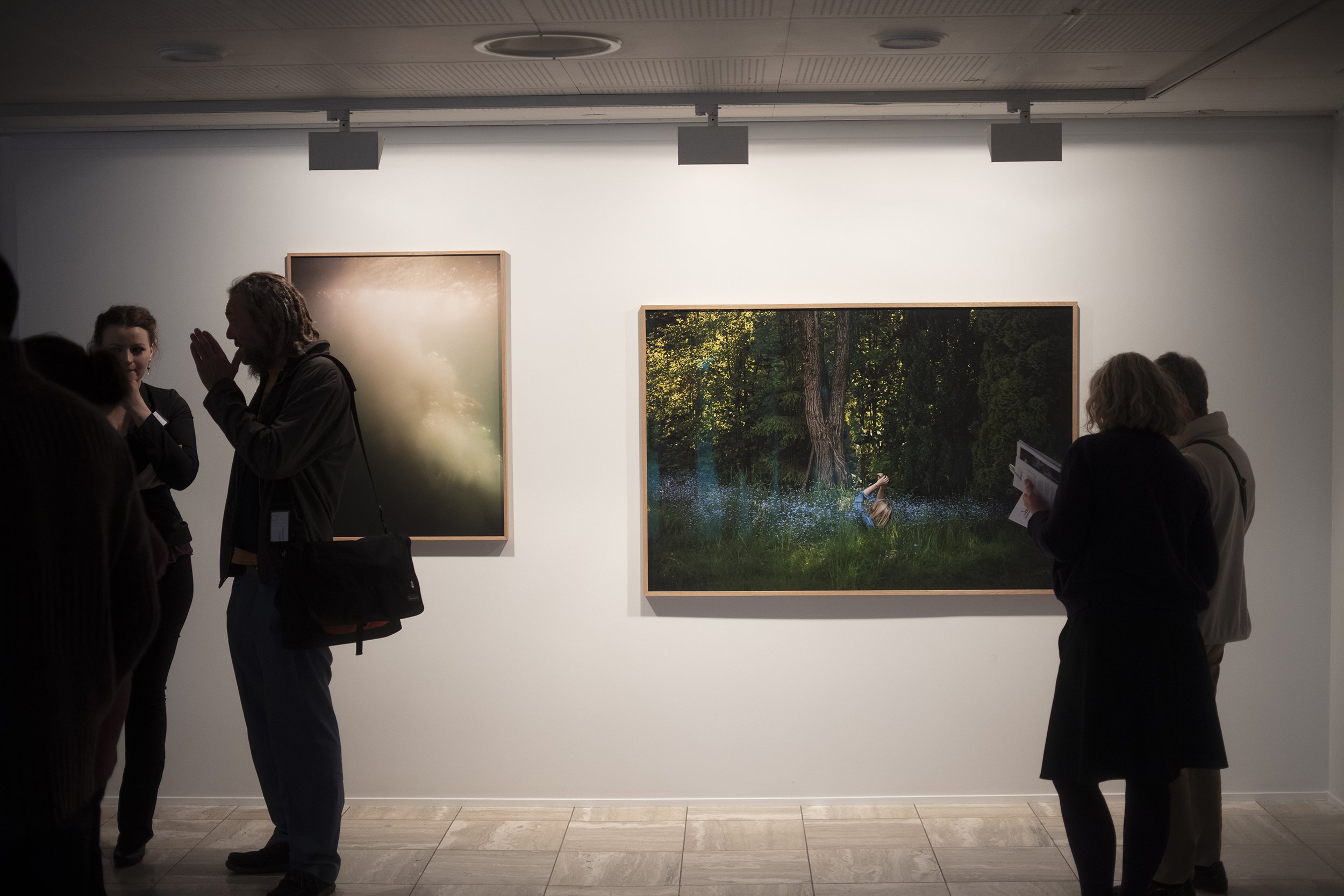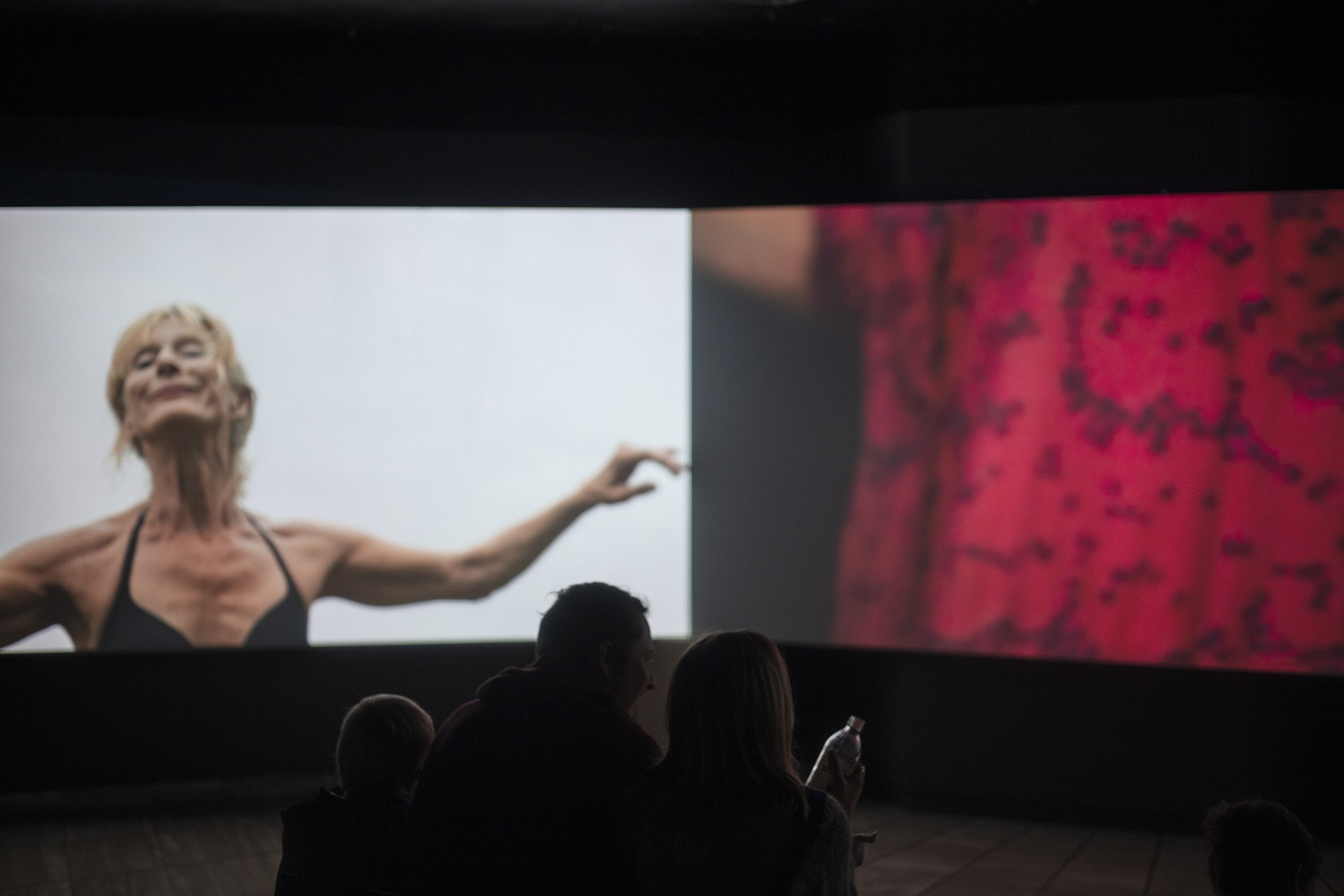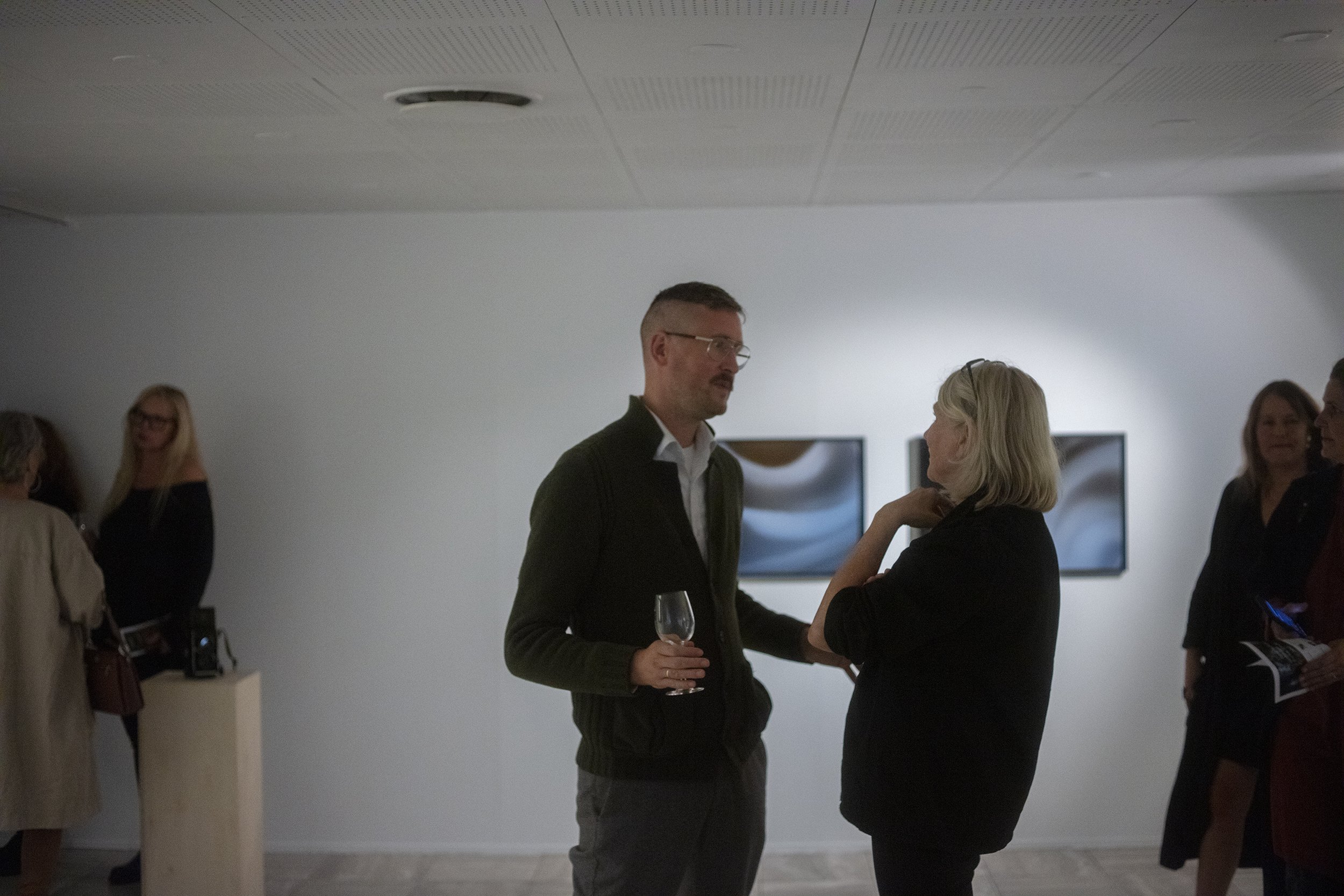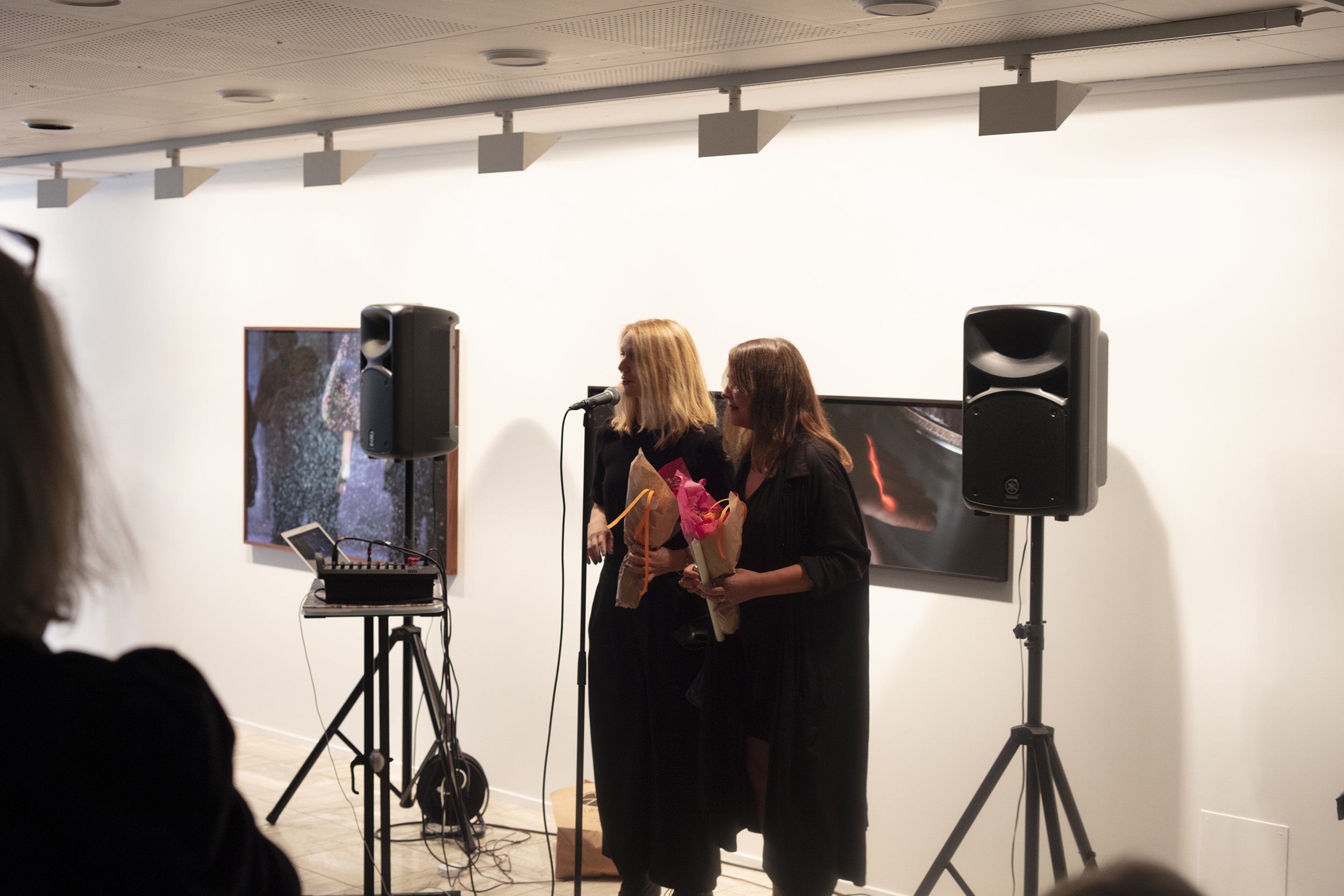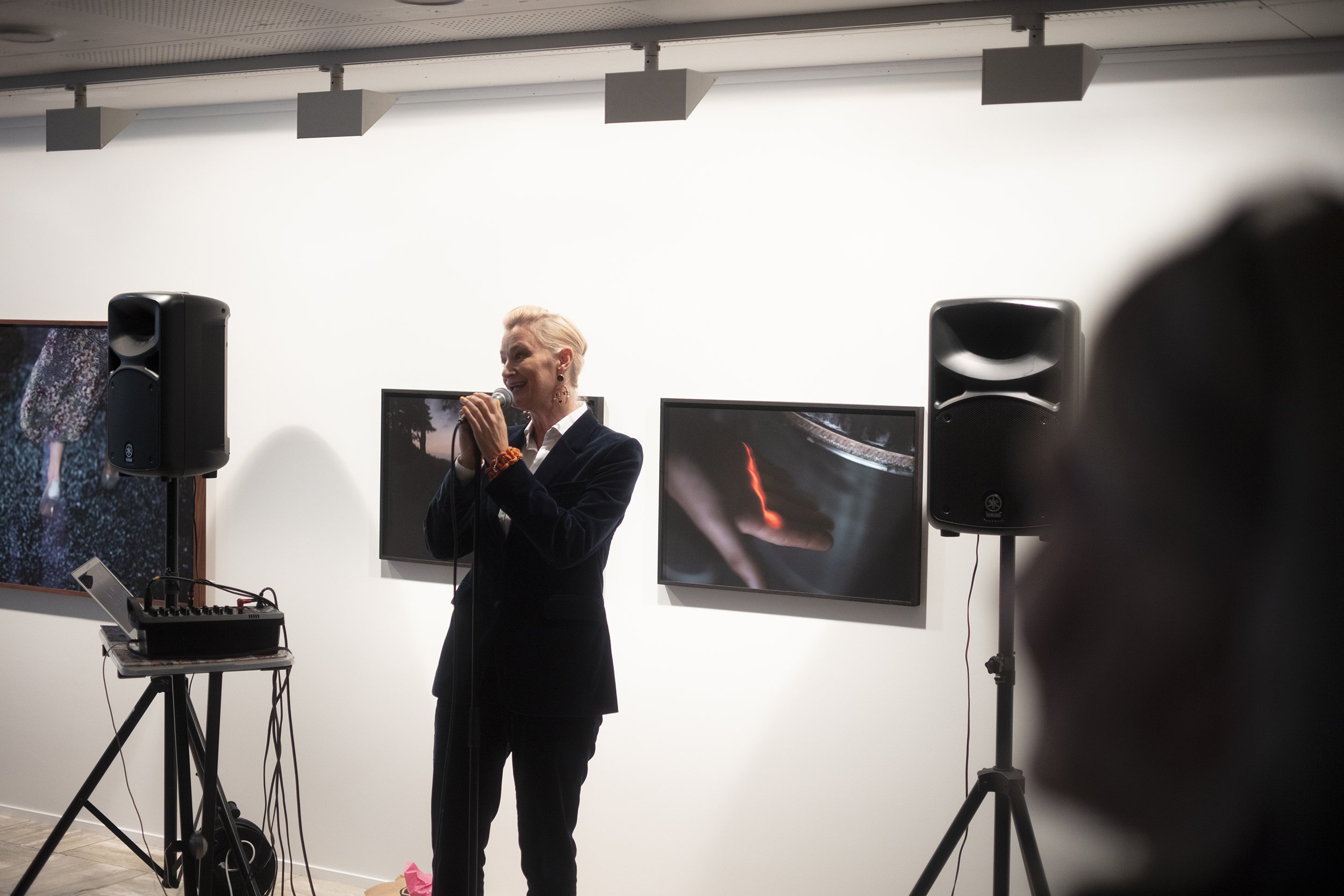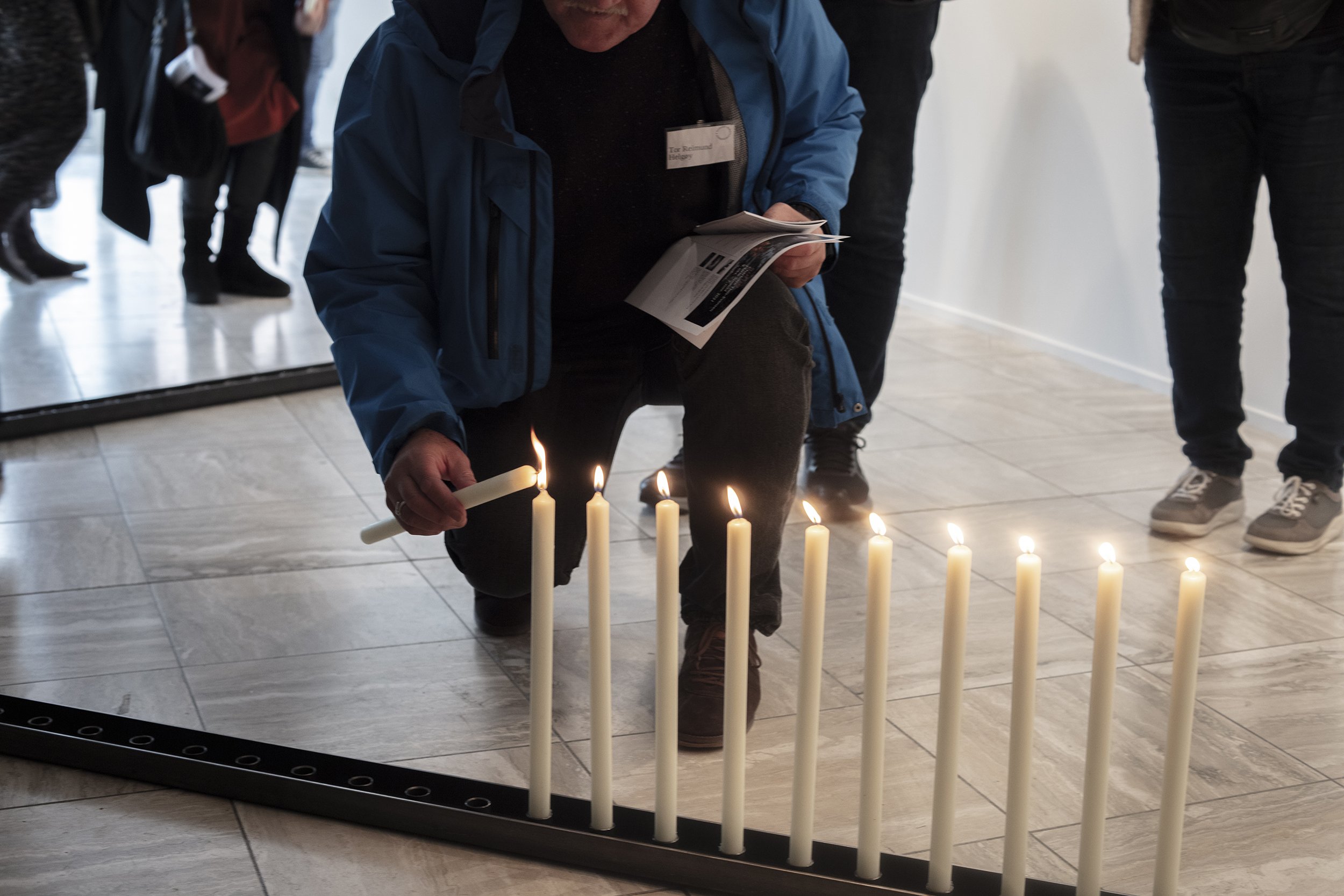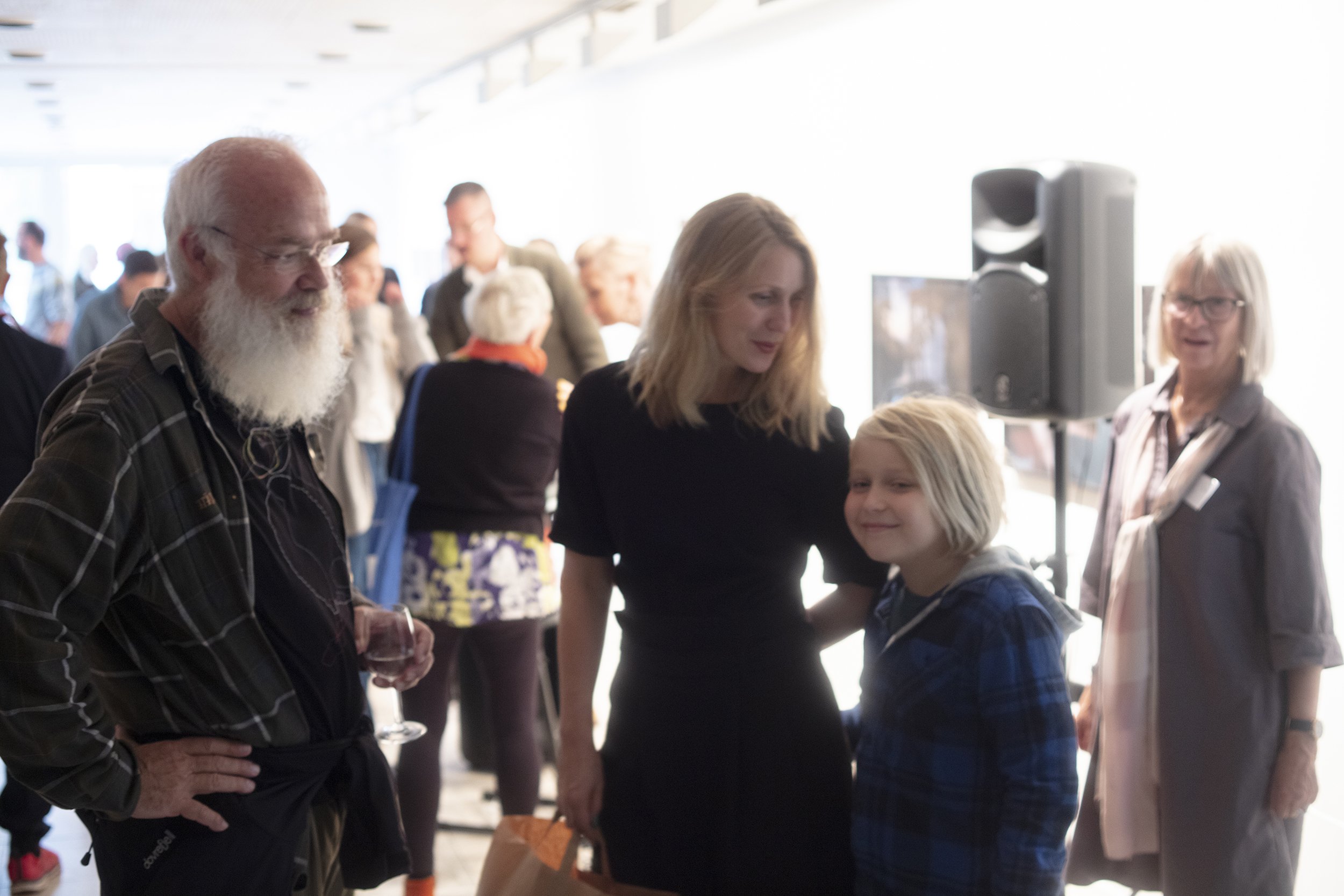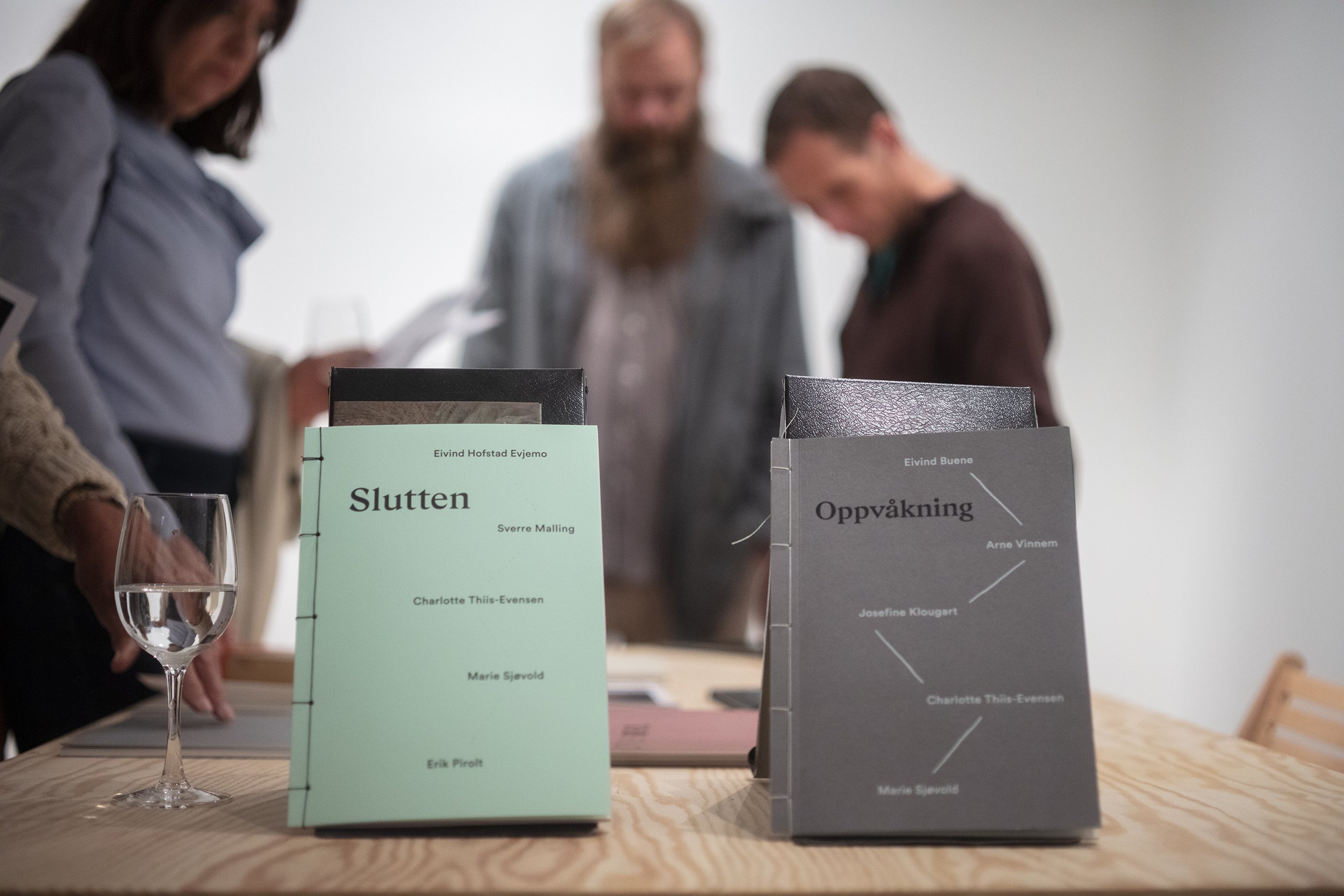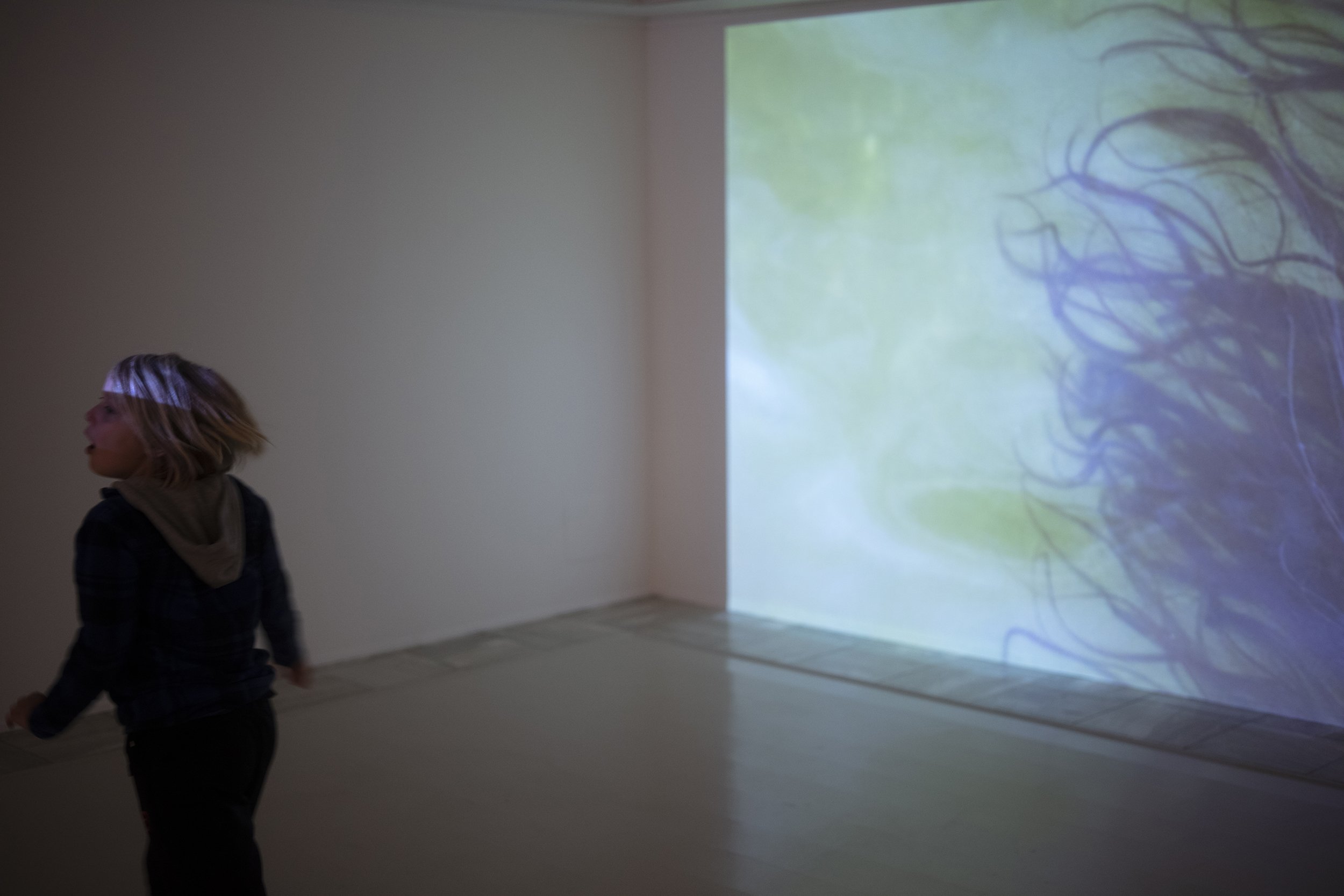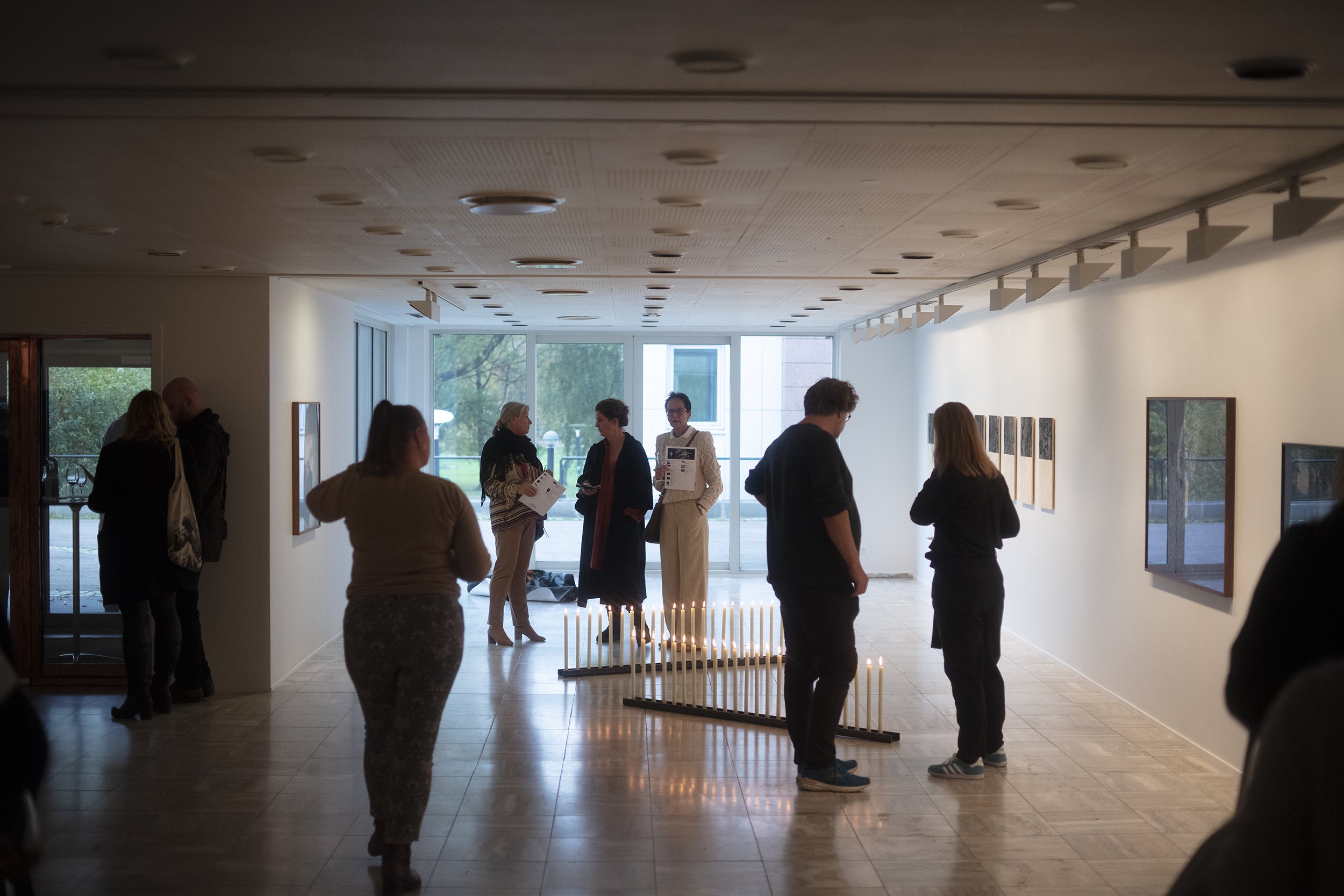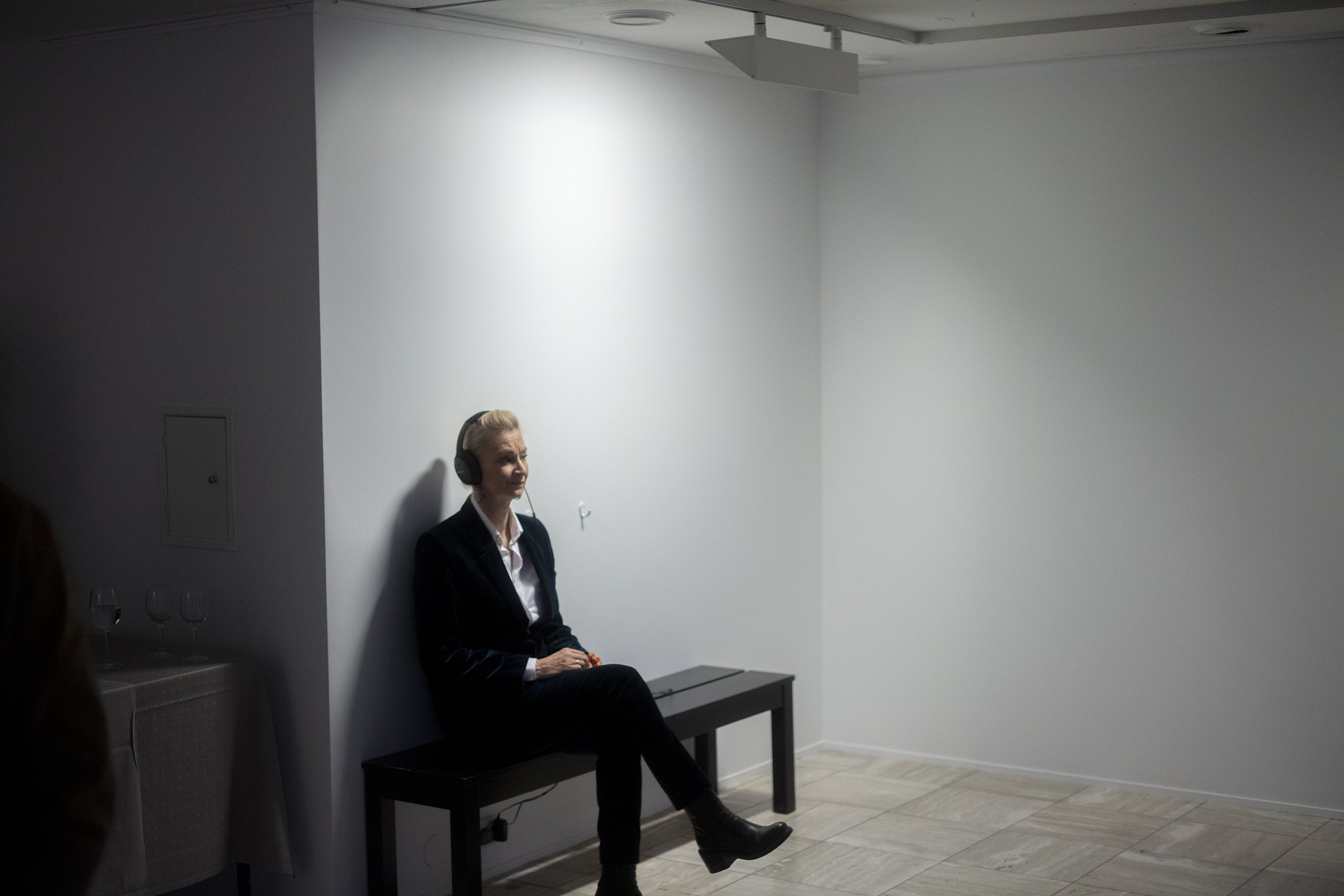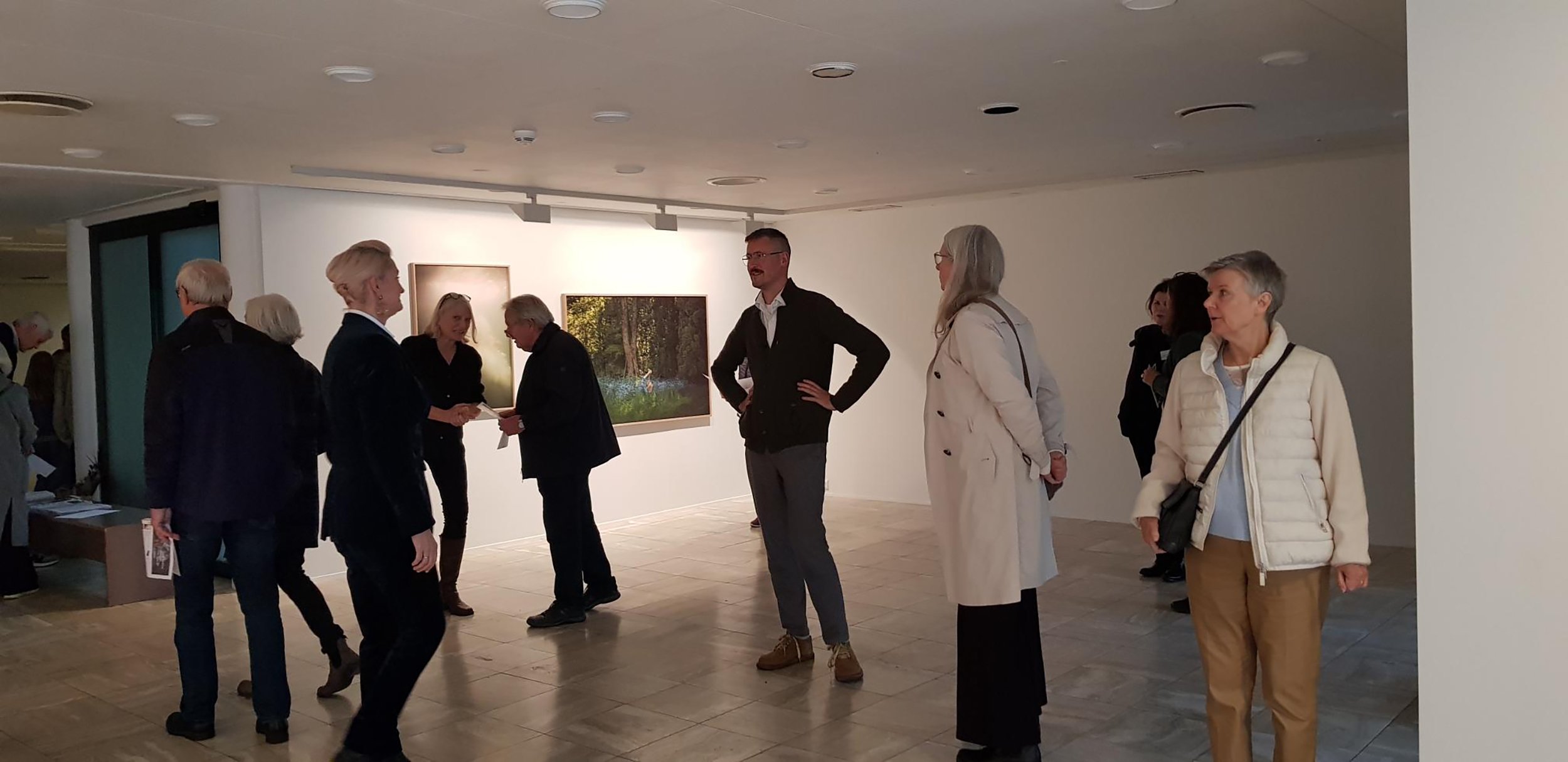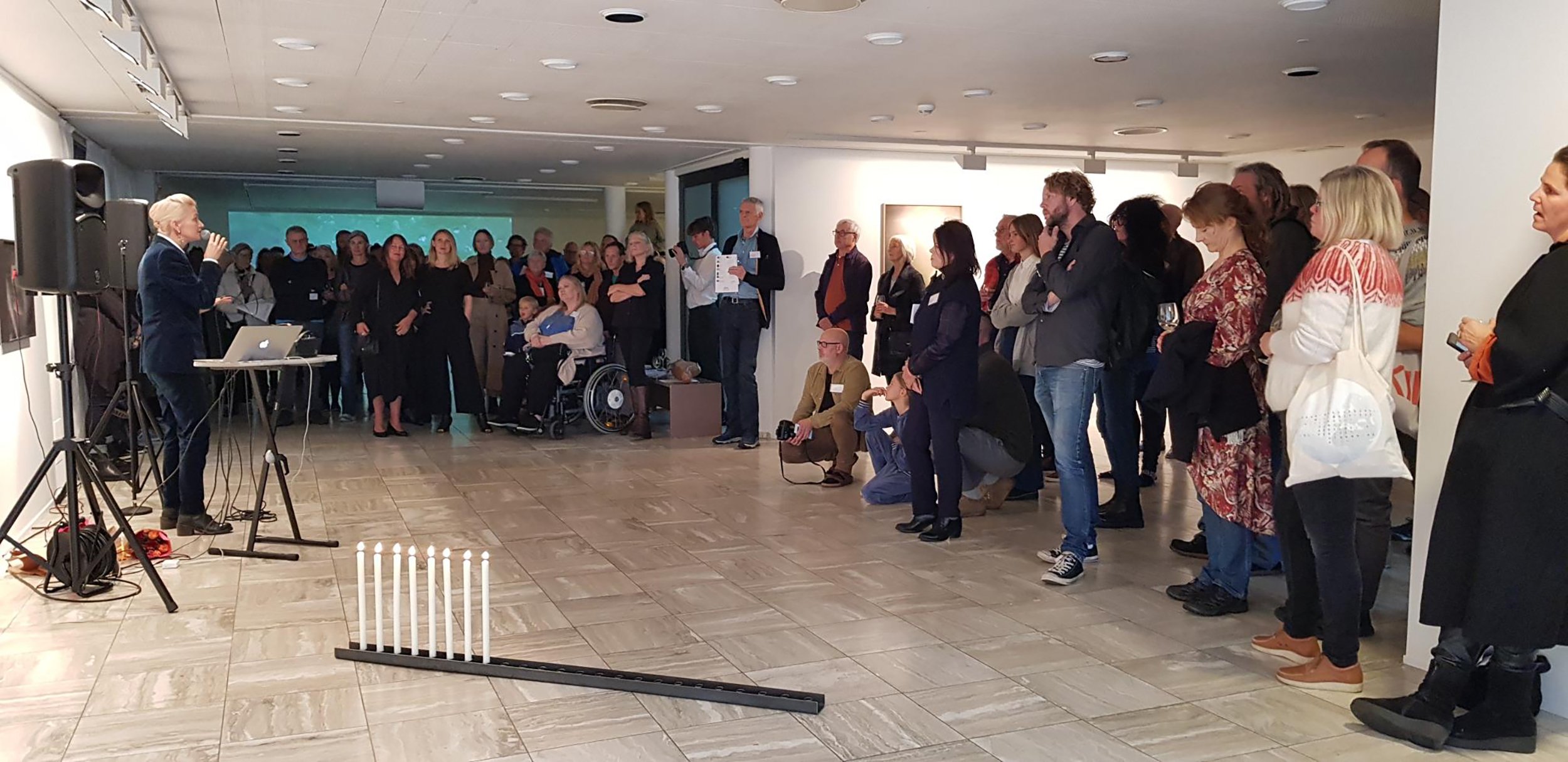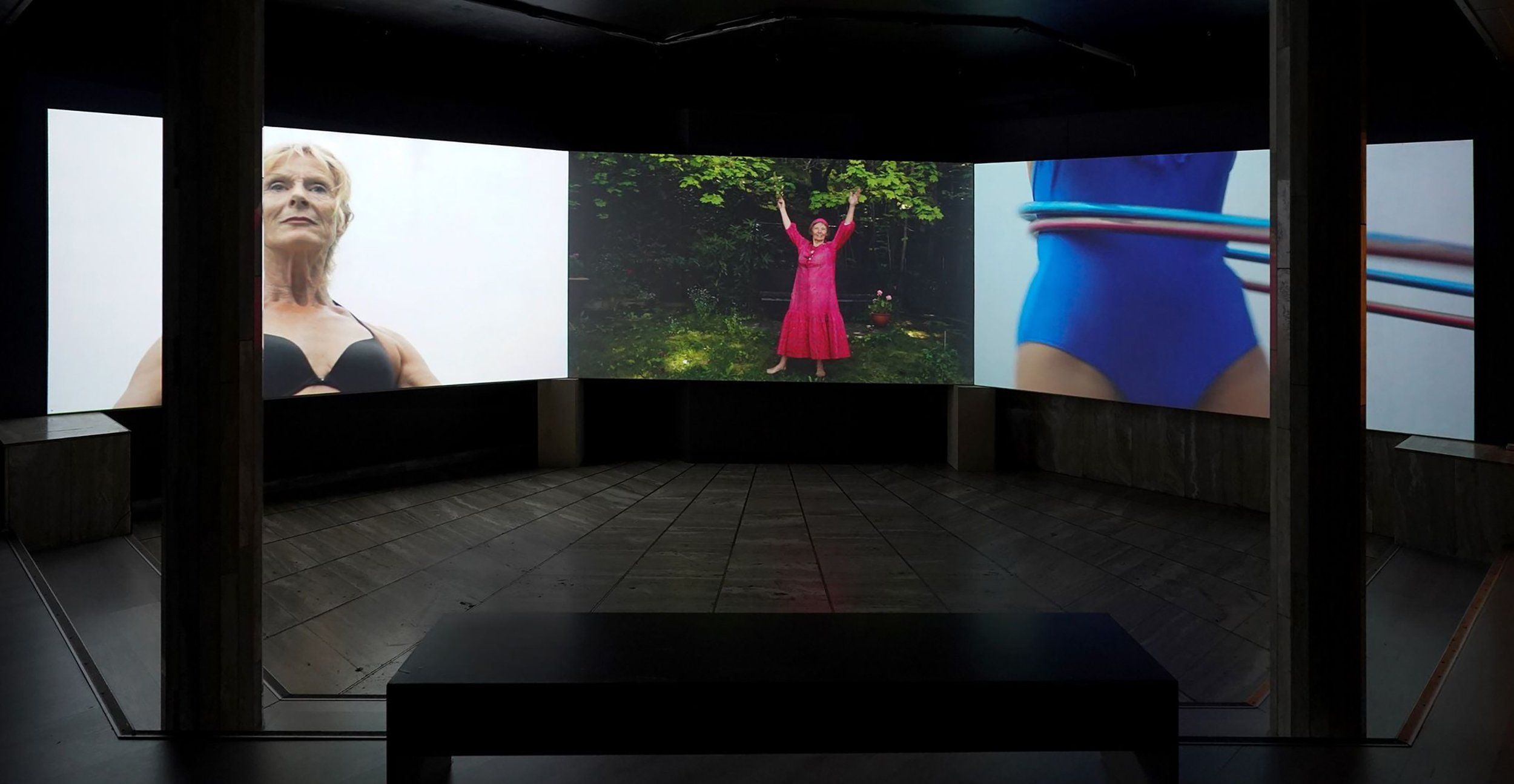The podcast Frilanslivet has made a total of 169 episodes about being independent within the media, arts and culture industry in Norway. I myself follow this podcast and find inspiration in hearing how others work and set up their own working life. This time I have been able to talk about photography, art and time. Thanks to Christina Skreiberg for the invitation and the conversation.
Images From the Book Release at Tronsmo Bookstore
Thank you to everyone that came to the book launch of my latest book How Much Silence Can You Take? at Tronsmo Bookstore. It was such a special evening. Thanks to Frøkedal for the beautiful music and Nina M. Schjønsby for leading the conversation and creating such a special atmosphere. Thanks to Tronsmo Bookstore for hosting. This is the third book I launch there, and I really like how it is becoming a tradition now. Wine, wonderful people, saltines and books.
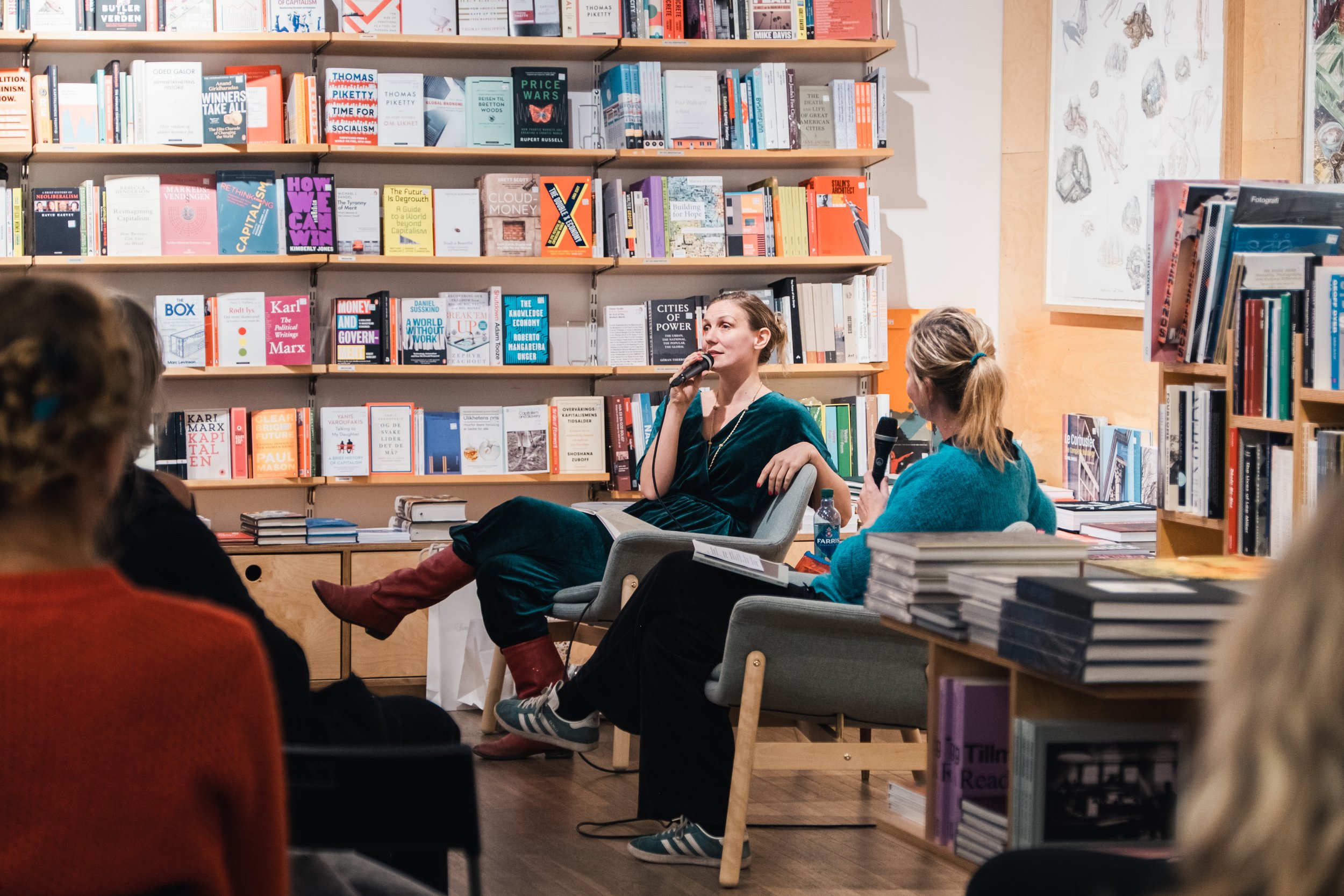
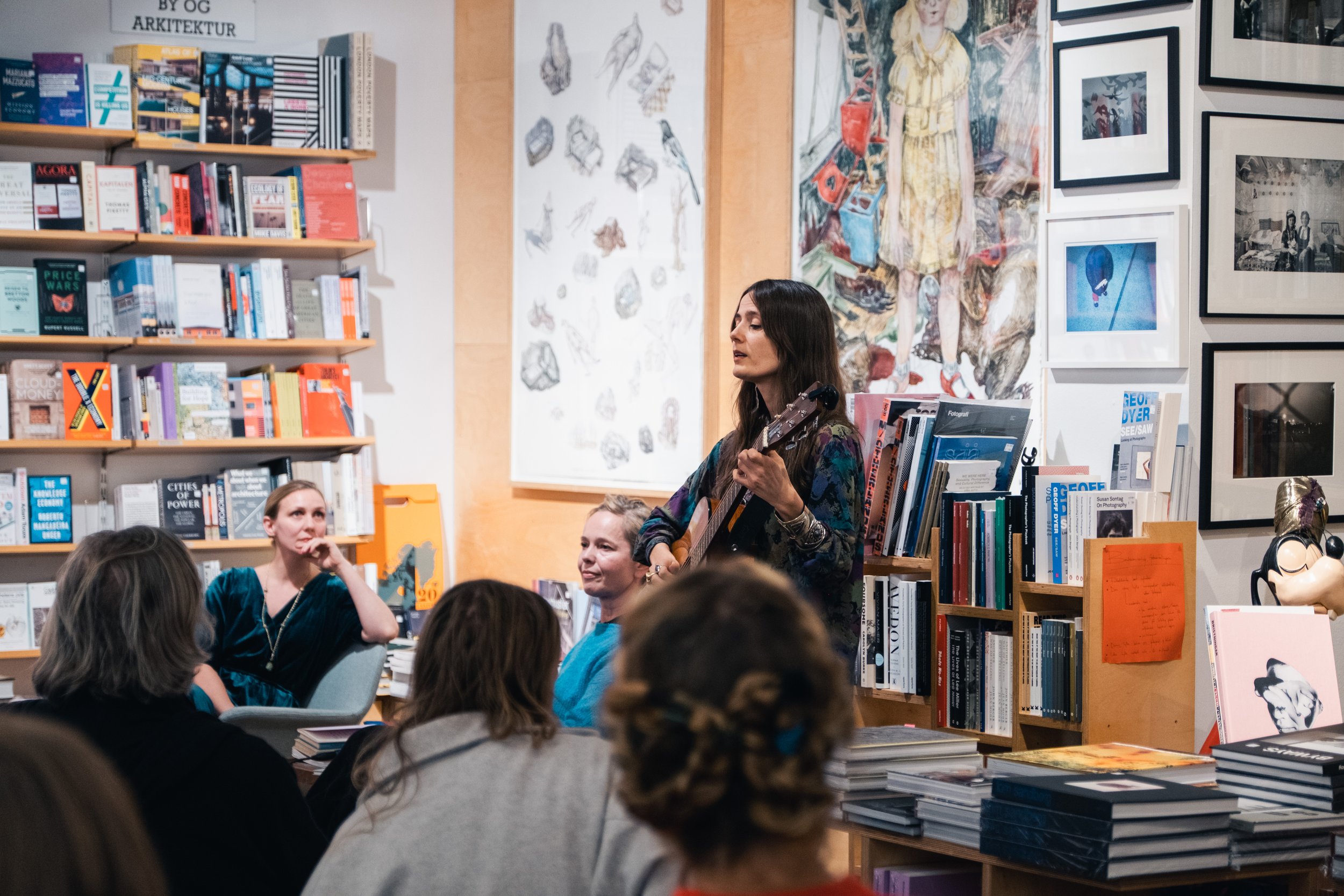
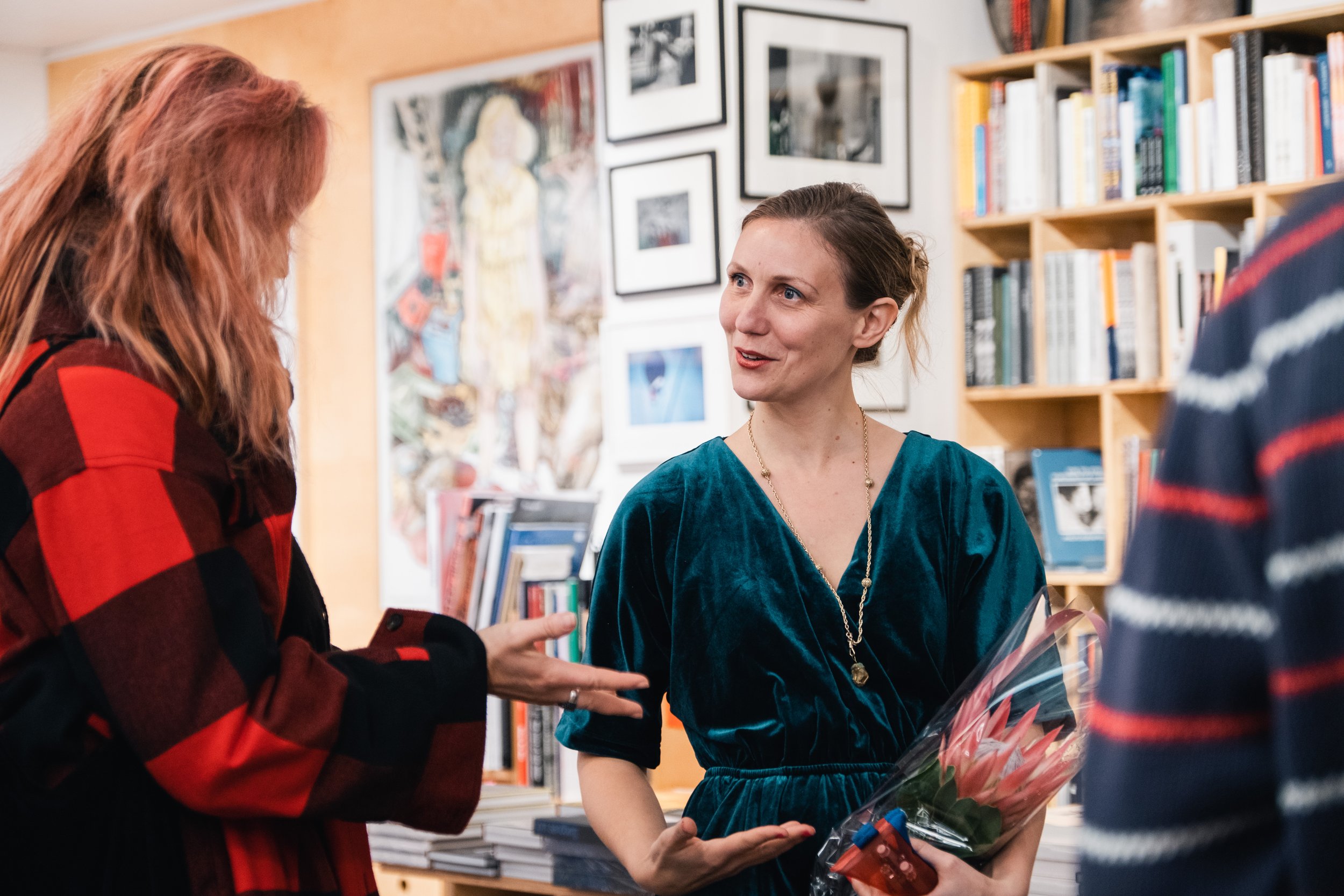
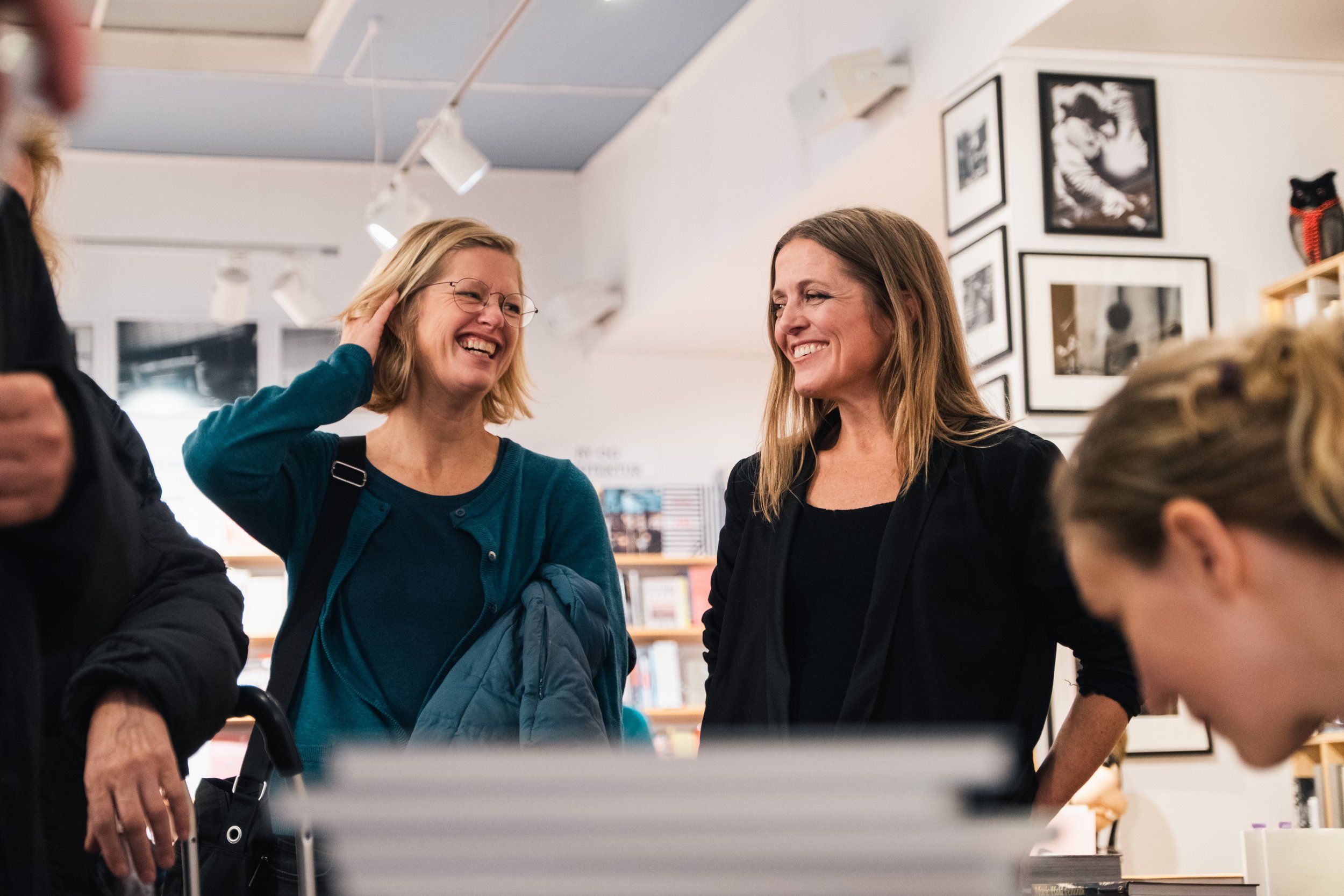
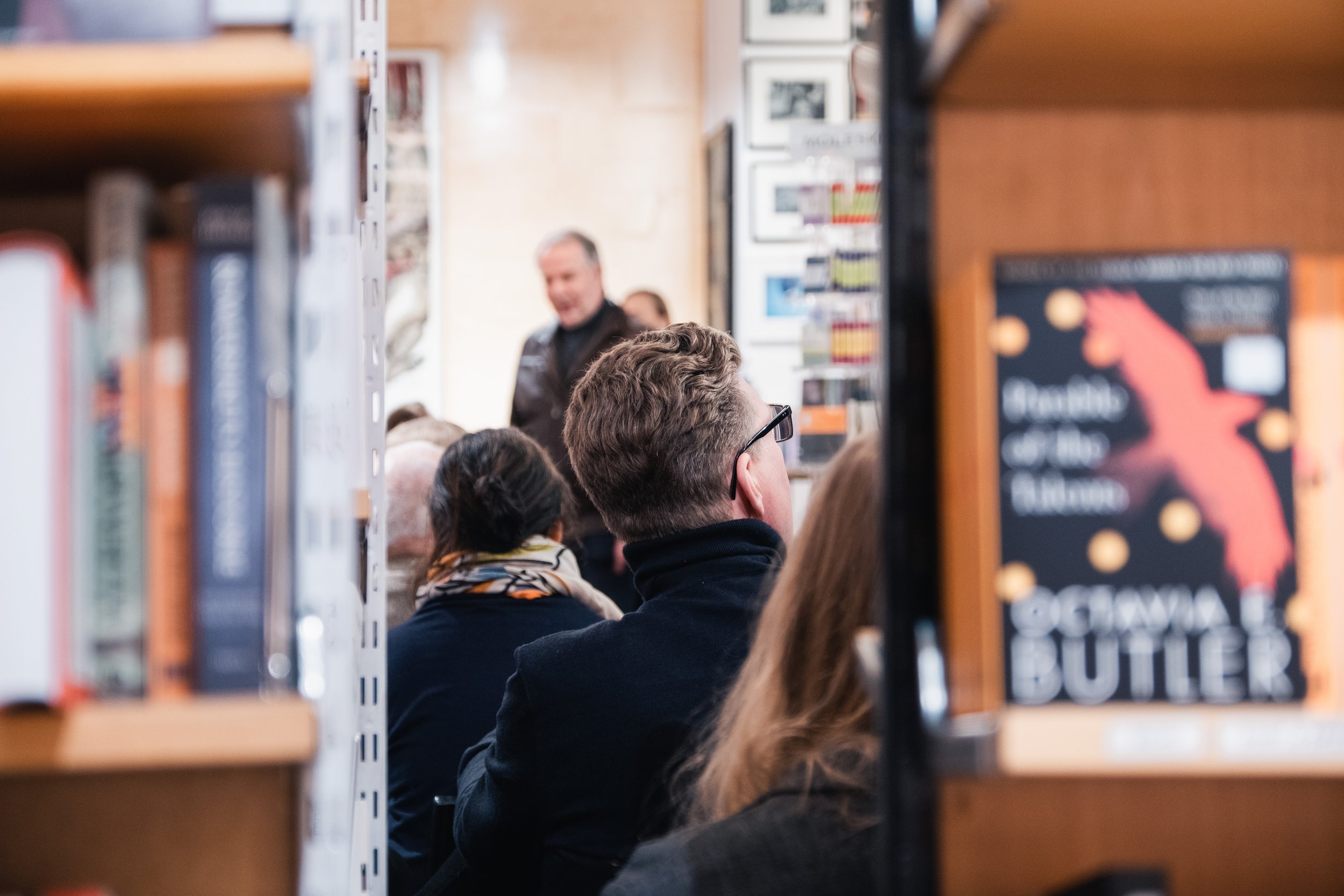
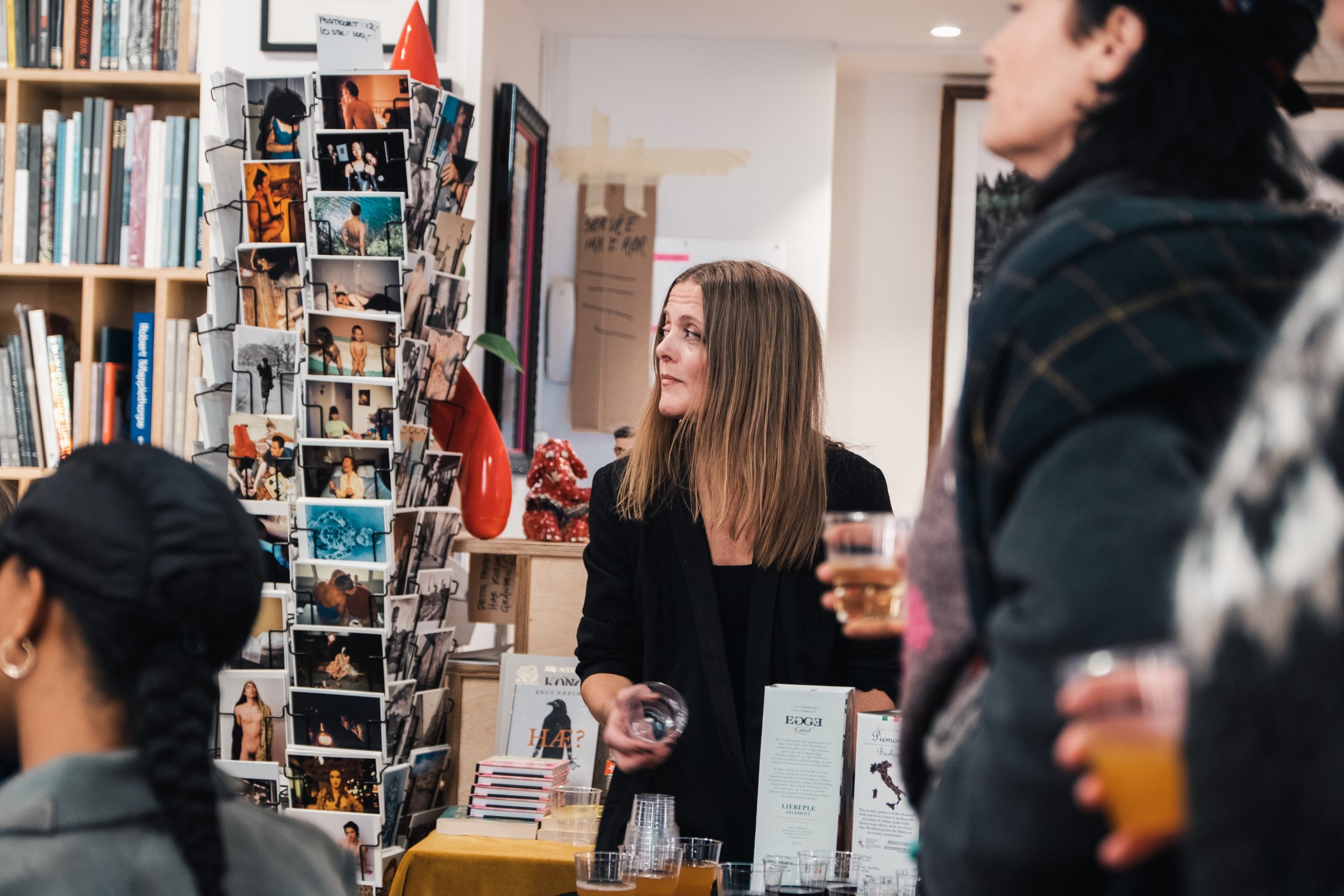
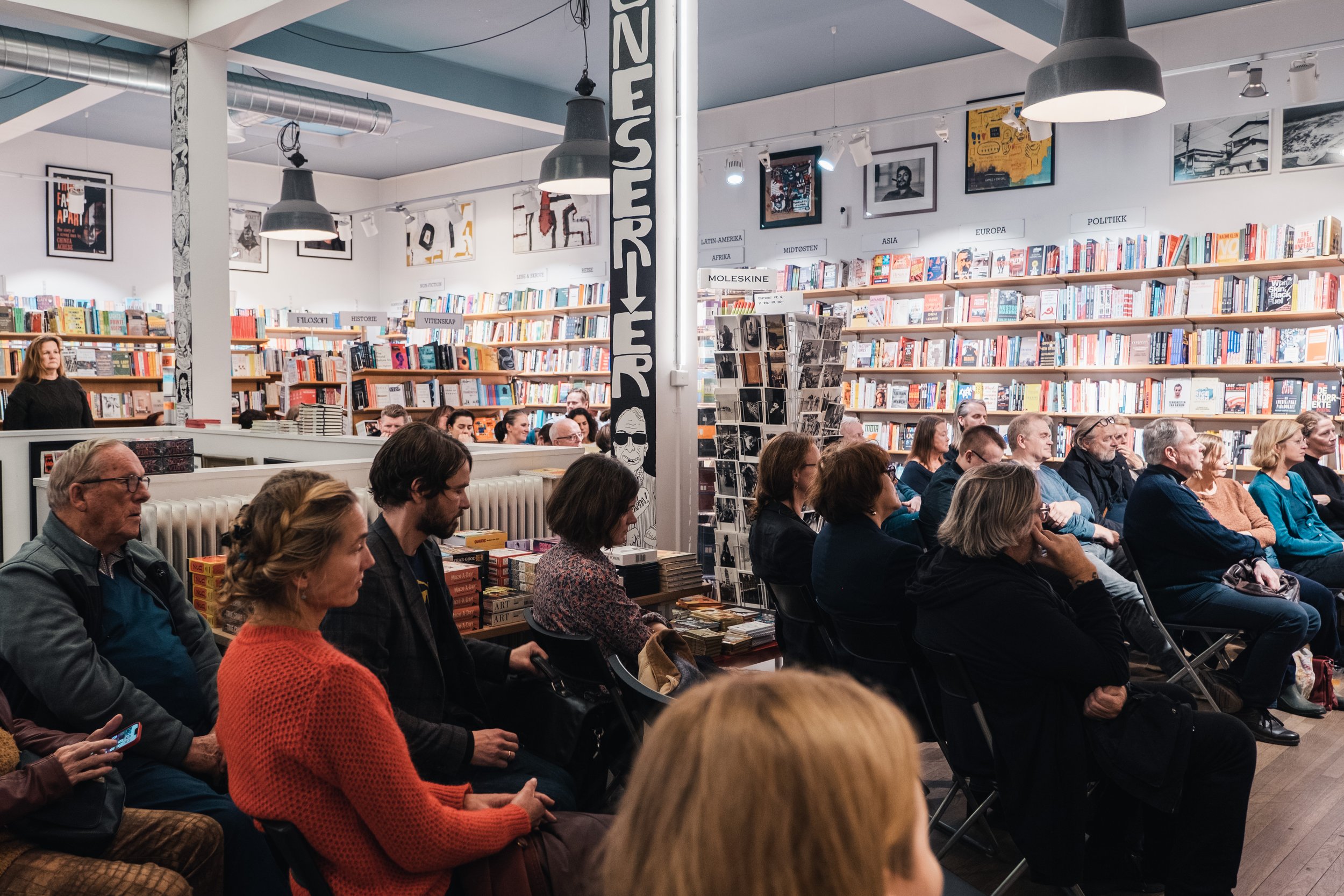
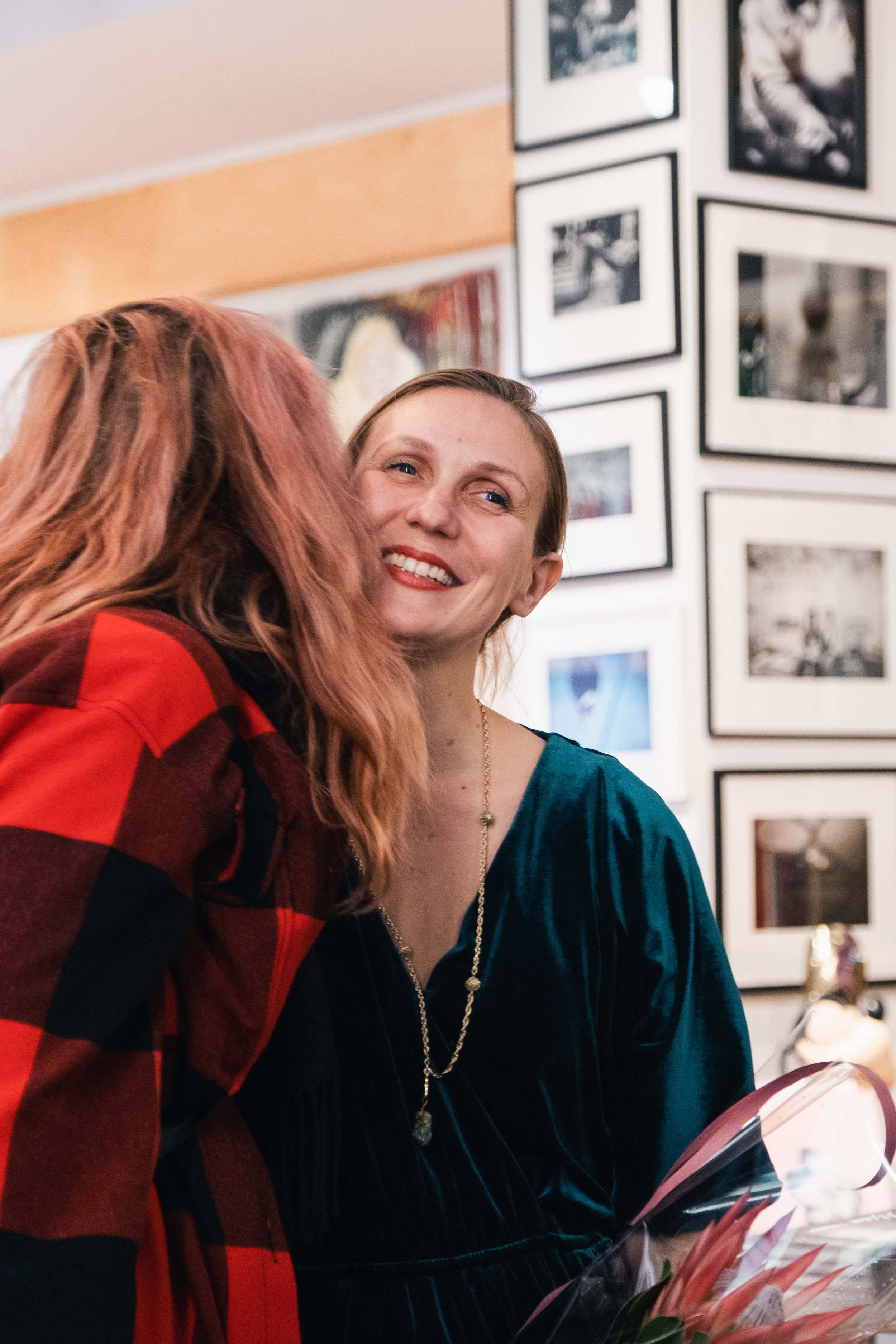
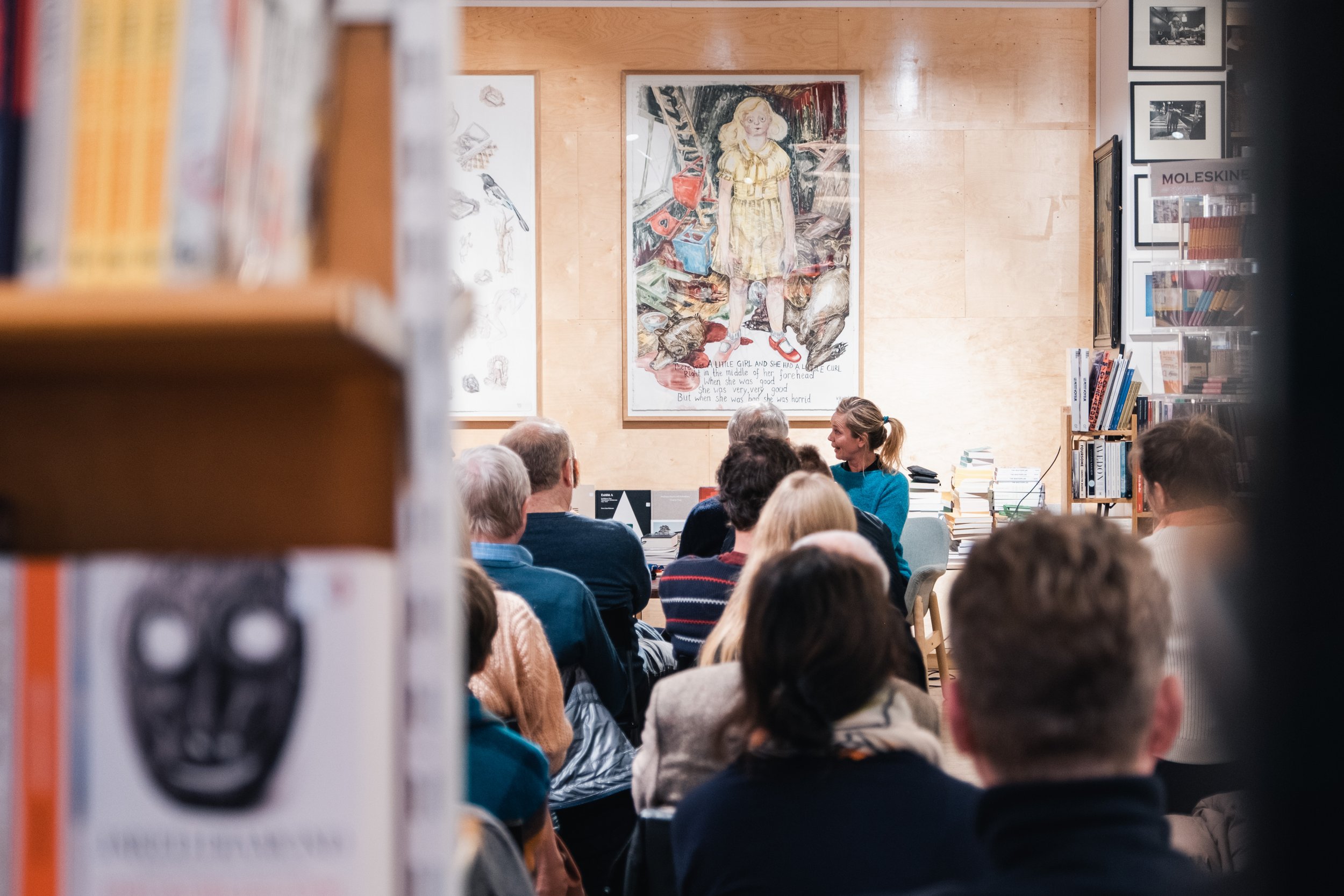
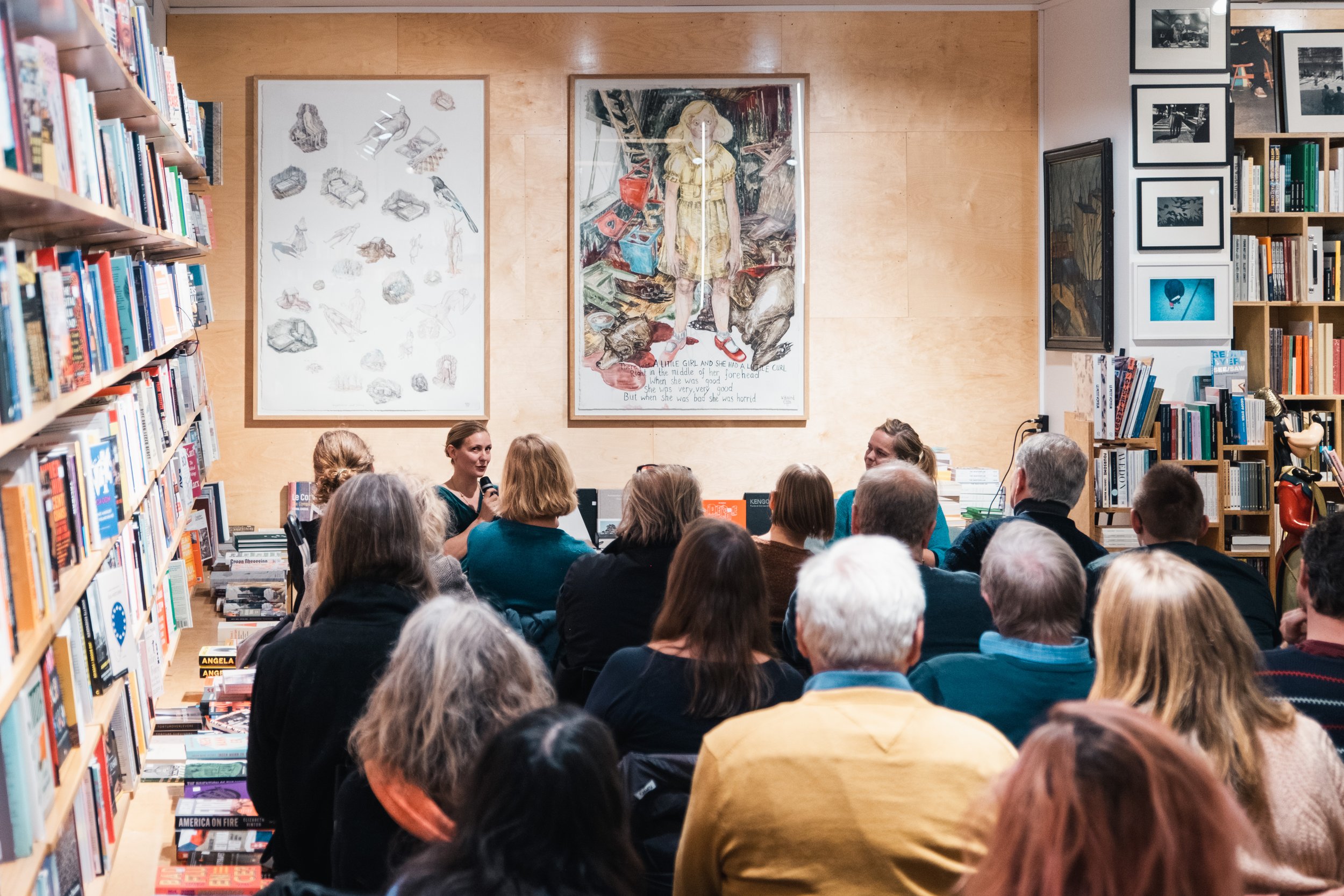
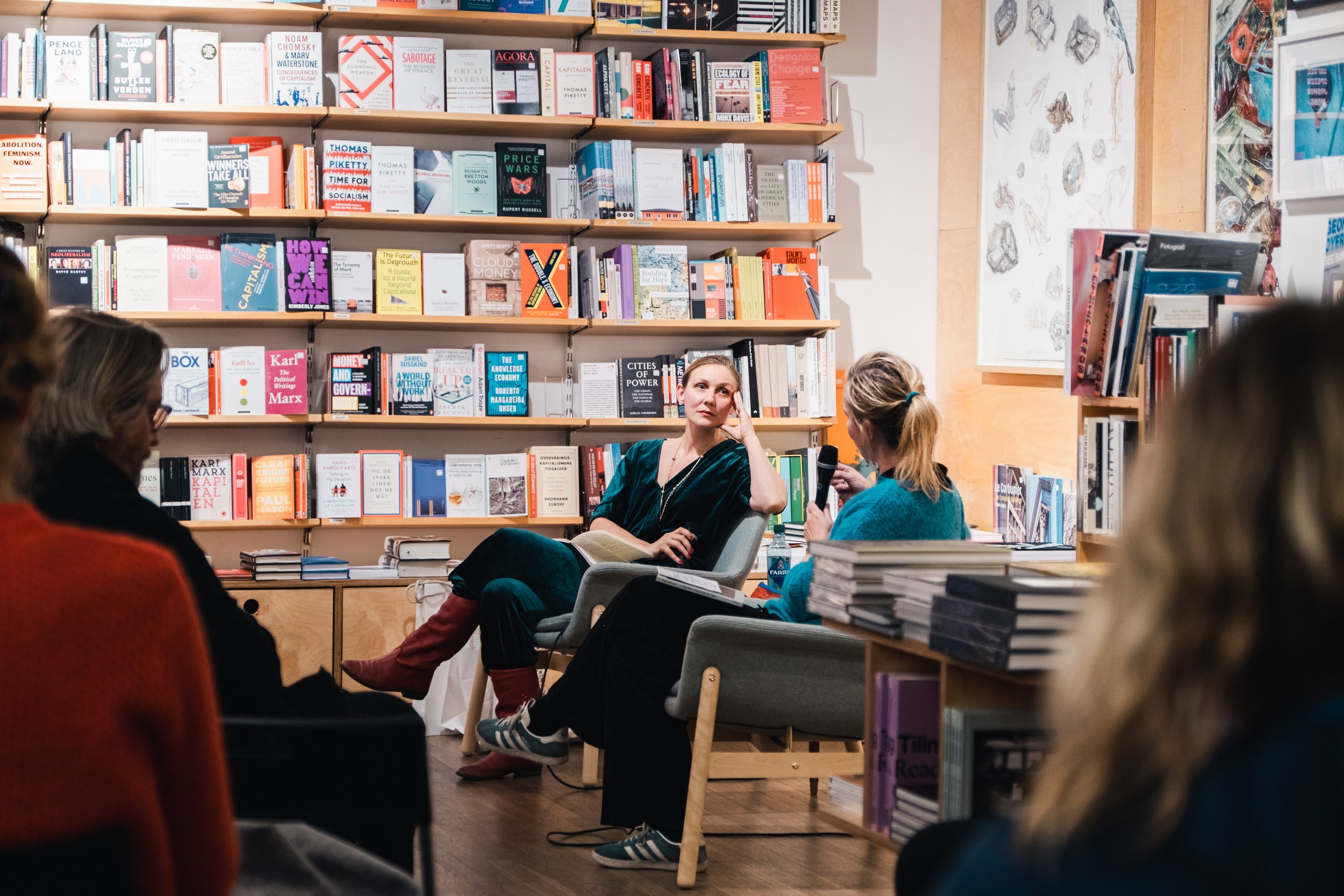
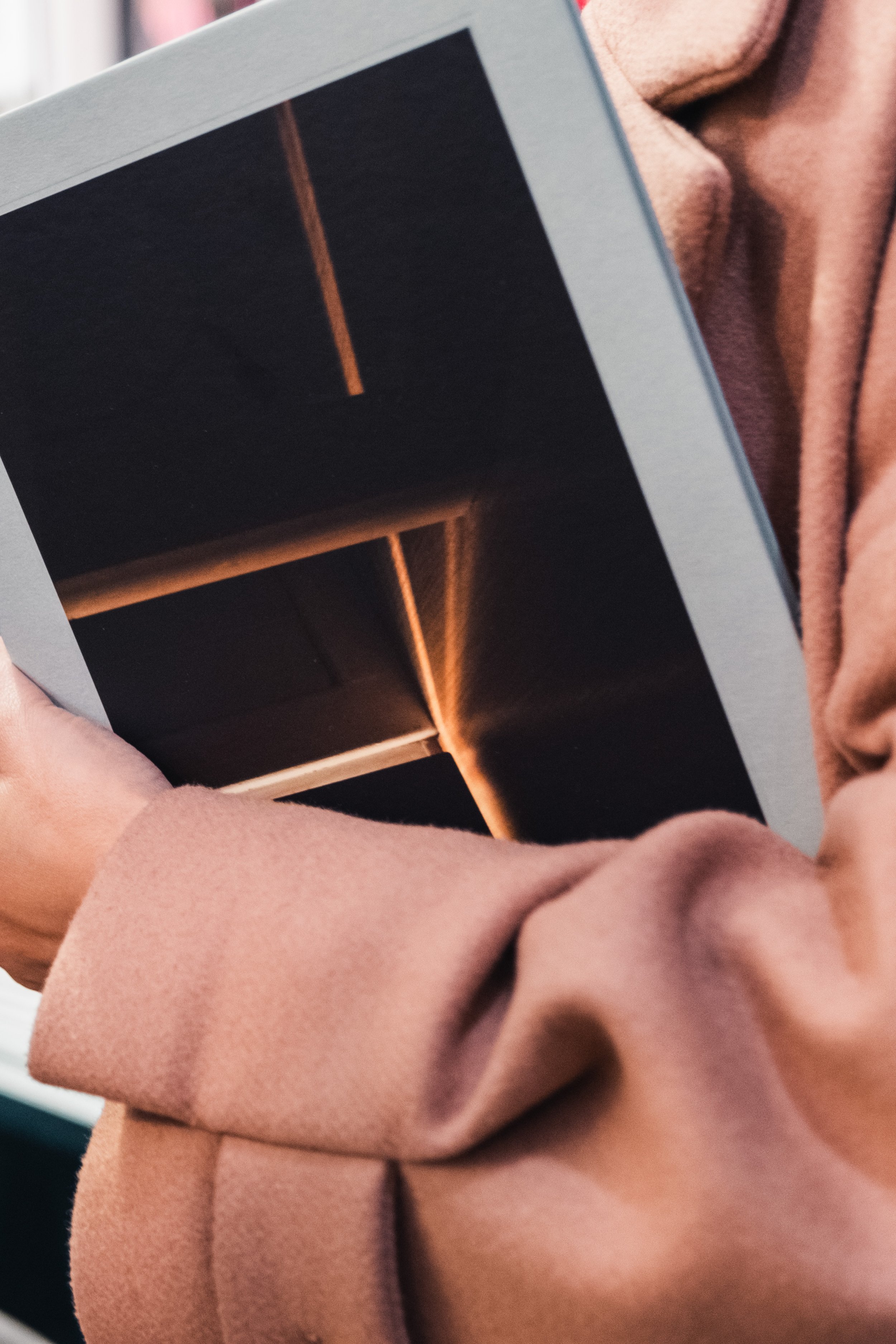
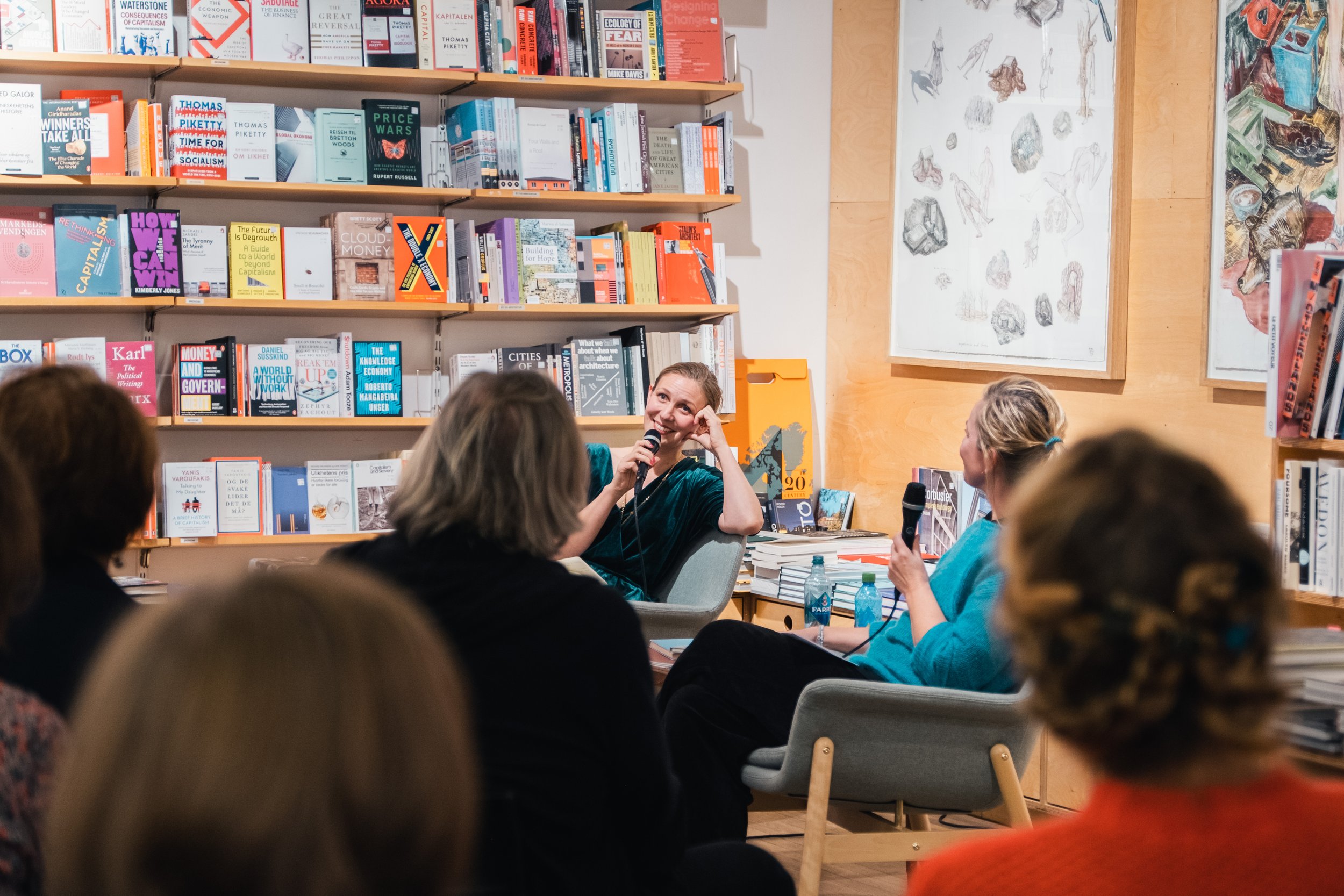
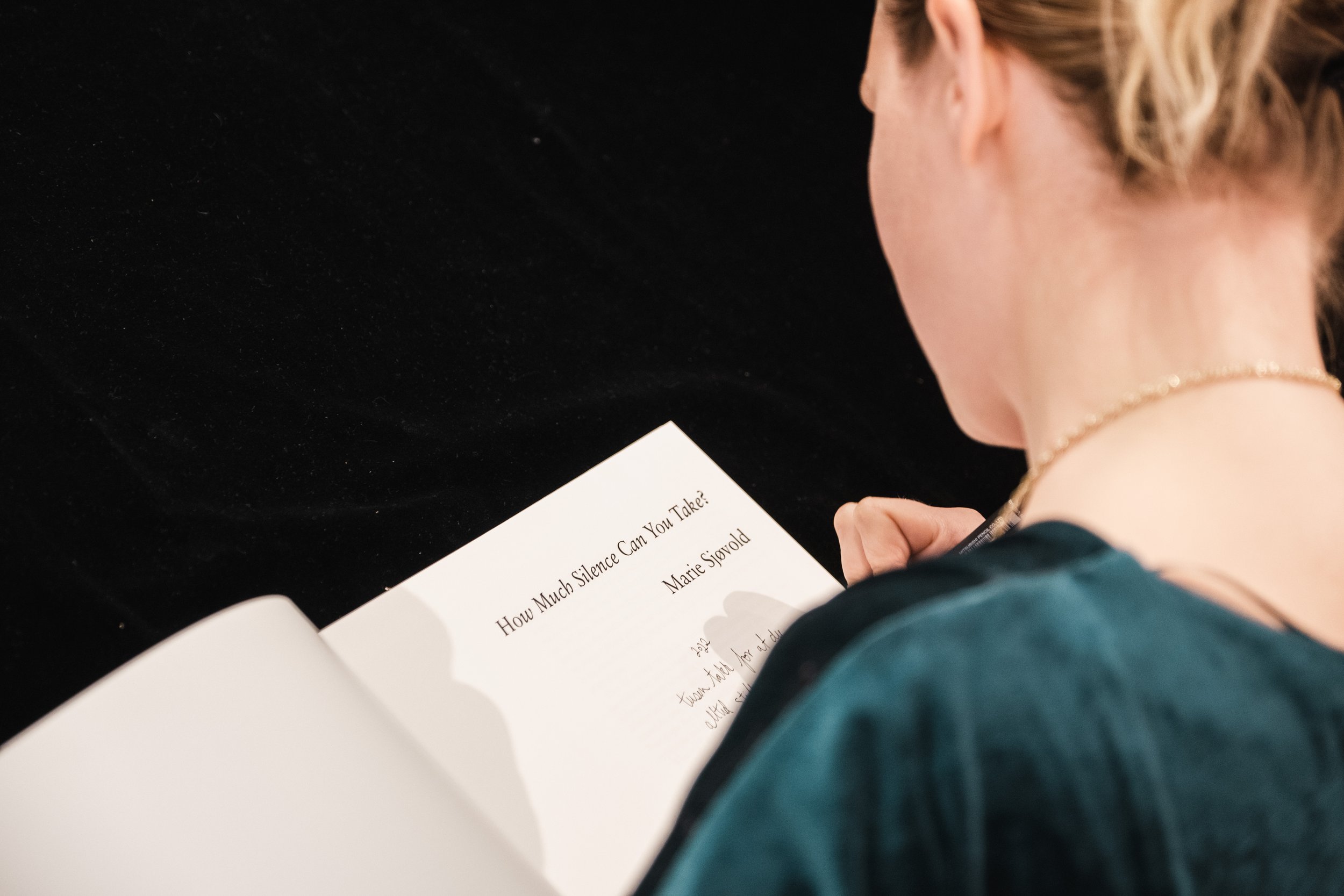
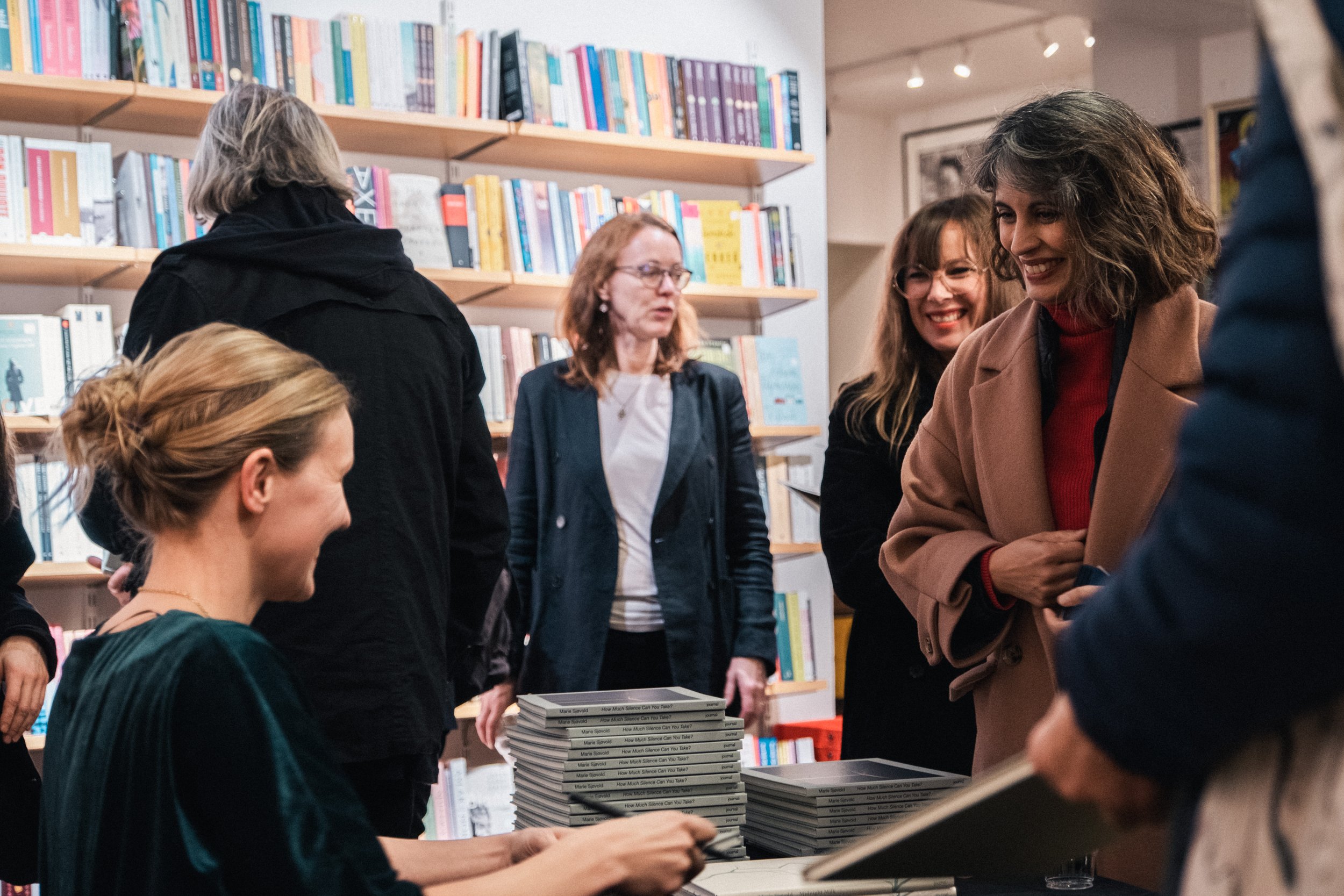
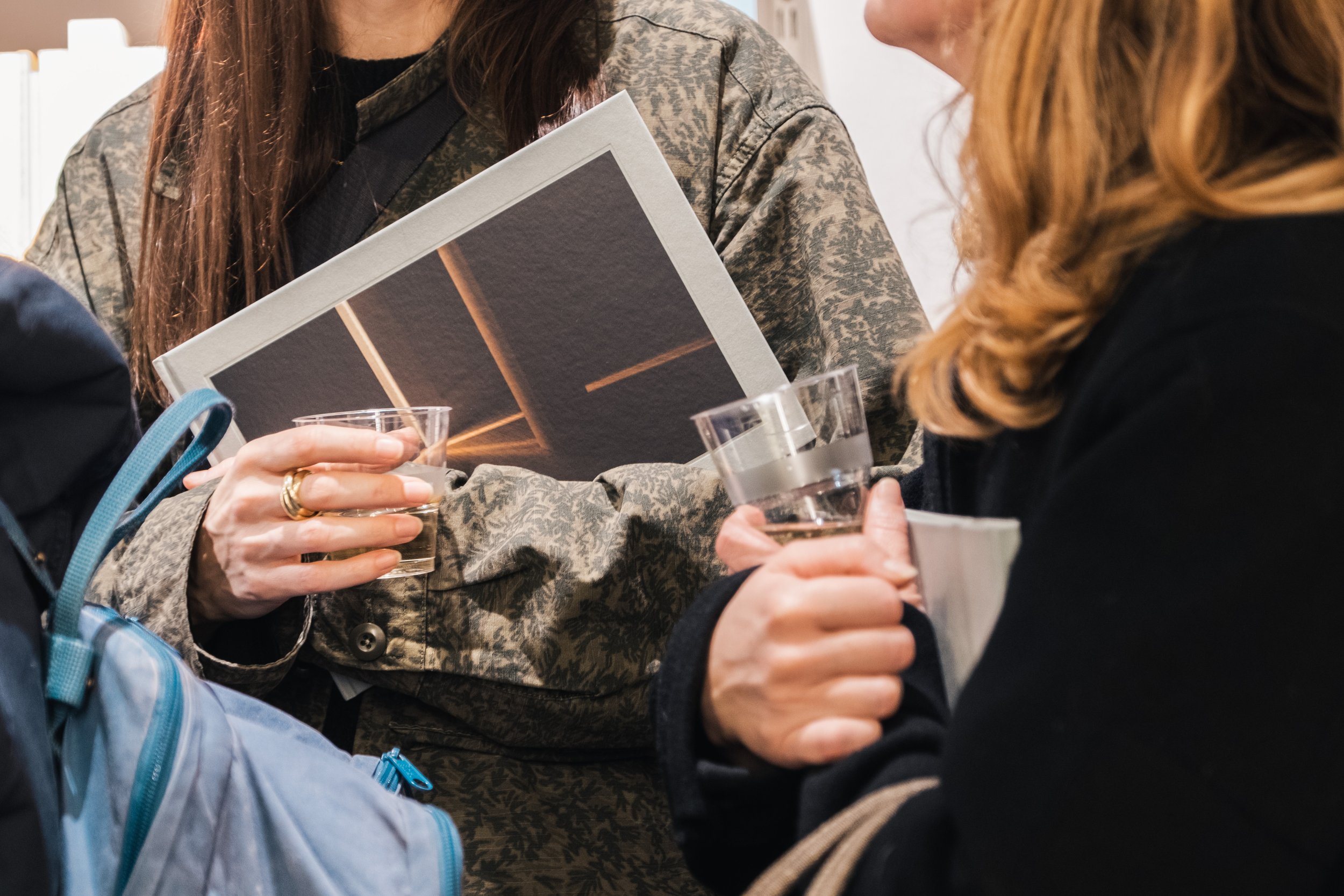
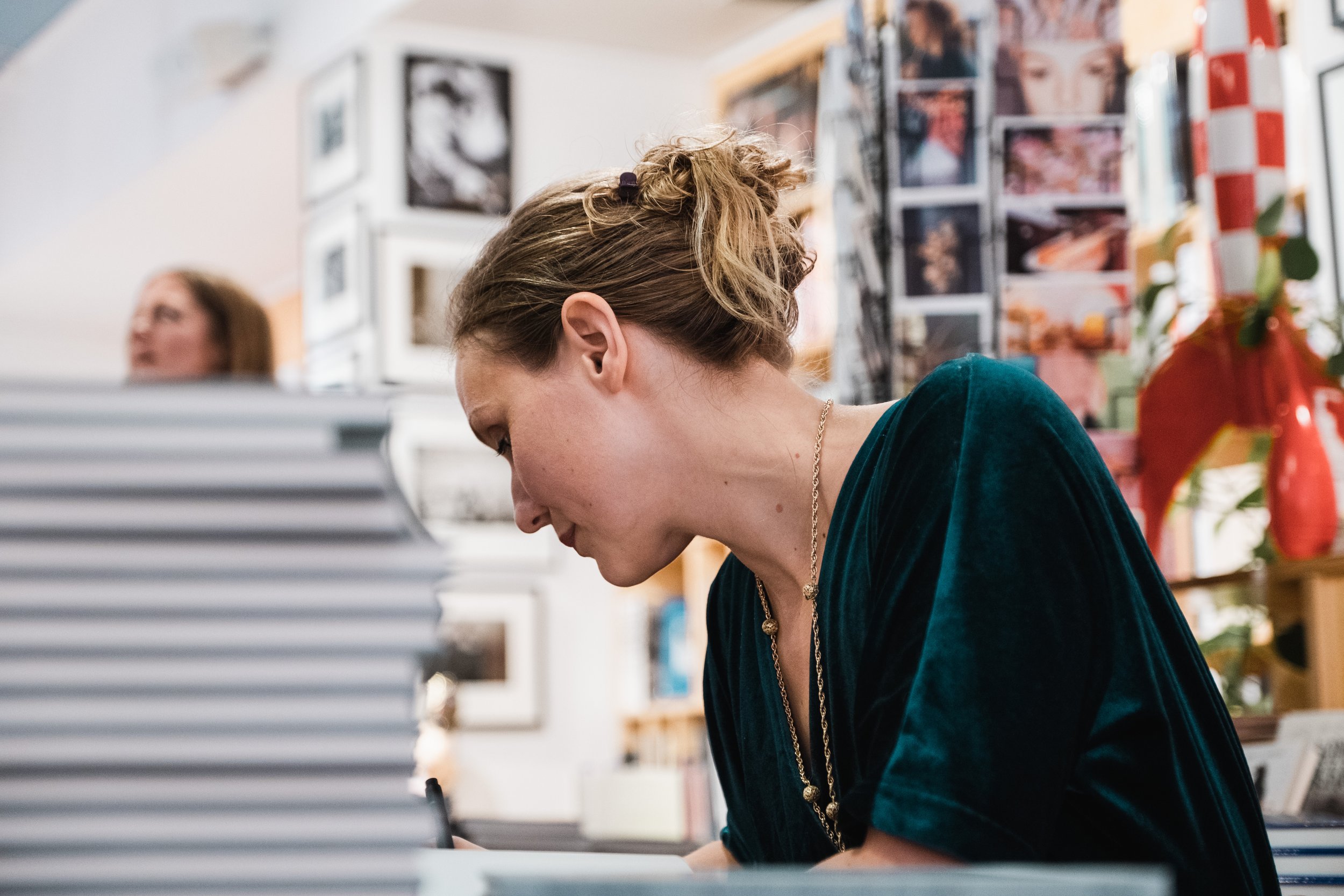
All photos and sound recording by Ingvild Mjøen Sausjord
Invitation to Book Release at Tronsmo: "How Much Silence Can You Take?"
Jeg har gleden av å invitere deg på boklansering den 27.oktober kl.17.00-18.00. En feiring av boken How Much Silence Can You Take?. Det finner sted på den fineste bokhandelen Tronsmo i Universitetsgata 12 i Oslo. Nina M. Schjønsby og jeg kommer til å ha en samtale om boken, mens du kan lene deg tilbake med noe godt i glasset. Musiker Frøkedal kommer og spiller låten Cracks. En låt som jeg hørte mye på da jeg fotograferte til boken.
Er det noe du ønsker å høre om fra prosessen med denne boken, så bare send meg en mail, så tar vi med dette i samtalen.
Det vil betyr svært mye for meg å se deg der!
———
I am happy to invite you to my book release the 27th of October 1700-1800. A celebration of my book How Much Silence Can You Take?. The release will take place at the beautiful book store Tronsmo, Universitetsgata 12 in Oslo. Nina M. Schjønsby and I will hold a conversation about the book, while you can lean back and enjoy. Musician Frøkedal is also coming, and will perform the song Cracks - a song I listened to a lot while taking the photographs becoming this book.
If there is something you would like to hear from the process behind the book, feel free to send me an email, and we will bring it into the conversation.
I hope to see you there!
If you want to buy art from me, you can read about it here
All my photographs are for sale. Every print is a limited edition. I will gladly help you find the frame that is right for you and the photo.
If you have questions, please don’t hesitate to contact me at info@mariesjovold.no or gallerist Annine Birkeland at Gyldenpris Kunsthall annine@bcap.no
I Feel So Close To Everything I Lost # 17 (2021)
100 x 150 cm
I Feel So Close To Everything I Lost # 18 (2021)
75 x 100 cm
Lilacs and Scissors (2023)
37 x 60 cm
Photographic sculpture of I Feel So Close To Everything I Lost # 24 (2021)
13 x 19 cm photographic sculpture in a glass case
I Feel So Close To Everything I Lost # 13 (2021)
100 x 150 cm
Vårutstillingen 2022 at Fotogalleriet in Oslo
THE SPRING EXHIBITION/VÅRUTSTILLINGEN AT FOTOGALLERIET in Oslo.
June 26 is the last opportunity to see Vårutstilligen 2022 at Fotogalleriet in Oslo. This year's exhibitors are Einar Mølmann Fuglem, Marte Gunnufsen, Daniel Vincent Hansen, Klara Sofie Ludvigsen, Mario de la Ossa, Ethan Rafal, Ulla Schildt, Birgitte Sigmundstad, Marie Sjøvold, Jessica Williams og Verena Winkelmann. The exhibition is judged and curated by Sofie Amalie Klougart, Marianne Bjørnmyr and Bjørn-Henrik Lybeck.
The spring exhibition is an annual artist-judged group exhibition dedicated to showing photographic art that is relevant and representative of today's contemporary artists. The exhibition is established by the Association of Free Photographers (FFF) and has been shown at the Photo Gallery since 1988. The spring exhibition has open submission.
Read more about the spring exhibition here: https://www.varutstillingen.no/
Here you can read Nina Strand's review in Kunstavisen.no https://kunstavisen.no/artikkel/2022/naturens-gang
Opening at Bomuldsfabriken
On one of the brightest summer evenings of the year, 25 June 2022 at 16.00, you can find me at Bomuldsfabriken in Arendal during the opening of the exhibition “All the Lonley People together” with Tom Burr (USA), Richard Aldrich (USA), Fin Serck-Hanssen (NO), Geir M. Brungot (NO), Marie Sjøvold (NO), Ayo Akinsete (USA), Tore Magne Gundersen (NO), Aaron Young (USA), Piero Golia (IT), Veronica Brovall (SE), Andrea Scholze (NO) and Christina Leite (NO).
Curators Tone Lyngstad Nyaas and Åse Kamilla Spjelkavik Aslaksen write this about the exhibition:
Loneliness, described by many researchers and authors as the biggest pandemic of our time, is the theme explored through a presentation by 12 international and Norwegian artists in All the Lonley People. A broad presentation of installations, painting, photography and sculpture is shown. Isolation and exclusion is a central theme that refers to the individual's vulnerability. Many works discuss loneliness related to, among other things, Covid -19, social relations, nature and urban spaces.
The exhibition runs until 28 August 2022.
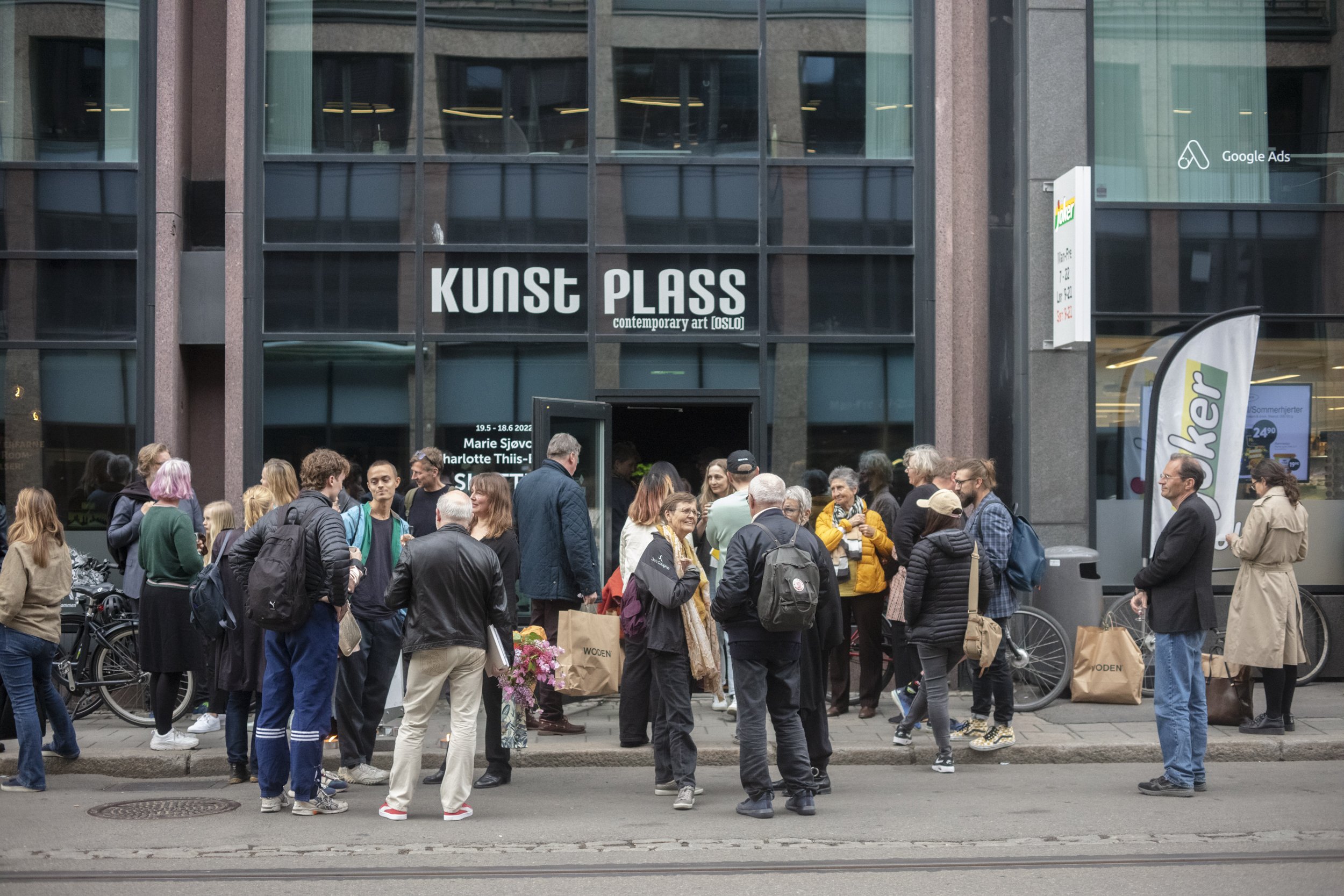
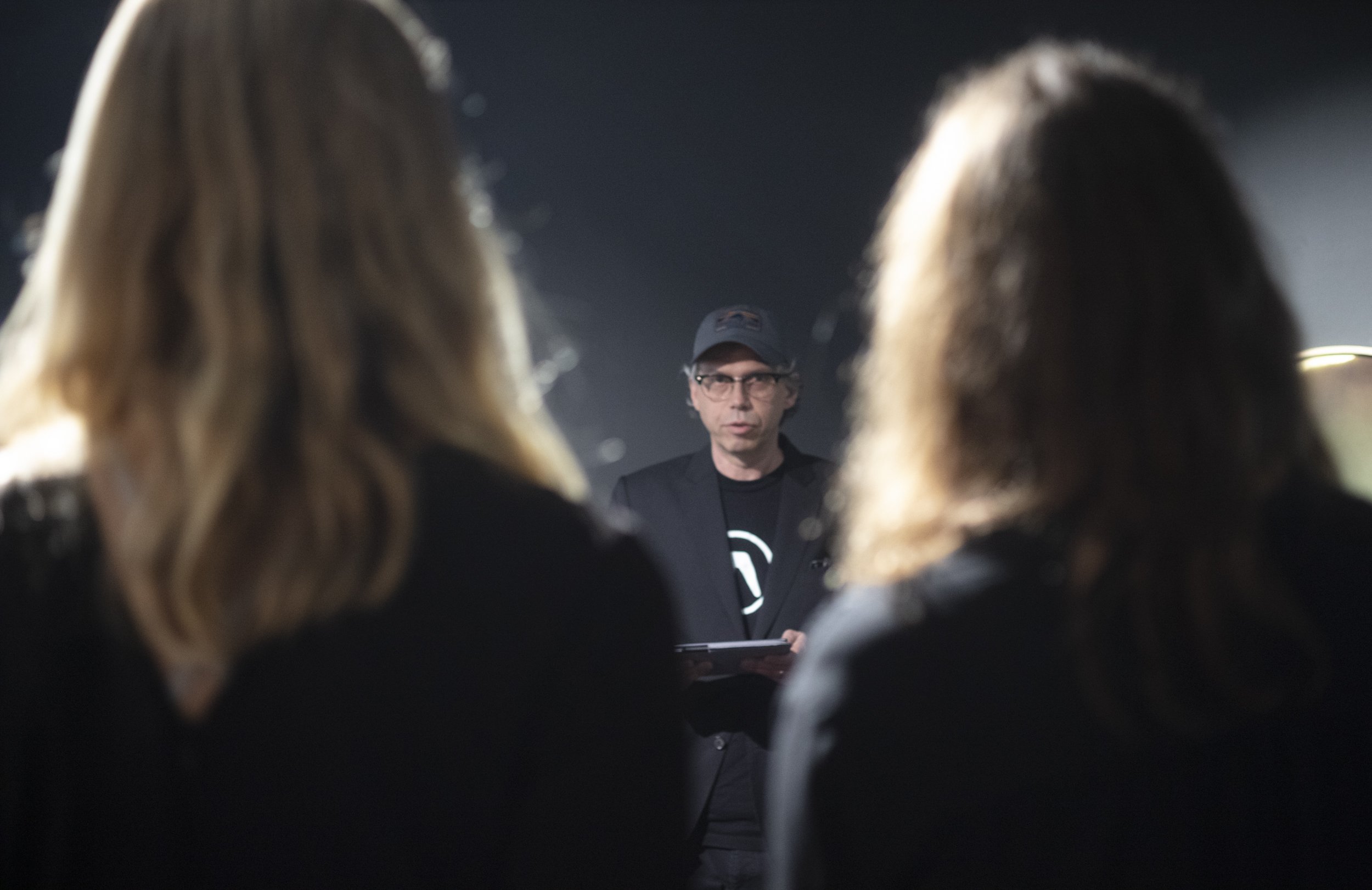
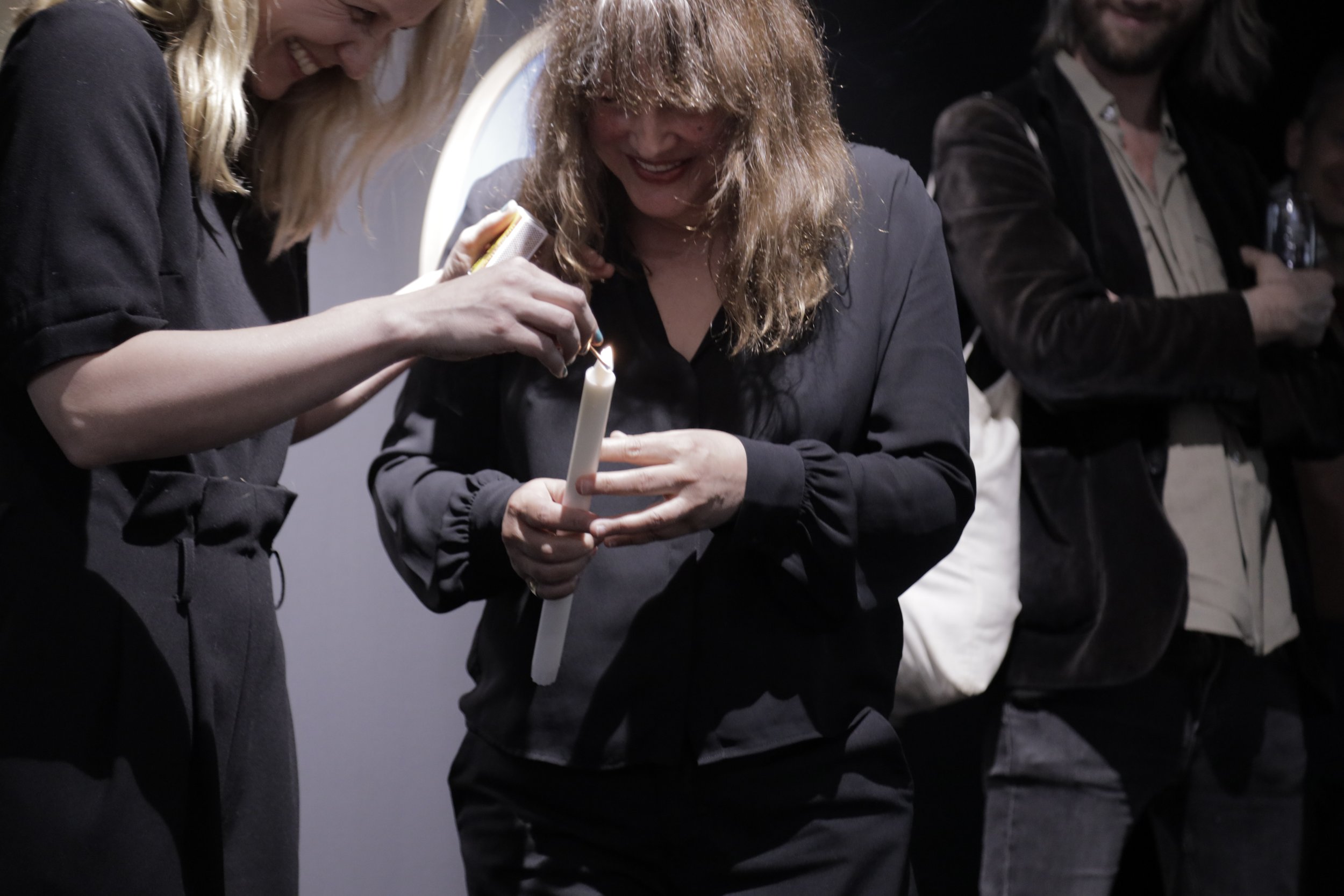
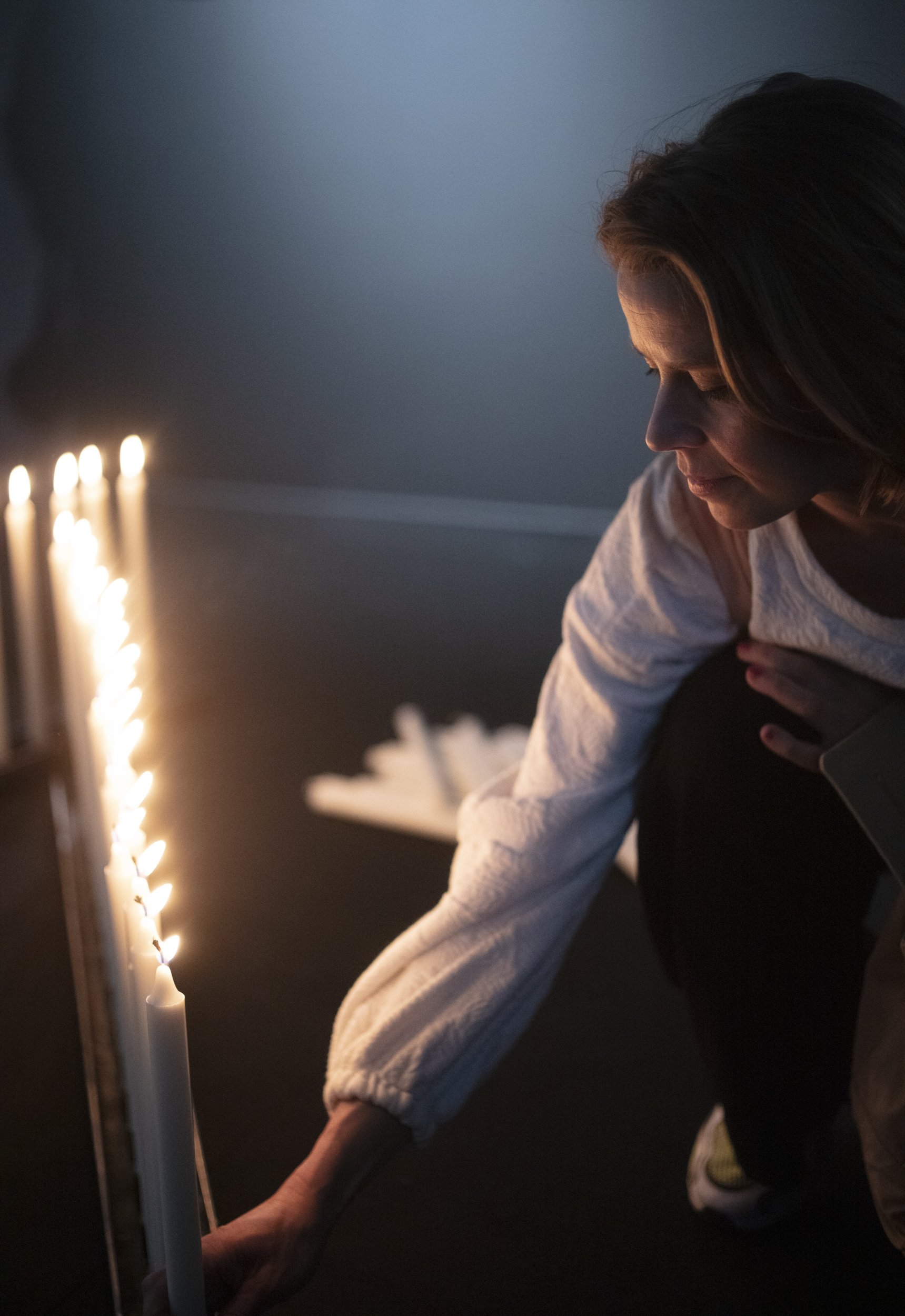
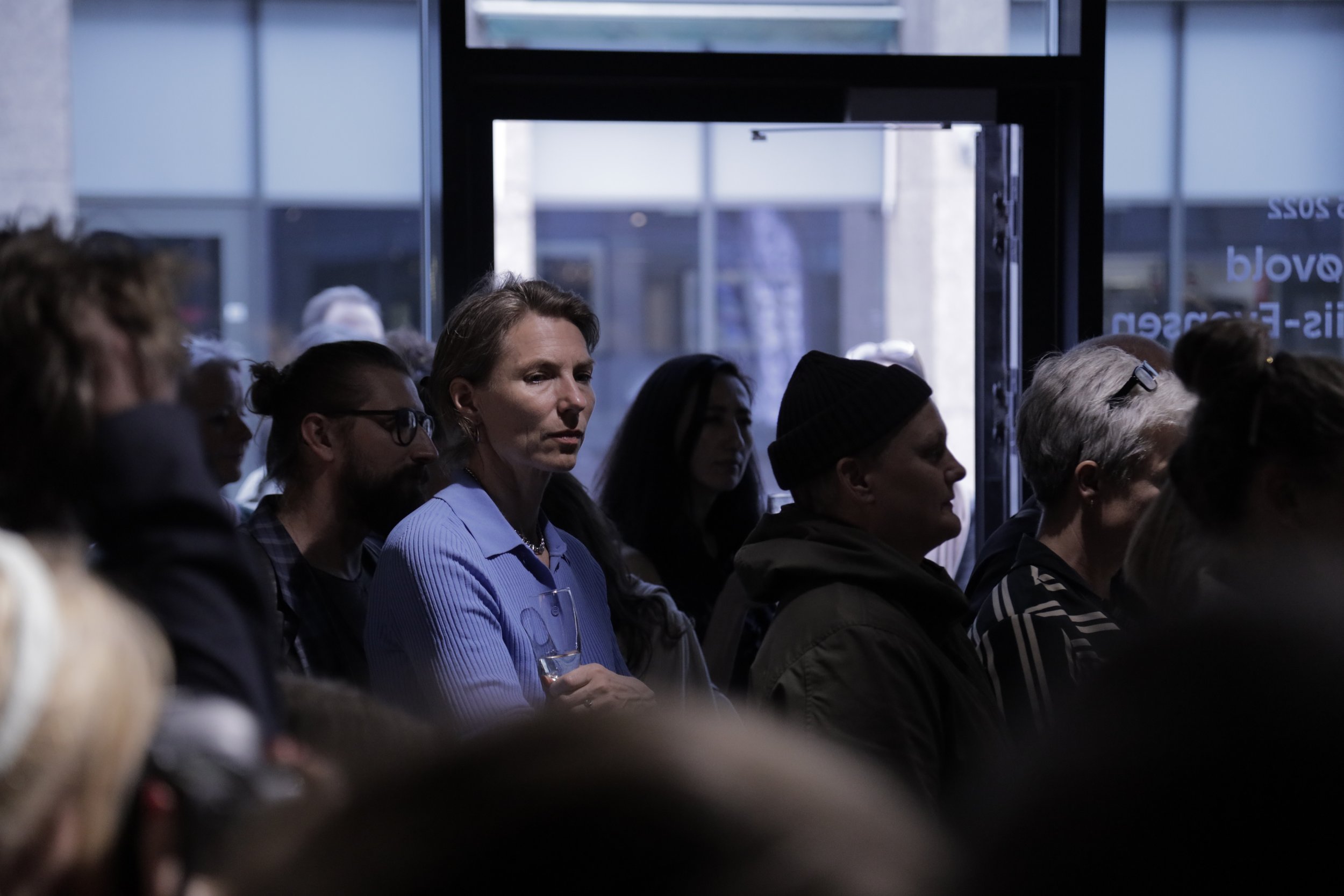
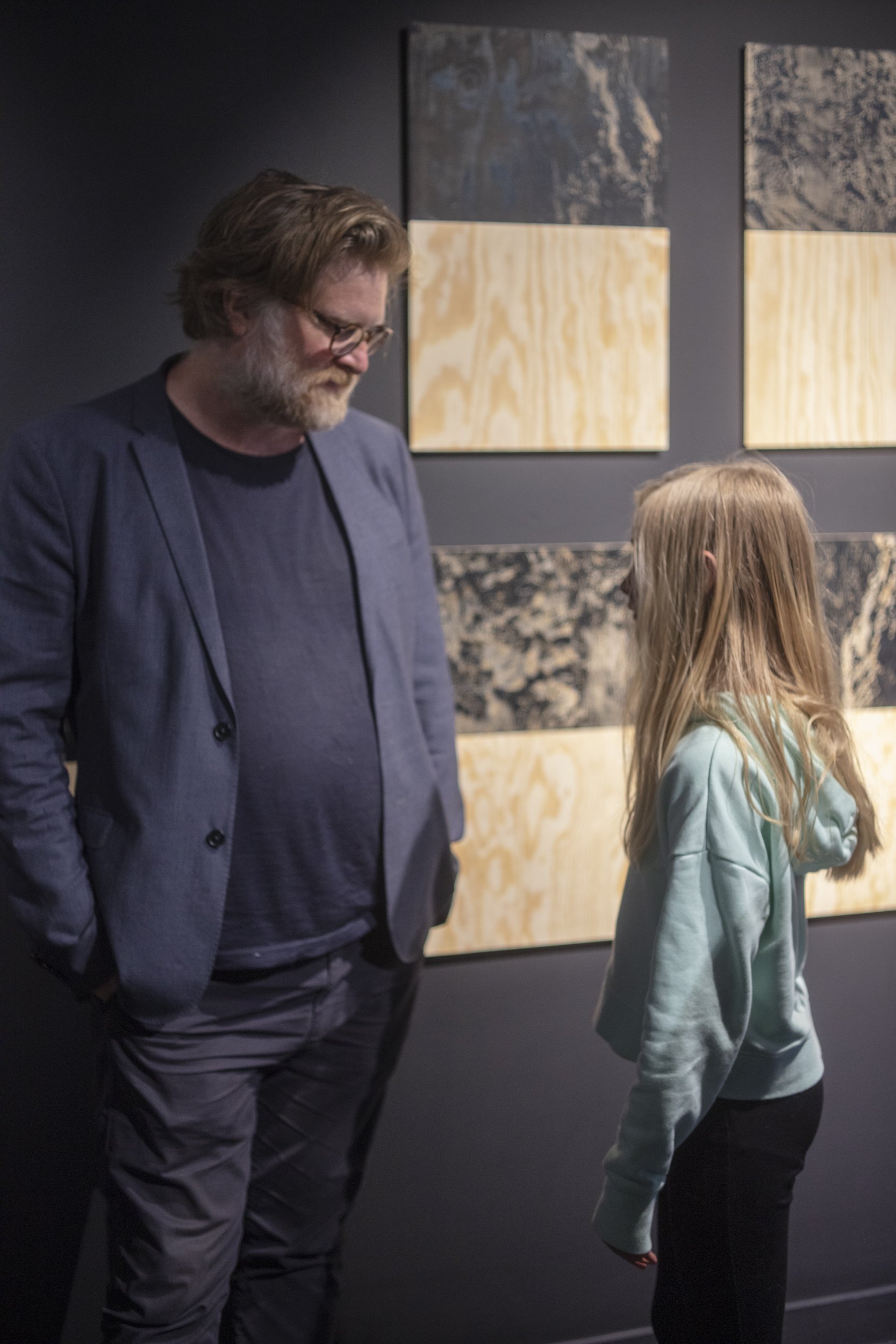
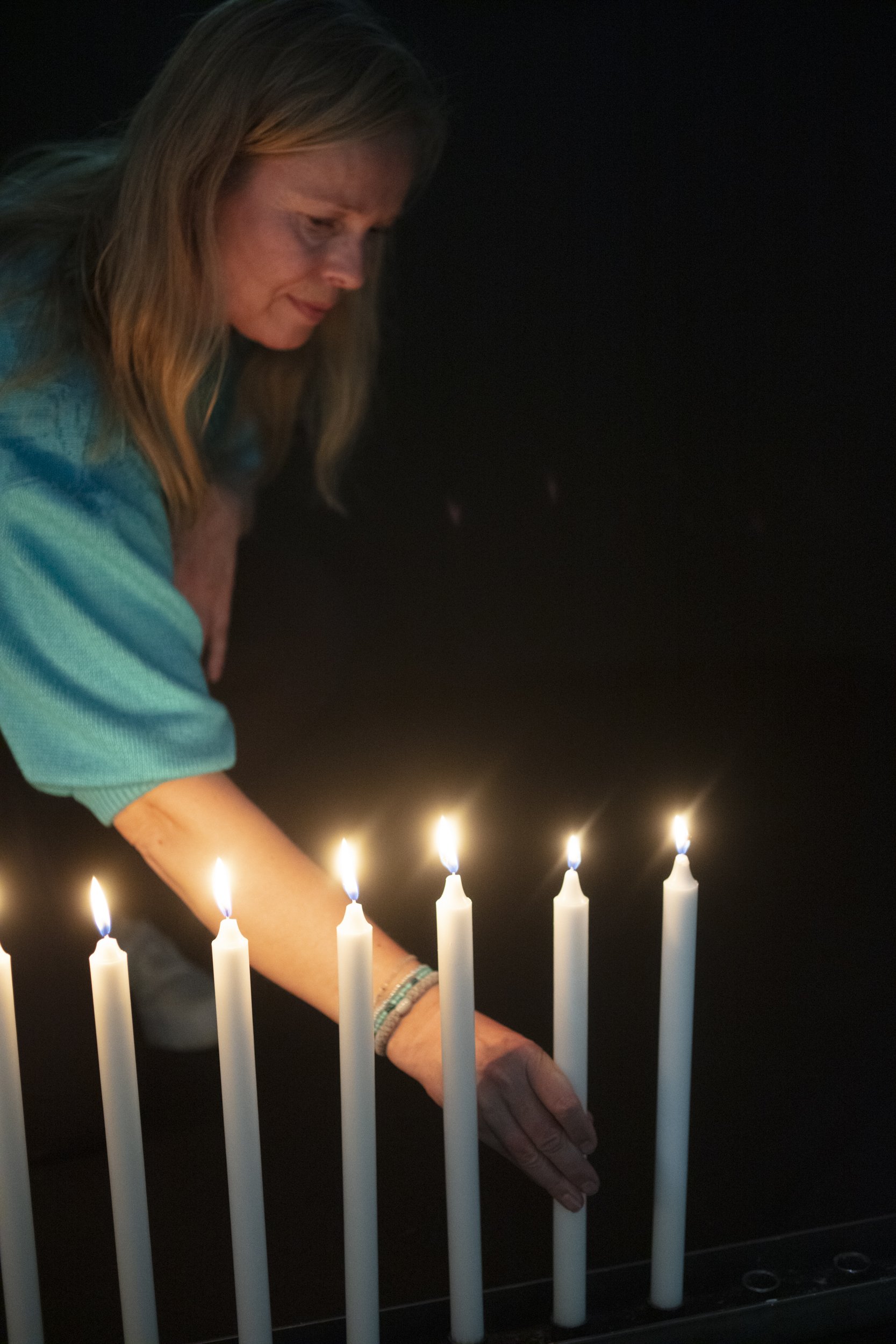
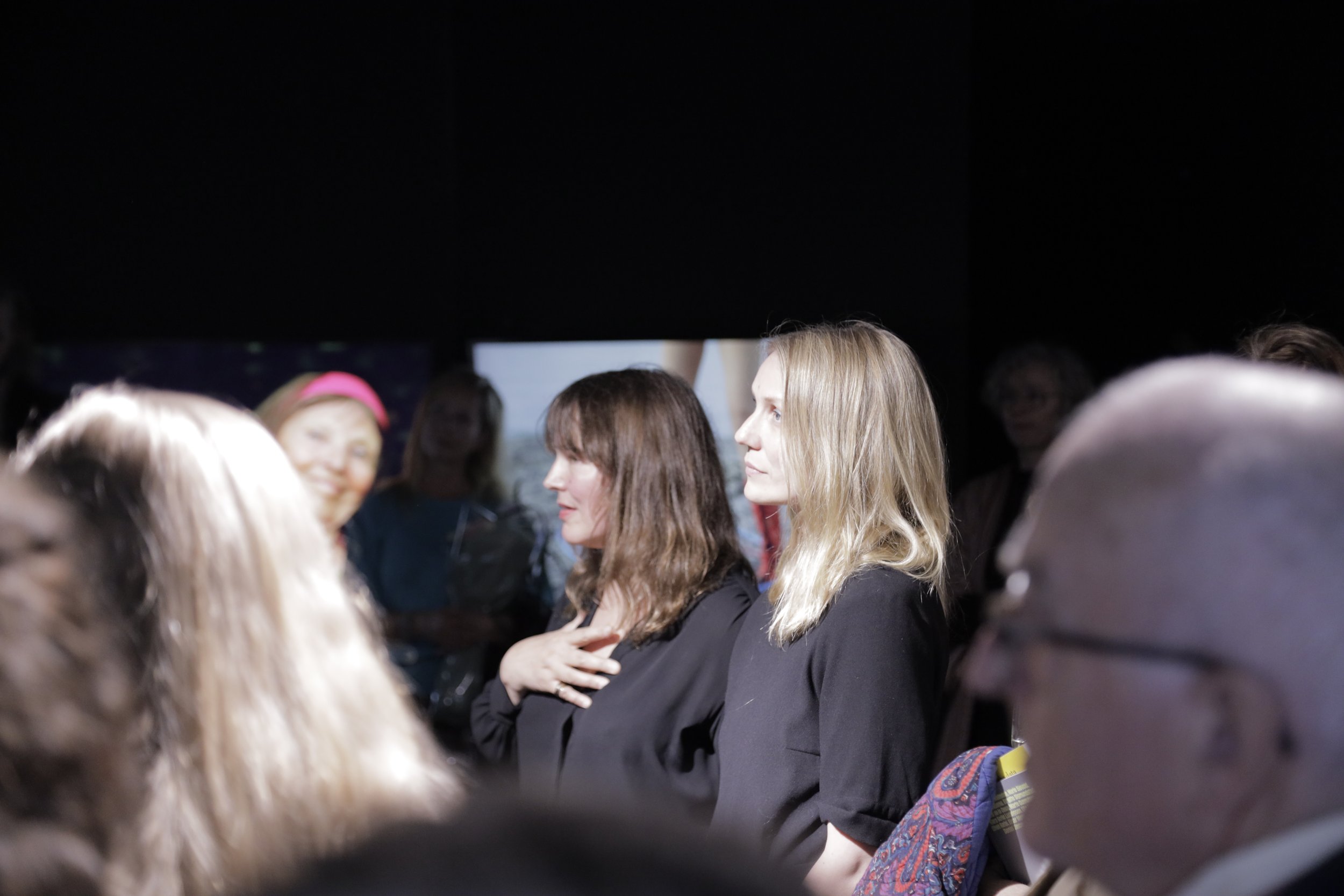
Opening at Kunstplass
Photo by Ines Friberg-Sjøvold and Gustav Thiis-Evensen
SIRKELEN UAVSLUTTET
Tale til Charlotte Thiis-Evensen og Marie Sjøvold ved åpningen av Slutten på Kunstplass Oslo, 19. mai 2022
Av John Erik Riley
En av de mest brukte klisjeene om fotografi, er at kameraet fanger lyset.
Men vel så ofte fanger fotografen det vi ikke er i stand til å begripe: fraværet av et svar, av en rød tråd i fortellingen, mangelen på en tydelig årsak til begivenhetenes gang. Det er også grunnen til at vi fotograferer, ikke utelukkende for å skildre, men for å få fram opplevelsen av å være ute av stand til å fange alt, illustrere den menneskelige erfaringen av å se klart og likevel famle etter mening.
Kameraet viser et øyeblikk, men tiden fortsetter å løpe, uavhengig av bildet og fotografens egne ønsker og behov. Før de fleste bildene ble distribuert på nettet, var hvert bidrag et dødsarkiv, for å ta i bruk Susan Sontag, det oste av fortid og lengsel. Mens fotografier i dag er oftere et uttrykk for nået, for det som nettopp har skjedd, før de brått blir erstattet av nye øyeblikksbilder. Altså er motivene en del av strømmen og den umiddelbare tidsfølelsen; det er som om de bader i et hav av lys.
De gode middagene, vennesamlingene, familieferiene, er så mange at det blir vanskelig å skille den ene stunden fra den andre, før de brått erstattes av nye, tilsvarende stunder, laget av andre med et sterkt uttrykksbehov. Mengden er med på å viske bort detaljene i hvert enkelttilfelle, blant annet fordi individet er allestedsnærværende og evig kringkastende. Bildene inngår i den samme hvite energien, er stråler som øker lysstyrken i opphopning av motiver. I lyset får vi øye på det meste, og dermed ser vi langt mindre enn vi tror.
I en slik situasjon må fotografen – fotografen som vil noe mer enn bare å si «dette skjedde» eller «slik var det» – utforske erfaringer som ikke så lett lar seg formidle. Fotografiene må invitere oss inn, men også forstyrre oss – være forstyrrende åpne, på en produktiv og meningssøkende måte – ved at de formidler et mørke som er vanskelig å overse eller redusere. Slik blir slutten noe annet enn slutten, ikke bare en enkel oppsummering, men begynnelsen på noe annet.
Hva slags begynnelse?
Blant annet at vi fordyper oss i verkene, forsøker å finne spor av oss selv i dem. At vi ser dem i sammenheng med våre egne kamper med tiden, de være seg små eller store. Charlotte Thiis-Evensens videoverk «Adrift» viser vann som strømmer, regndråper som treffer vannflaten, og vi forstår at det er tidens elv vi ser. Underveis dukker mennesker opp og blir borte, ansikter og kropper blafrer forbi som minner eller drømmer. Altså viser videoen hva som skjer med alt og alle, hvordan det flyter av gårde, blir borte for oss.
Men det skjer noe annet også, om man er oppmerksom på skjermen en stund. De samme scenene gjentar seg, slik de ofte gjør i videokunst. Umiddelbart er det lett å tenke at gjentakelsen i dette tilfellet er et bilde på fotografiets tradisjonelle funksjon, før kameraet havnet i lomma og ble koblet til nettverket: Videoen viser tidens elv, som sagt, men det er den samme elven vi ser, igjen og igjen. Vannet og menneskene fryses fast, selv om de er i bevegelse. Gjentakelsen foreviger dem.
I «Adrift» blir vi oppfordret til å studere tidens gang, men kunsteren fører oss også inn i en tilstand av stille kontemplasjon, fordi vi får blikket til noen som ser menneskene og verden ovenfra. Vi får en fortrøstningsfull avstand til menneskene som flyter forbi, også fordi videoens loop er – i galleriets sammenheng – evigvarende. Resultatet er en undring som kunne ha virket distansert og kjølig, men heller har motsatt effekt. Vi føler ømhet for det vi ser, kobler forgjengeligheten i videoen til vår egen sårbarhet.
Enhver som er innom Sjøvolds og Thiis-Evensens Slutten vil merke seg at kombinasjonen av bilder og video bærer preg av sorgarbeid – over mer enn bare det generelle faktum at hvert øyeblikk forsvinner, hver erfaring er tidsbegrenset.
Som alle som har sørget vet, er gjentakelsen en sentral del av tapserfaringen. Det merkes naturligvis i alt rundt den ritualiserte avskjeden med den avdøde, der mange av de samme sangene, frasene og gestene går igjen. For den som sørger, er gjentakelsen også en mental og kroppslig erfaring. De samme minnene dukker opp, går i ring i hodet. Og til de oppmerksomme besøkende forteller man historien om dødsfallet igjen og igjen, gjentar detaljene, som om man fortsatt arbeider med å begripe at begivenhetene har funnet sted.
Sorgen kan beskrives som en serie ekkolyder, mens gjentakelsen er et forsøk på å bearbeide sorgens insisterende rytmer, kanskje selv få makt over dem. Man kan ikke endre det som har skjedd, ekkoet vil alltid være der – er like virkelig som pulsslagene i tinningen til den sørgende – men det er mulig å synge med, på sin egen måte, utforme en individuell forståelse av det, som kan gjøre det lettere å leve videre. Hva er kunst, annet enn dette: Sorg forvandlet til skjønnhet.
Hvilken sorg – eller hvilke sorger – som har ført Sjøvold og Thiis-Evensen sammen, og fått dem til å lage akkurat denne Slutten, vet vi ikke. Det roper ikke verkene høyt om; vi får selvbiografiske glimt, men de er få. I stedet må vi selv lete etter meningen. Dette litt dunkle, litt famlende og søkende aspektet ved prosjektet, kunne ha vært en svakhet, men blir i Slutten en stor styrke. For Slutten gir oss plass. Den inviterer oss inn, gir oss pusterom, og mulighet for stille refleksjon, slik at vi ser våre egne erfaringer i et nytt lys.
Eller: Vi ser dem i et nytt mørke.
Slutten er å forstå hva vi har vært og hvem som er borte, men også hva vi etterlater oss. Et sjøvoldsk fotografi tatt under vann viser en kropp i bevegelse, det ser i alle fall ut til å være noen som har stupt ned i vannet, og i motivet er det lett å se forbindelsen til Thiis-Evensens Adrift. Men denne gangen er kroppen nesten usynlig for oss, dekket som det er av lag med hvite bobler.
Det er heller ikke lett å vite om mennesket i bildet er på vei opp eller ned. Boblene må ha blitt dannet av kroppens tyngde, men øyeblikket da den brøt overflaten ligger bak oss. Kroppen flyter i billedflaten, midt mellom to tilstander. Først da blikket vendes til de to rundingene like ved, sirkelformede rammer som i seg selv minner om bobler, ser vi formen i vannet med nye øyne. Mønsteret i vannet kobles til Sjøvolds nærbilder av blomster og planter som dør eller visner – og vice versa.
Blomstene det er snakk om har blitt brukt i forbindelse med begravelser, men har nå mistet sin opprinnelige funksjon. Det er da fotografen fatter interesse for dem, og avbilder dem med den karakteristiske blandingen av dunkelhet, undring og intim nærhet som kjennetegner Sjøvolds kunstnerskap. Og det er naturligvis ettertiden vi ser, hvordan de levende vekstene som vi bærer med oss inn i kirken eller til graven også møter sine endelikt. Sjøvolds kameraarbeid får oss til å se dette visnede håpet med nye øyne.
Bildene kunne ha stått som en kommentar til det absurde i våre ritualer, hvordan også de er forgjengelige, for ikke å si desperate, og dermed meningsløse. Det samme kunne man ha sagt om det krøllede fotografiet; her ser vi hvordan hvert forsøk på kunst forsvinner eller blir ødelagt. Og disse aspektene er muligens tilstede i verkene. Men i Slutten er slutten aldri slutten. Her er det umulig å finnes punktet der sirkelen sluttes.
Den ene assosiasjonen fører til den andre. Enkeltelementene spiller på hverandre på en fruktbar måte. En boble i vannet får oss til å tenke på en ramme. Og rammen avgrenser ikke, men minner snarere om et kuøye, et vindu.
I Sluttens gjentakelser finnes det trøst. Det finnes liv. Energi. Derfor oppfatter jeg bildet av kroppen under vann, omgitt av bobler, som et ideal snarere enn en innvending. Det er en oppfordring om å finne balansepunktet, punktet midt i mellom tyngde og oppdrift, oppsøke opplevelsen av å være vektløs. For det å skape noe, i alle fall noe så vakkert og gripende som Slutten, har noe av dette vektløse ved seg. Man er dratt ned av sorgen, omgitt av mørket, og så forflytter man seg oppover, mot lyset. Eller gjennom galleridøren, mot våren.
Vekslingen mellom ytterpunktene trenger heller ikke å være lammende. En befriende blanding av humor og alvor finner jeg i et videoverk som også byr på gjentakelser. Vi presenteres for tre skjermer. Midt i triptykonet befinner en eldre kvinne seg. Dansen hennes virker forsiktig, iscenesatt på en vennlig måte. Til venstre og høyre står to andre kvinner og danser med hver sin rokkering, gjør de karakteristiske bevegelsene som er forbundet med seksualitet, men også med ungdom og uskyld.
I virkeligheten er dansen for lengst slutt, det skjønner alle som følger med på videoene. Det er heller ikke utenkelig at innspillingen bød på fysiske utfordringer, at kvinnene kun holdt på en liten stund. Men på skjermen overskrider de tiden og alderdommen. Sirklene omkranser kvinnene, og kvinnene holder dem i bevegelse. De danser en stund, vrikker på kroppen, før de mister rytmen, stanser, og rokkeringen detter ned.
Nok en slutt. Nok en begynnelse.
Images from the opening of SVA MARGA at HOS ARNE in Oslo
Curated by Cat Werring Otnes
Artists:
Marie Sjøvold, Magnus Vatvedt, Andrea Scholze, Ole Martin Lund Bø, Maria Brinch, Sofie Brønner, Per Christian Brown, Massimo Leardini og Peter Dean
Photos by Johanne Nyborg
Opening at Hos Arne
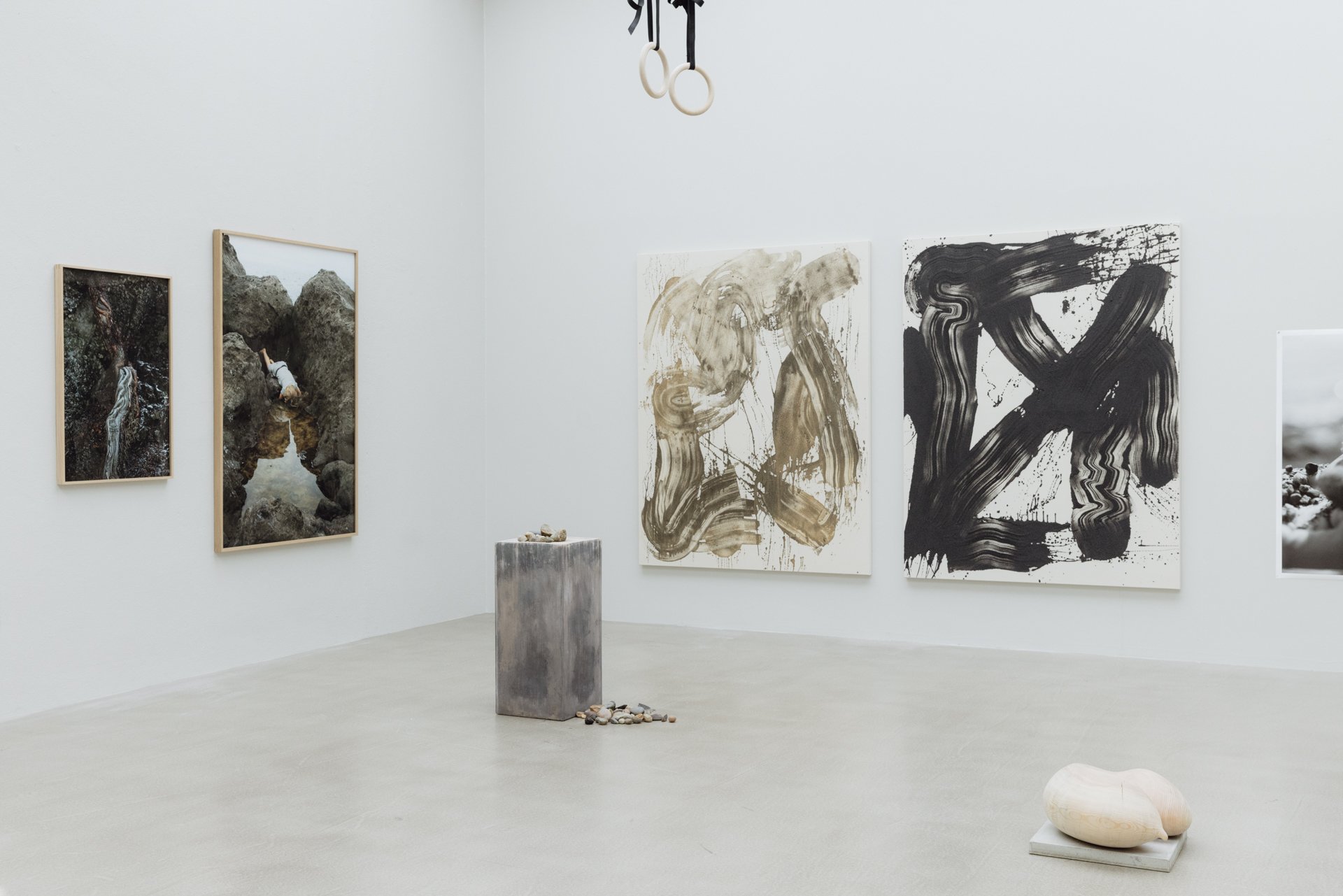
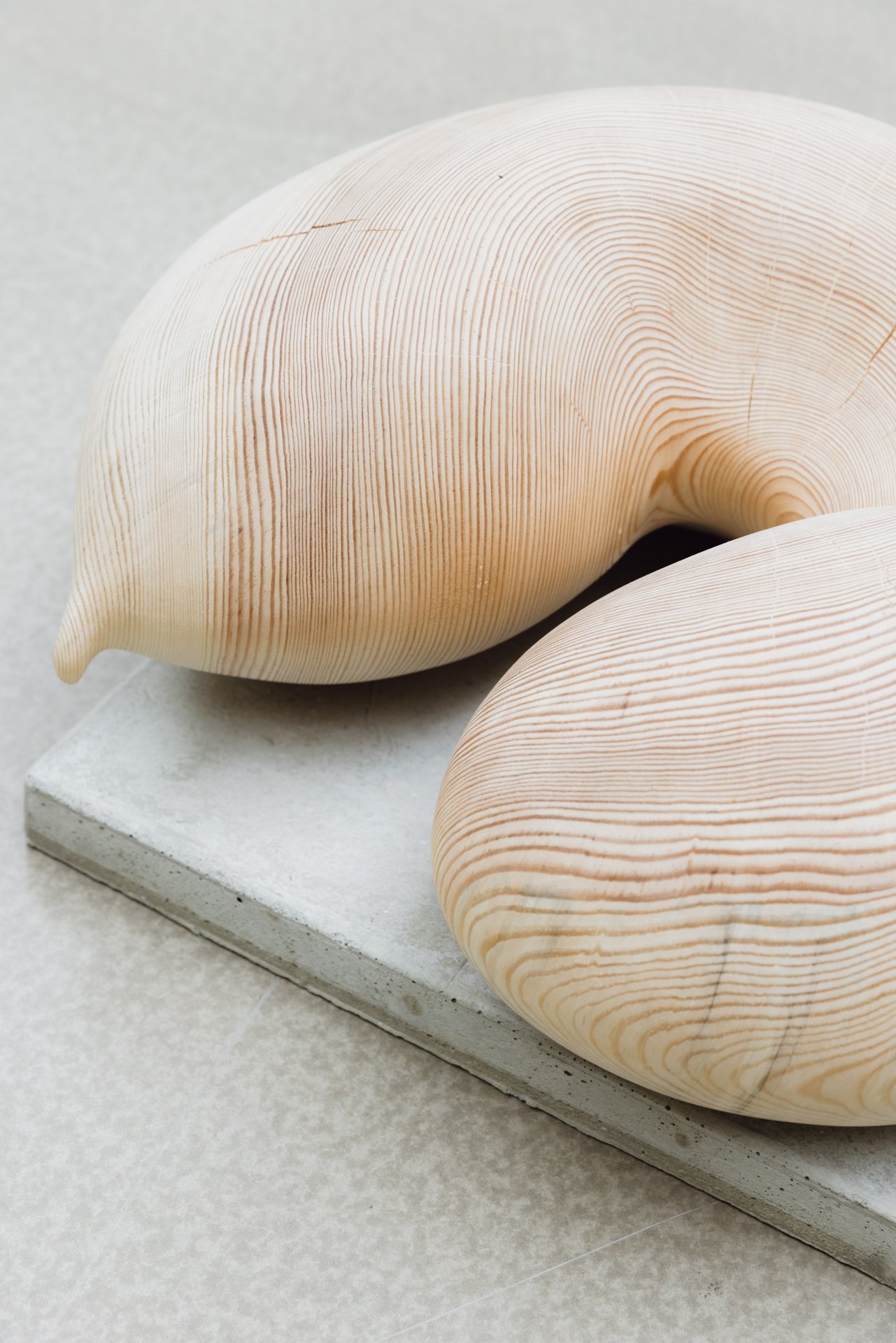
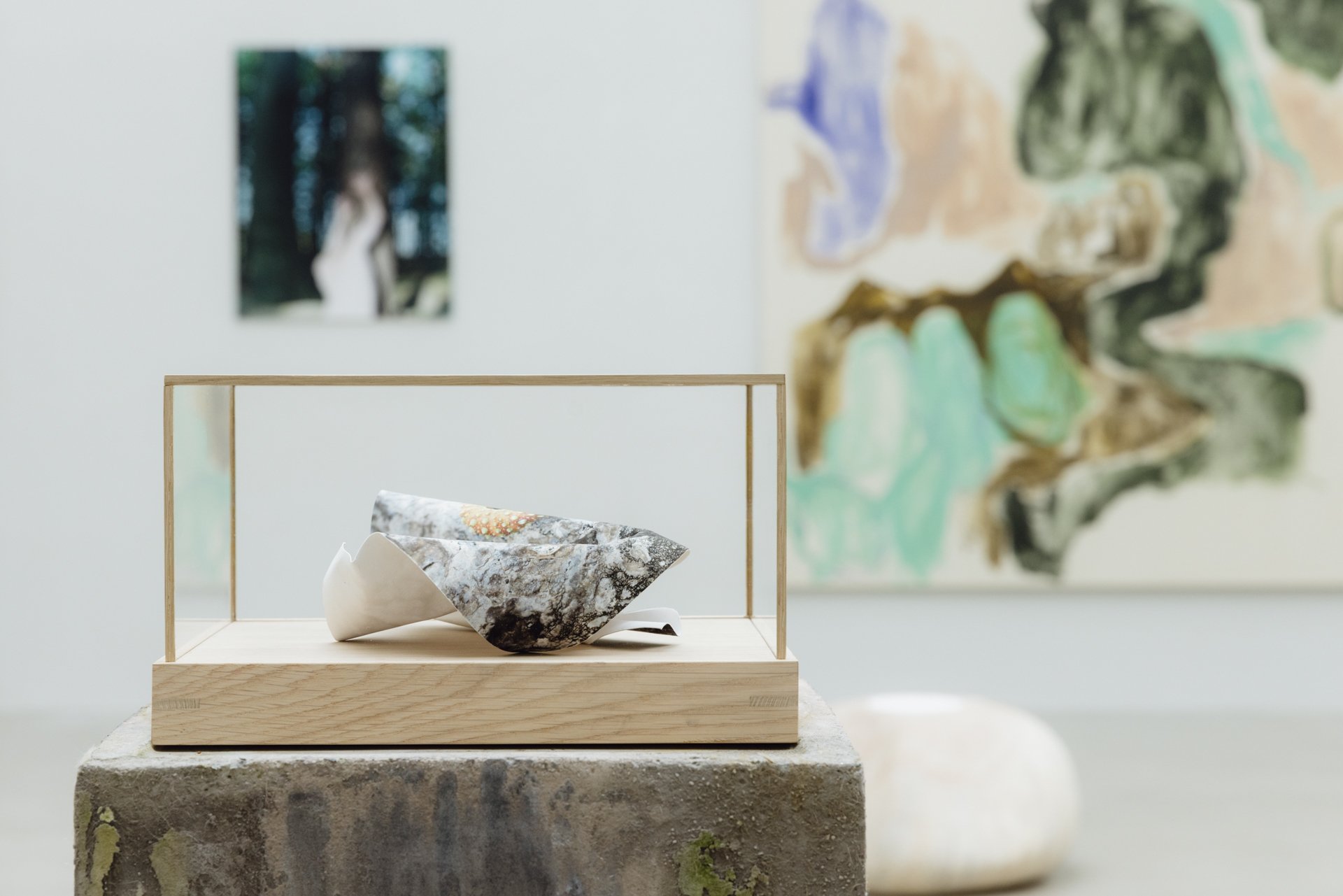
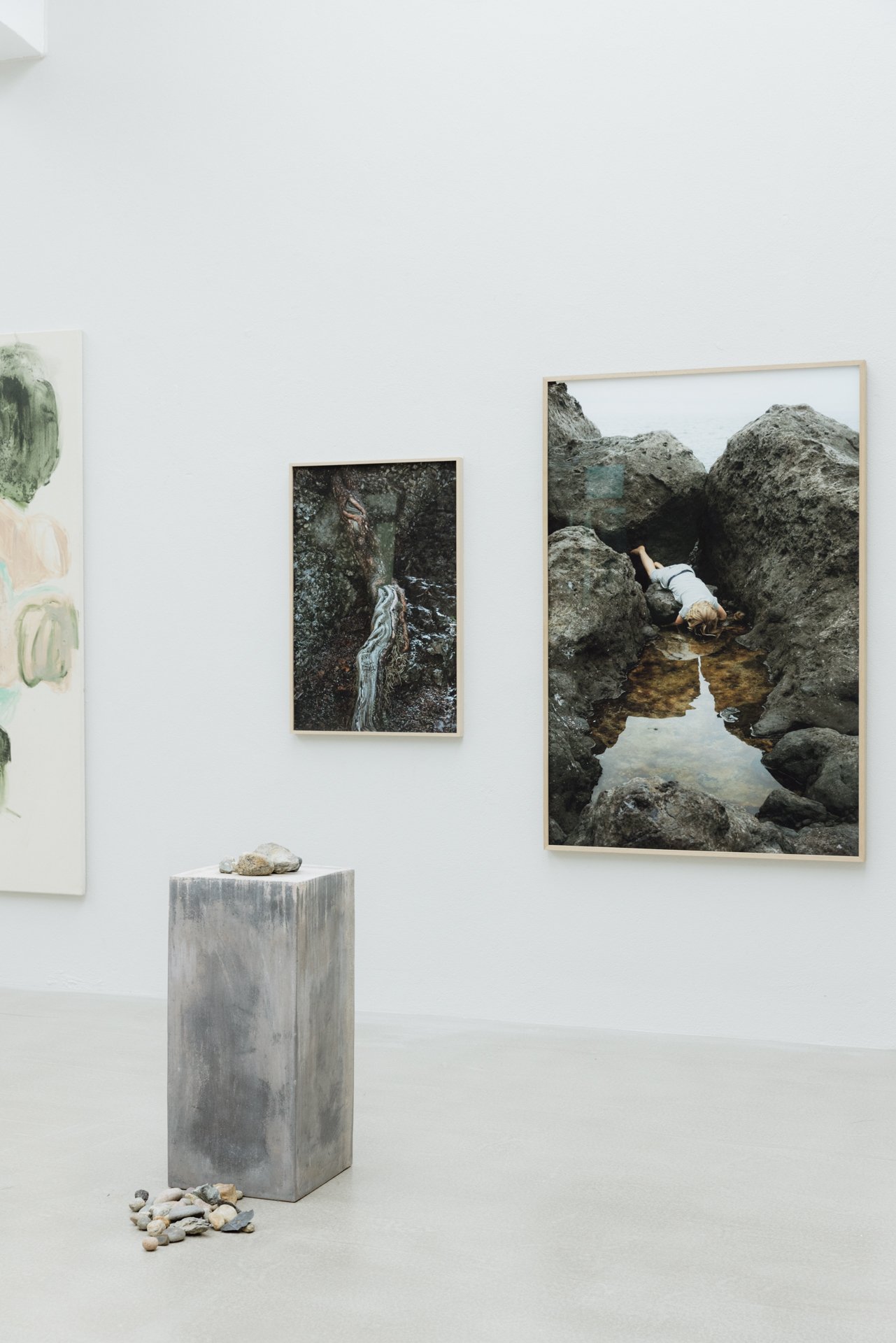
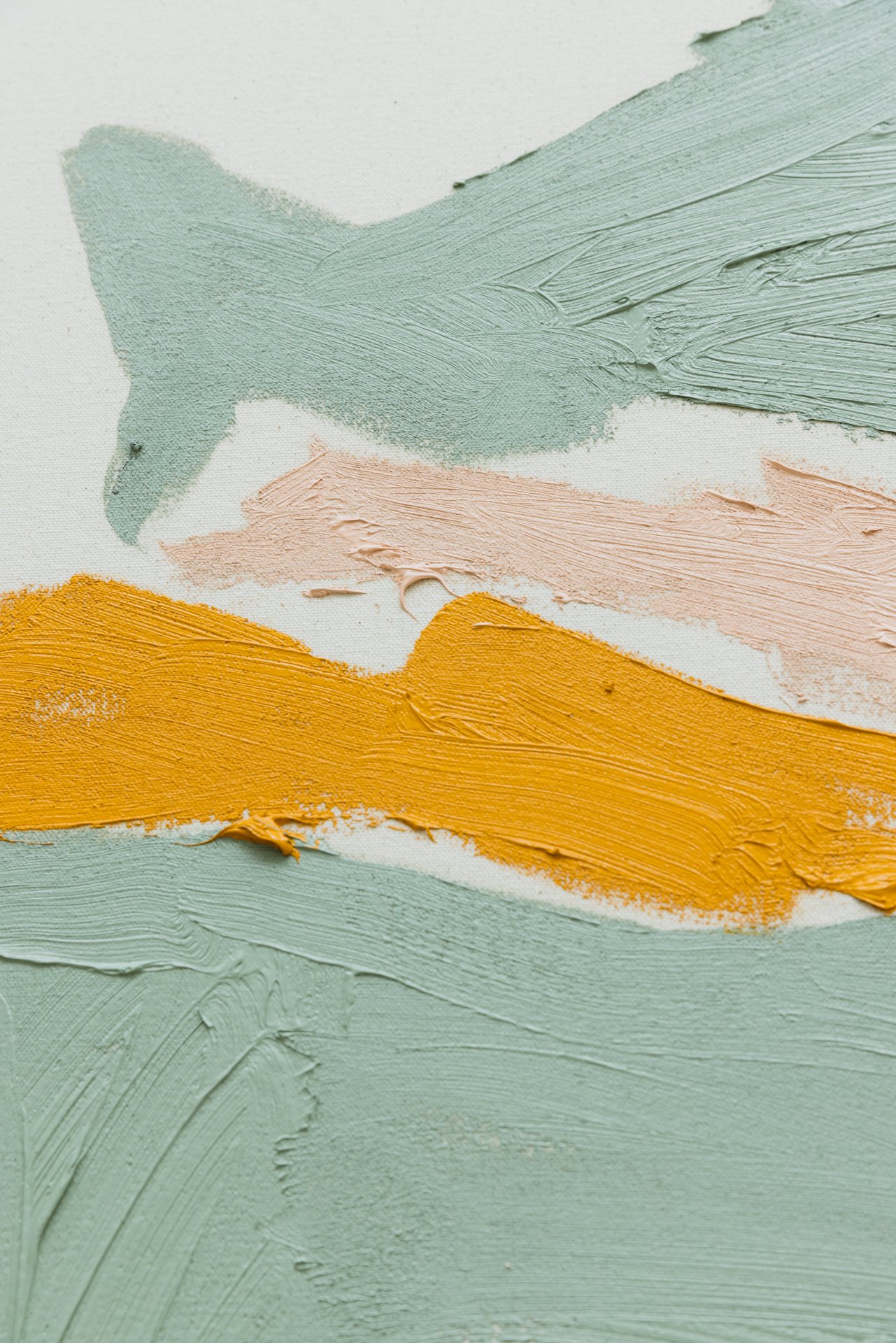
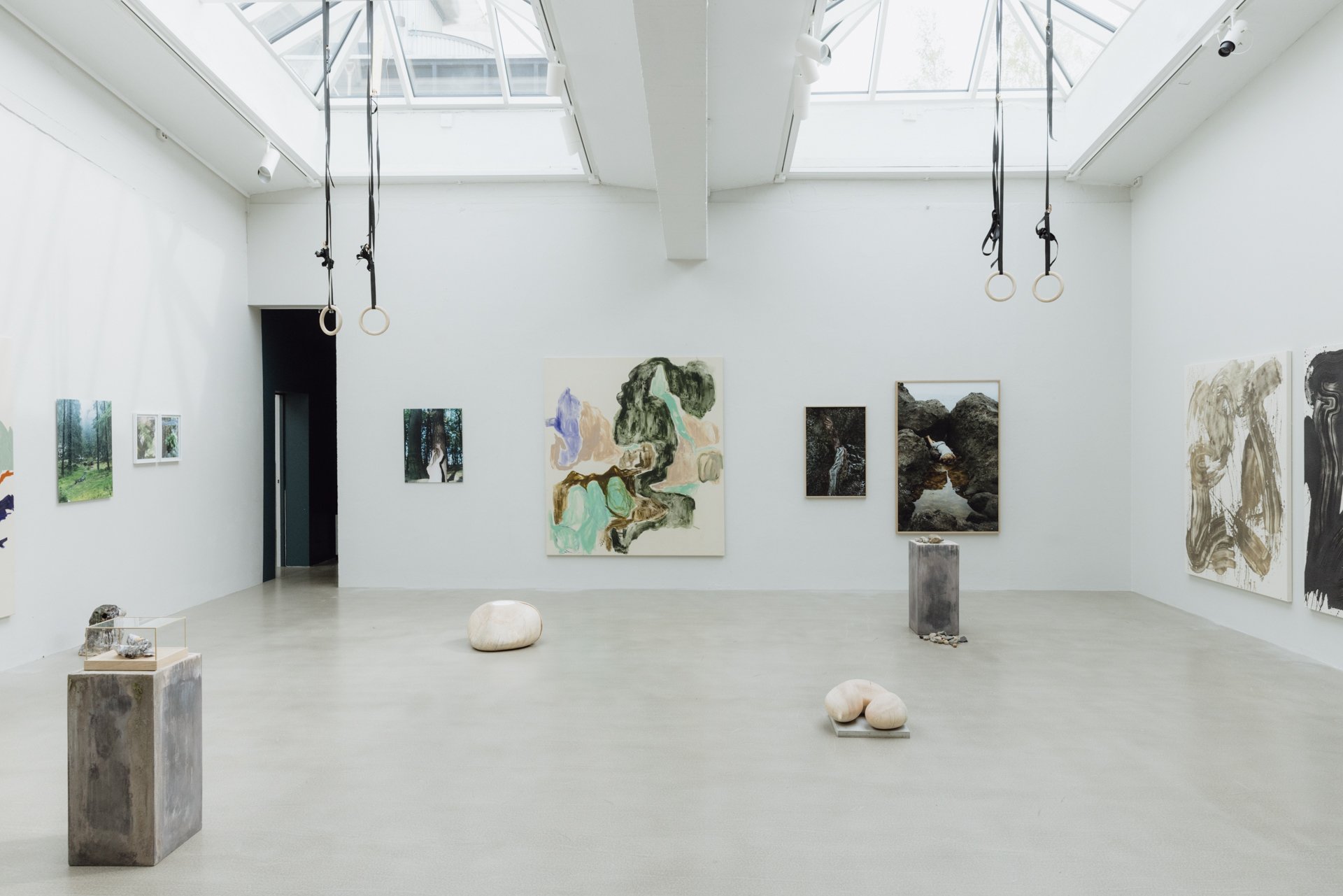
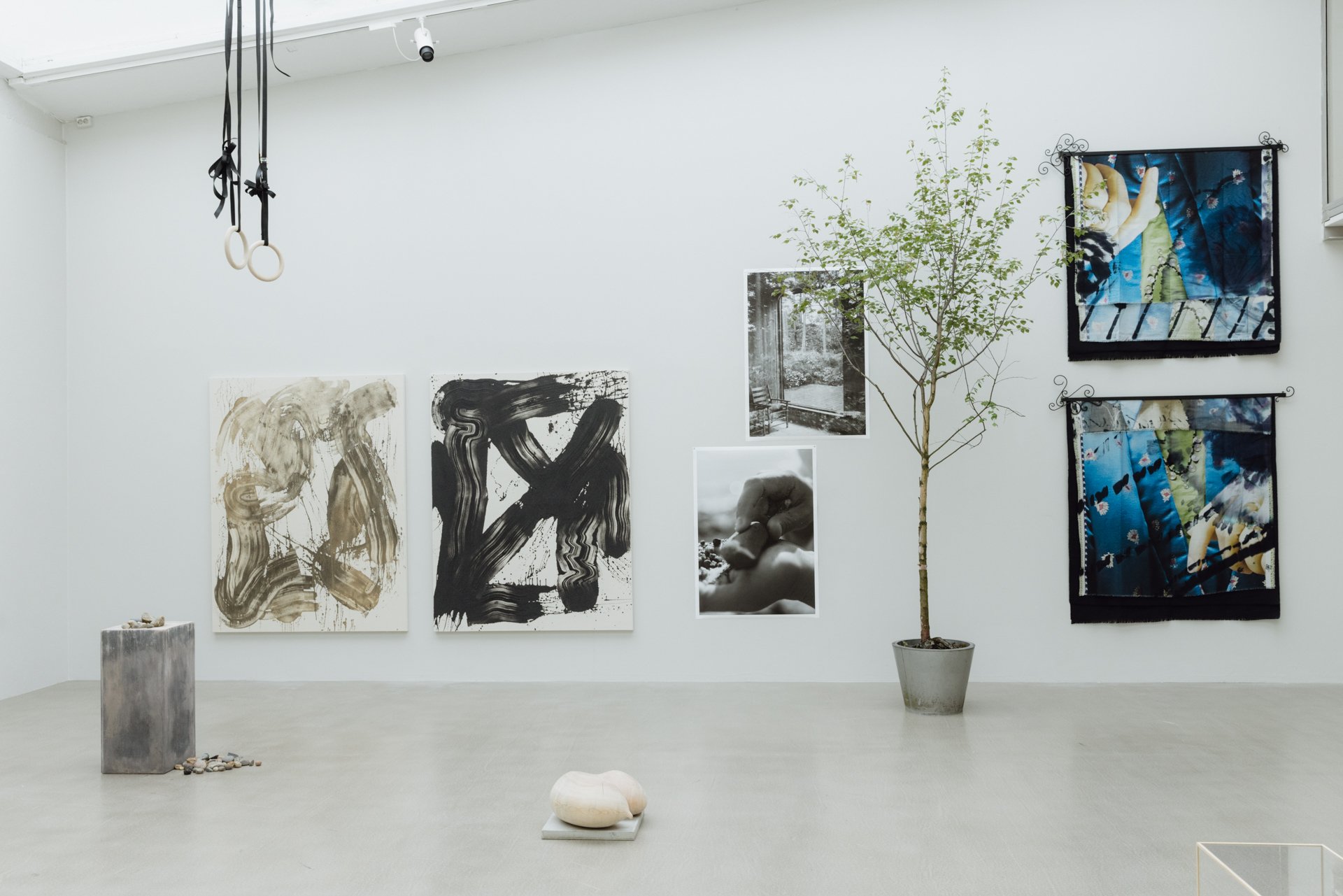
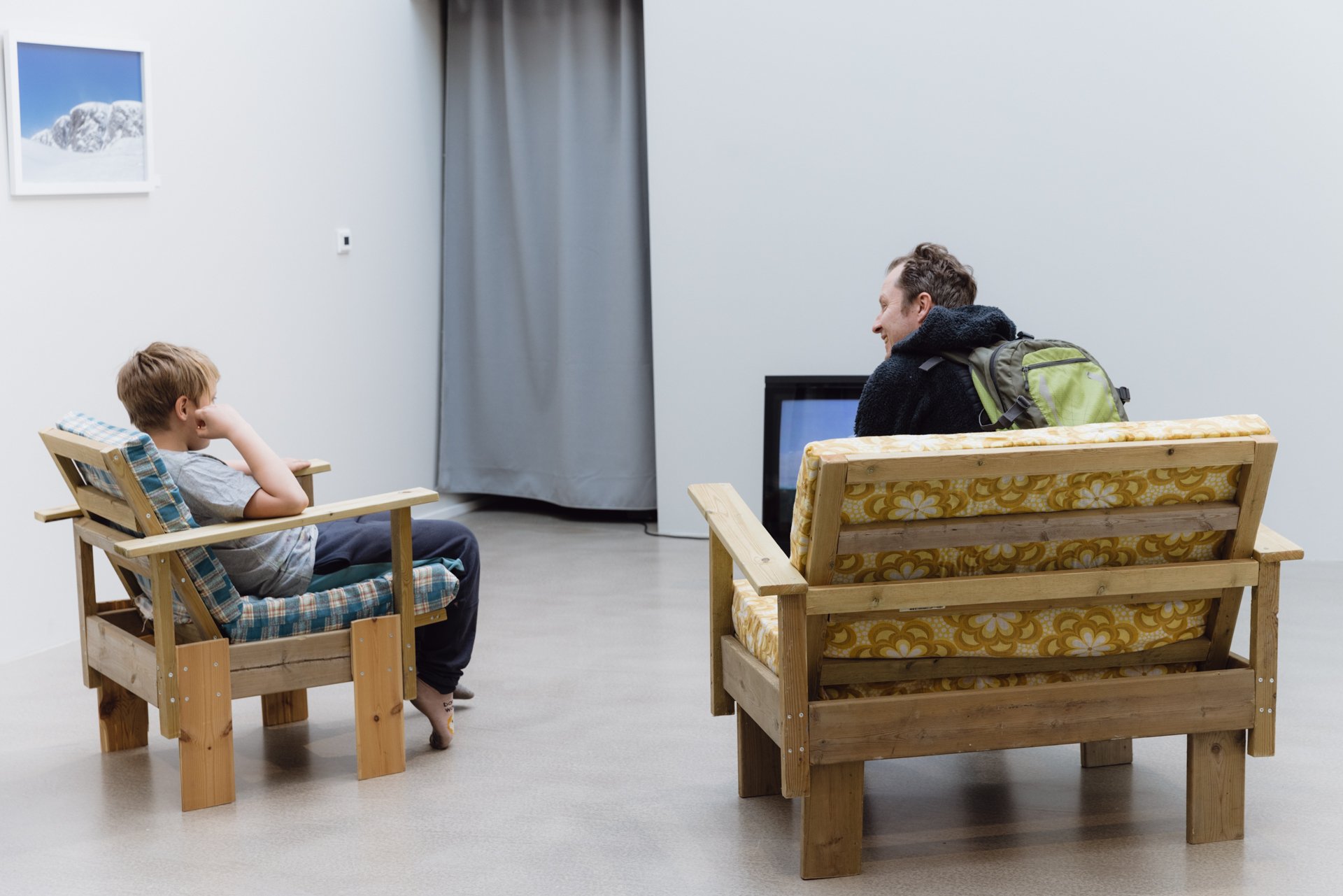
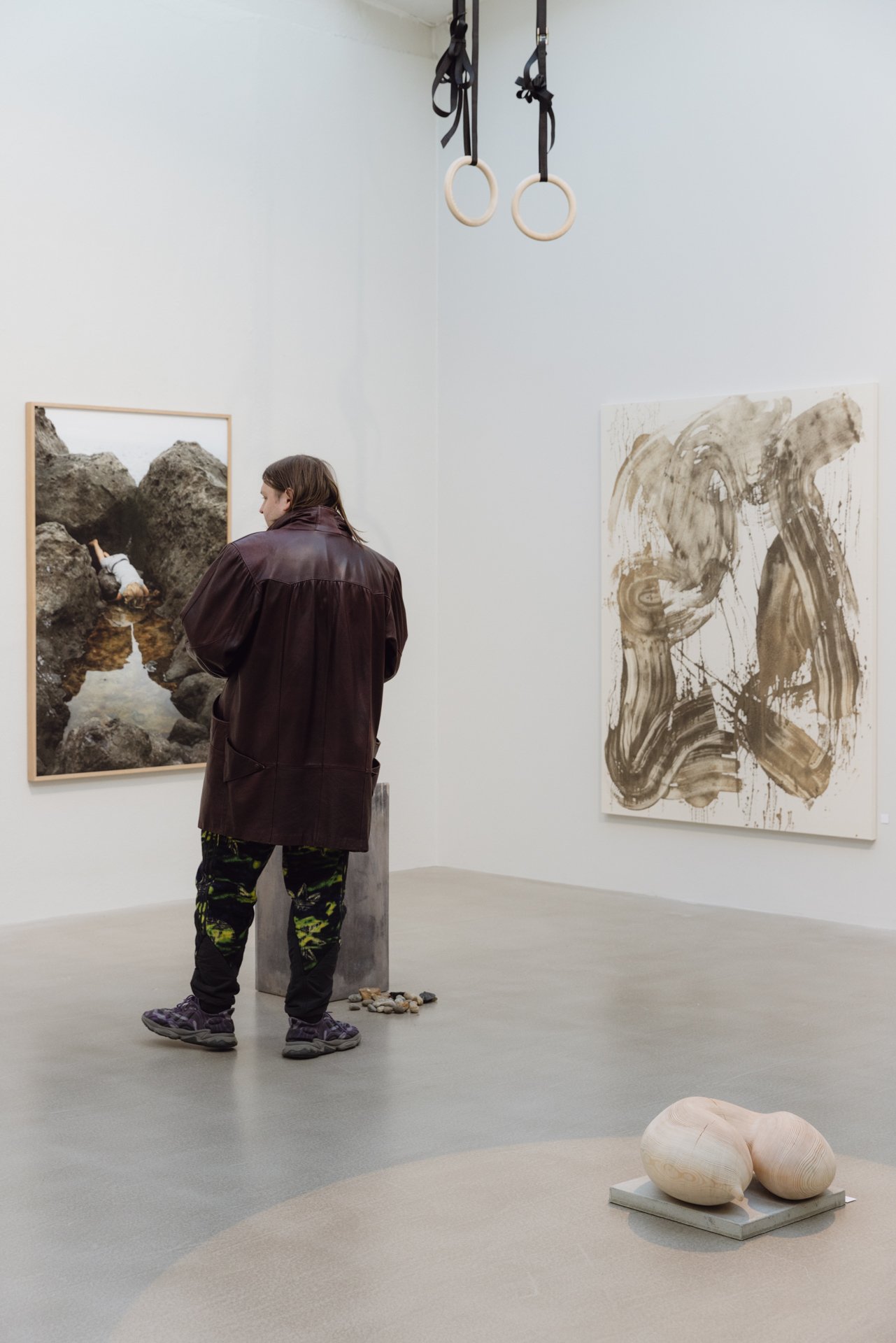
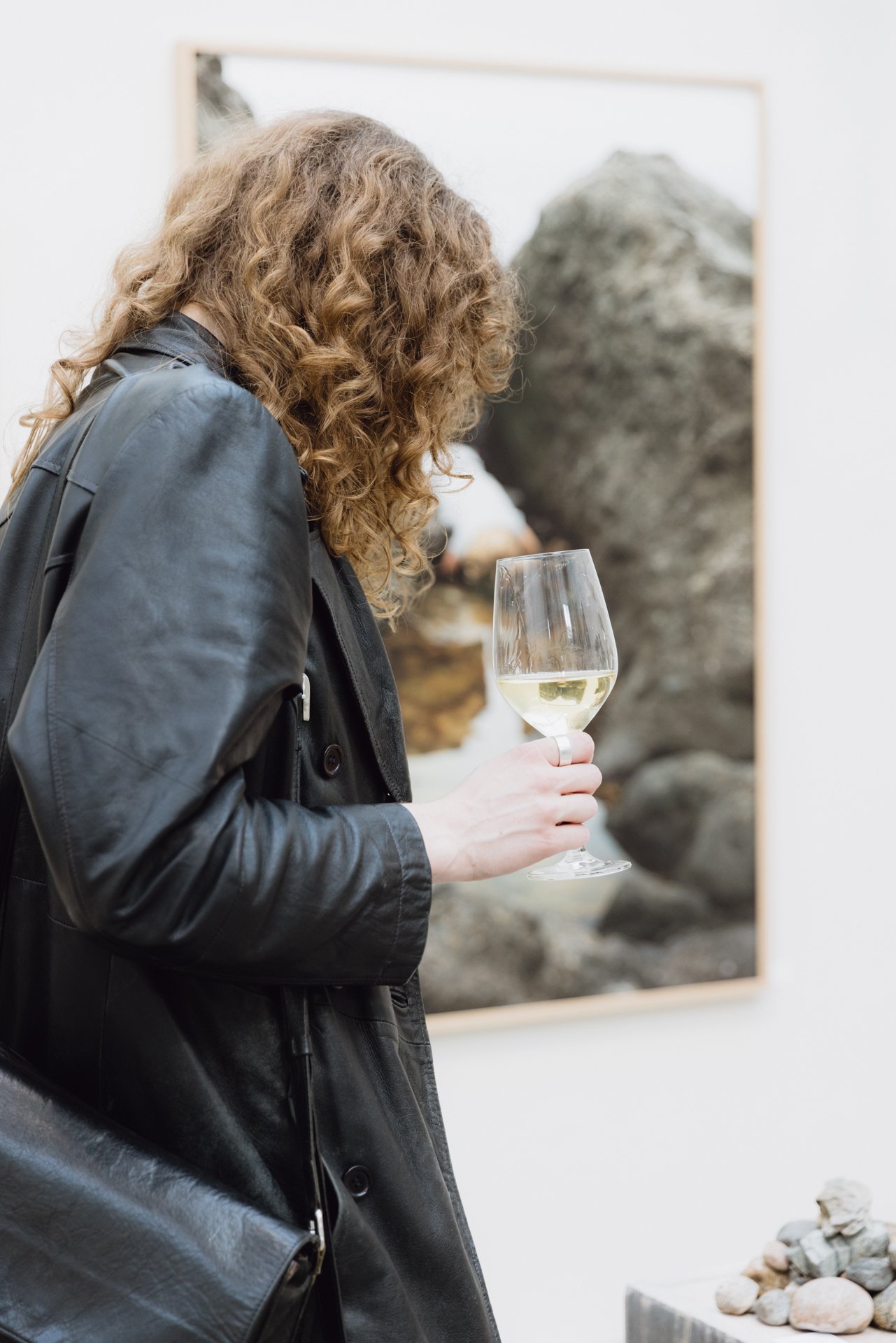
Opening of Riga Photography Biennale 2022
The exhibition Screen Age III: Still Life continues a series from 2018 that poses existentially pressing questions through observing the way technology is slowly changing people today. How deeply has human consciousness become inseparable from the technological solutions that grow increasingly useful and convenient with each day? Are we the same individuals that we were when we didn’t have smartphones and smart watches that serve us so well in monitoring the world? What are the ways in which our attitudes have shifted in respect to seemingly eternal things and ethical values centuries in the making? What testimony will there remain after our time is past? We invite you to pursue this line of thought by employing the coordinate system used throughout art history – that is, the traditional genres of portraiture, landscape, and still life. These have changed beyond recognition in the new epoch, the screen era.
The first exhibition of the series, Screen Age I: Self-Portrait, examined our relationship with ourselves using tools exclusive to art to observe and reveal the following: 1) models of speaking with and about oneself that were unknown to previous eras; 2) new, convenient, and freely available constructions for creating one’s self-image. The findings confirmed the suspicion that our society has assumed new outward characteristics and radically changed its habits over the past twenty years due to technological innovations rapidly making their way into everyday life. Nevertheless, human nature, as well as human desires, longings, and other motivators have remained unchanged since time immemorial. The second exhibition in the series, Screen Age II: Landscape, took place in 2020. Like the first, it was held in Rīga Art Space. This exhibition analysed changes in the relationship that people have with landscape art today. In short, since we have succumbed to the temptation to set our eyes upon whatever our hearts desire in the virtual world without having to put down our smartphones, the experience of a landscape seems to have lost its original and imposing impression, namely, to engage all our senses. It has, instead, taken on the form of a more rational analysis of units differentiated by the mind.
The thematic focus of the third exhibition, Screen Age III: Still Life, is on the interpretation of the still life in the digital age. It allows for the fact that every genre of photography functions as a routine element of digital culture and a part of an incessant stream of data that reflects itself into different contexts and can be put to use in many different ways (from advertising to iconography). It is interesting to ask whether or not compositions with fruit, flowers, games, wares, musical instruments, household objects, and skulls are outdated. If not, what is it that they are saying today?
Participants: Marianne Bjørnmyr (NO), Johan Rosenmunthe (DK), Sara Skorgan Teigen (NO), Sigrid Viir (EE) and Cloe Jancis (EE), Charles Richardson (UK), Santa France (LV), Nico Krijno (ZA), Līga Spunde (LV), Krišs Salmanis (LV), Vilma Pimenoff (FI)
Curators: Inga Brūvere (LV), Marie Sjøvold (NO)
Text: Aiga Dzalbe (LV)
Image: Līga Spunde, Still Life with Computer Mouse, 2022
More about www.rpbiennial.com
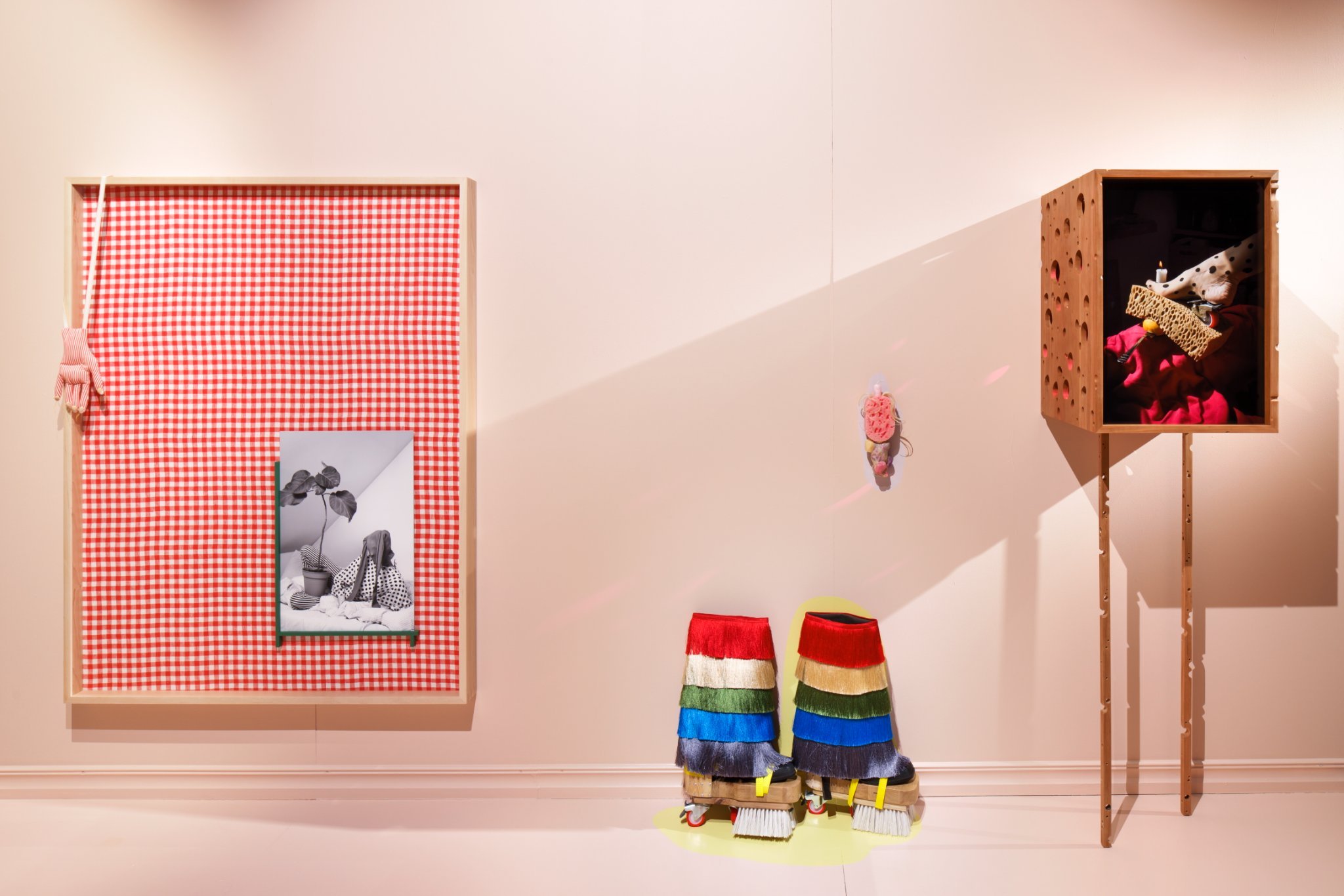
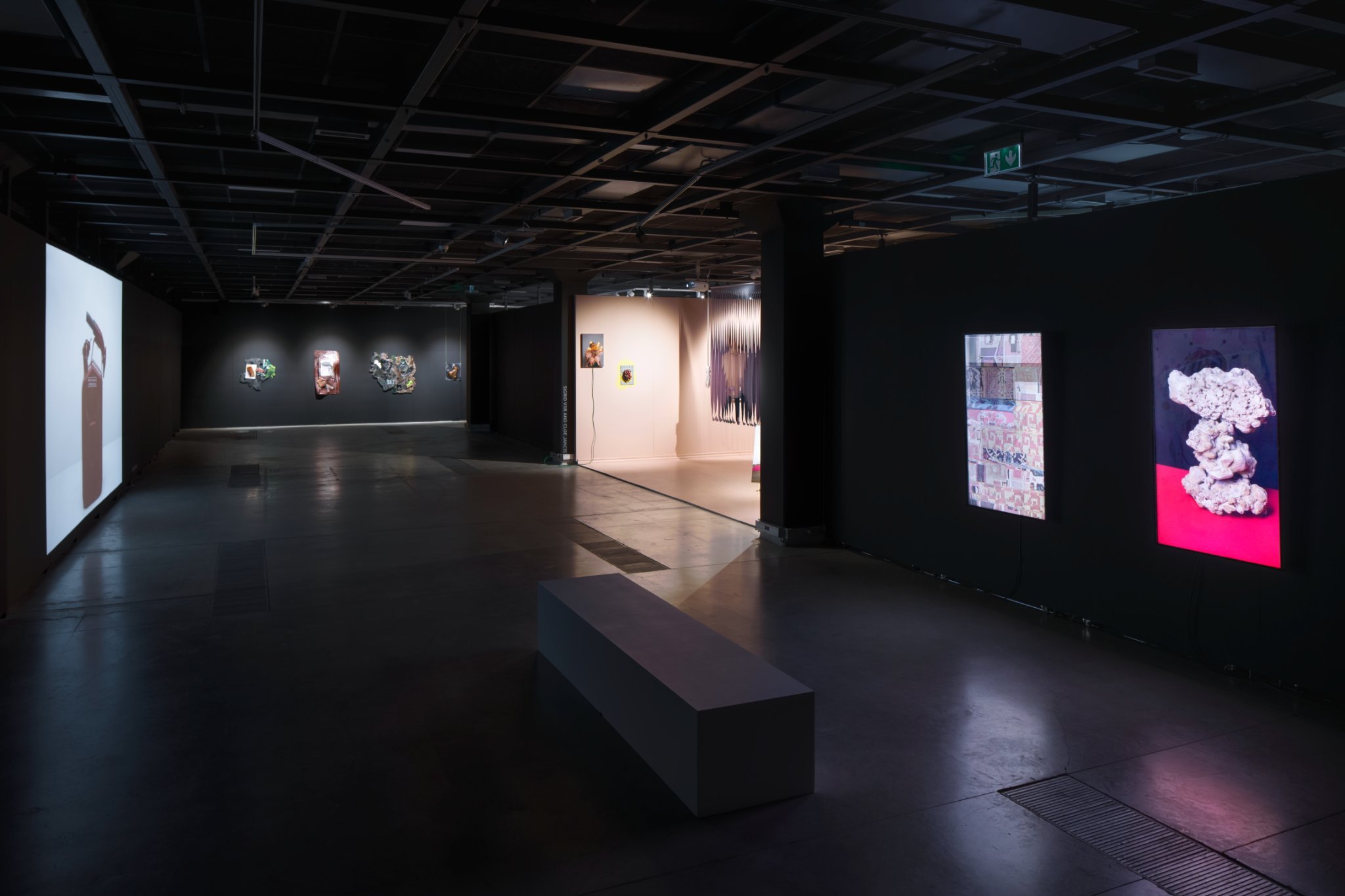
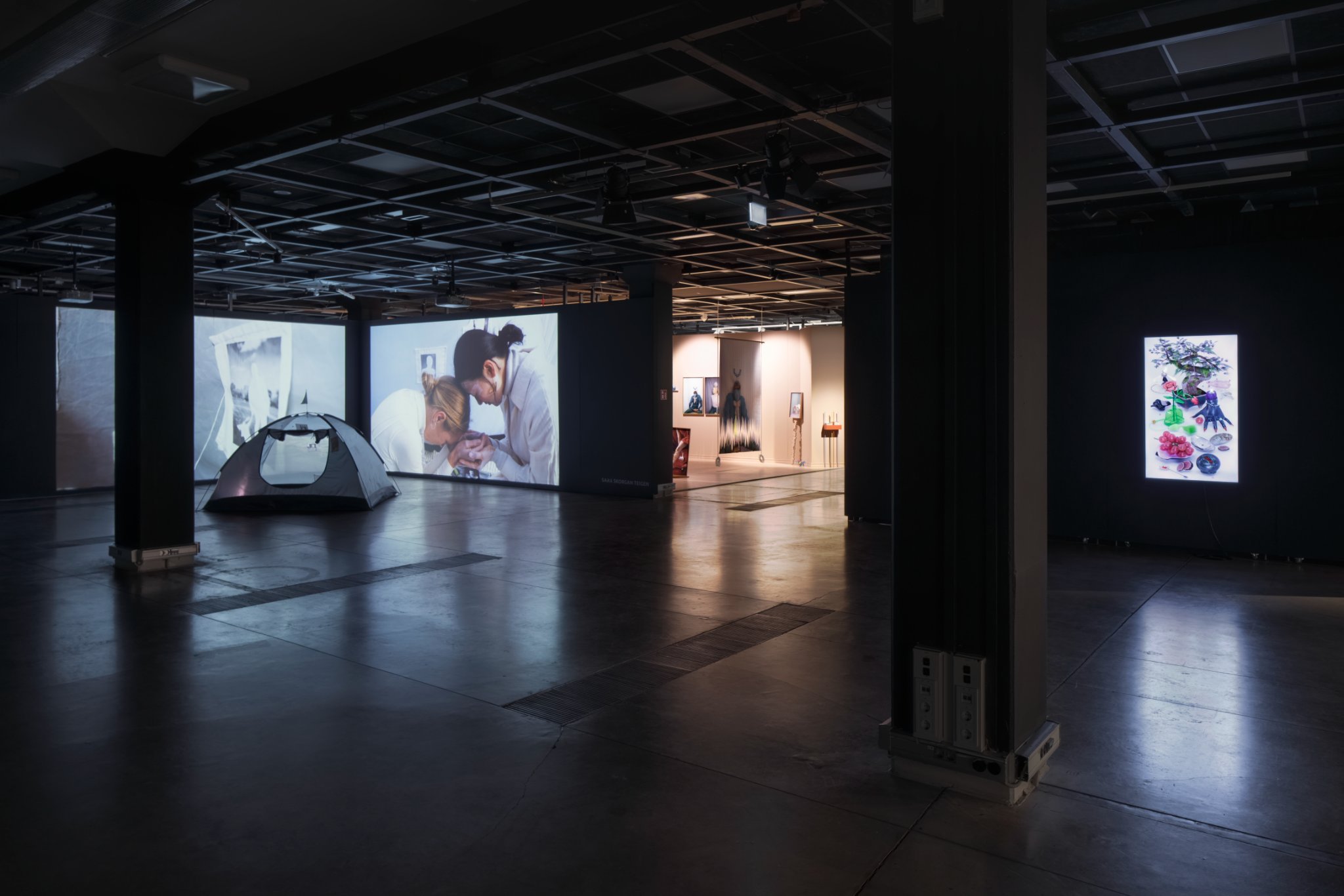
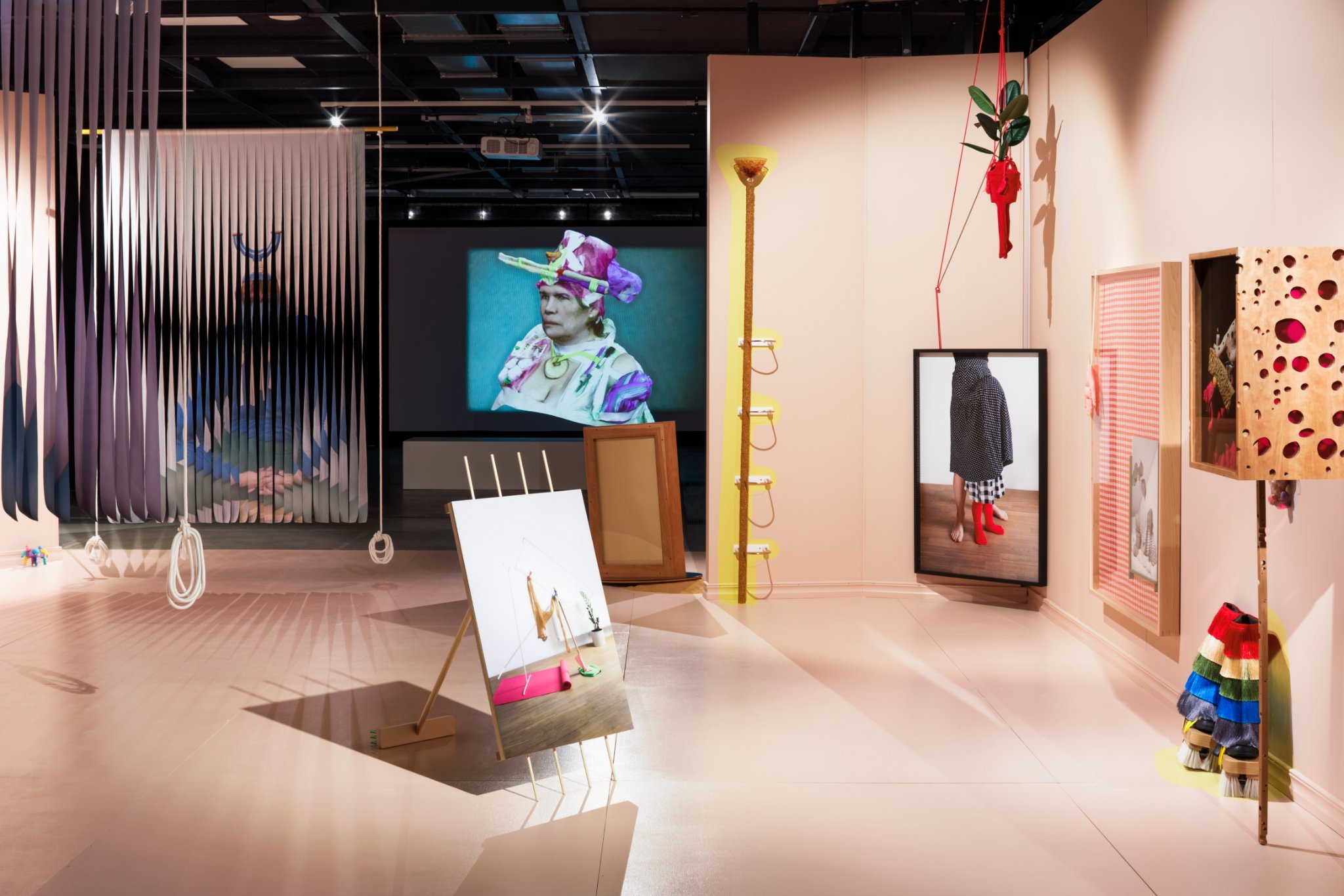

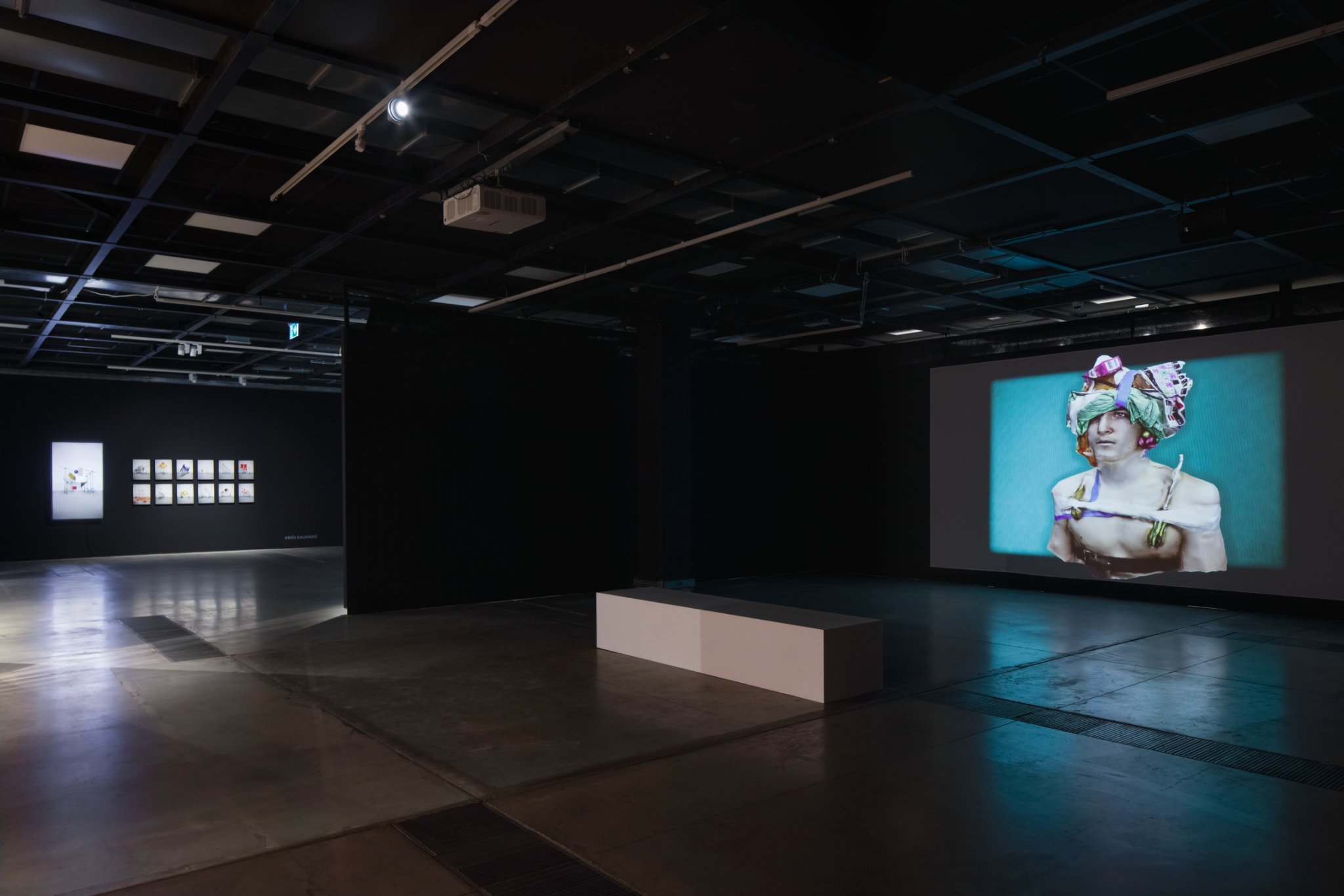
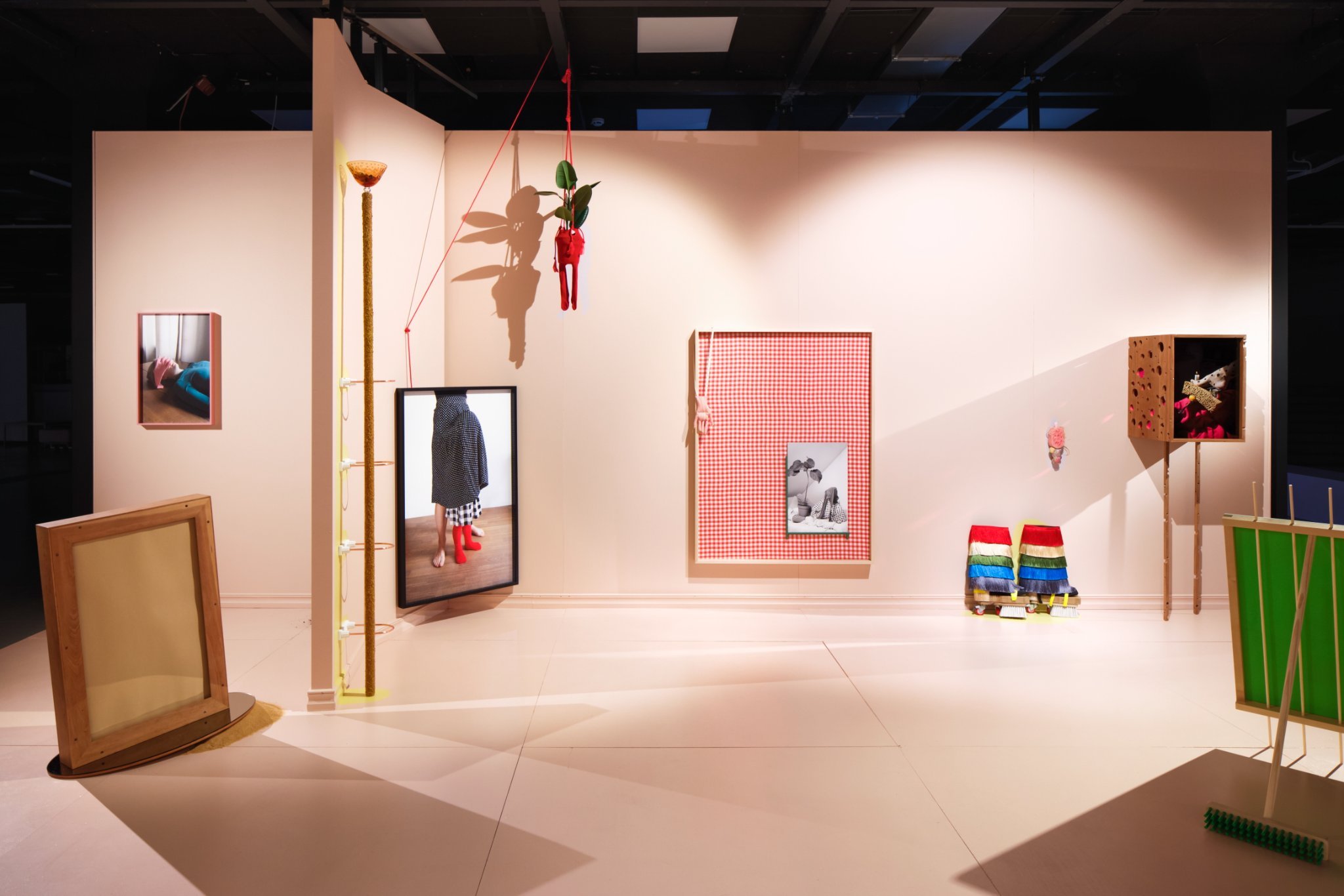
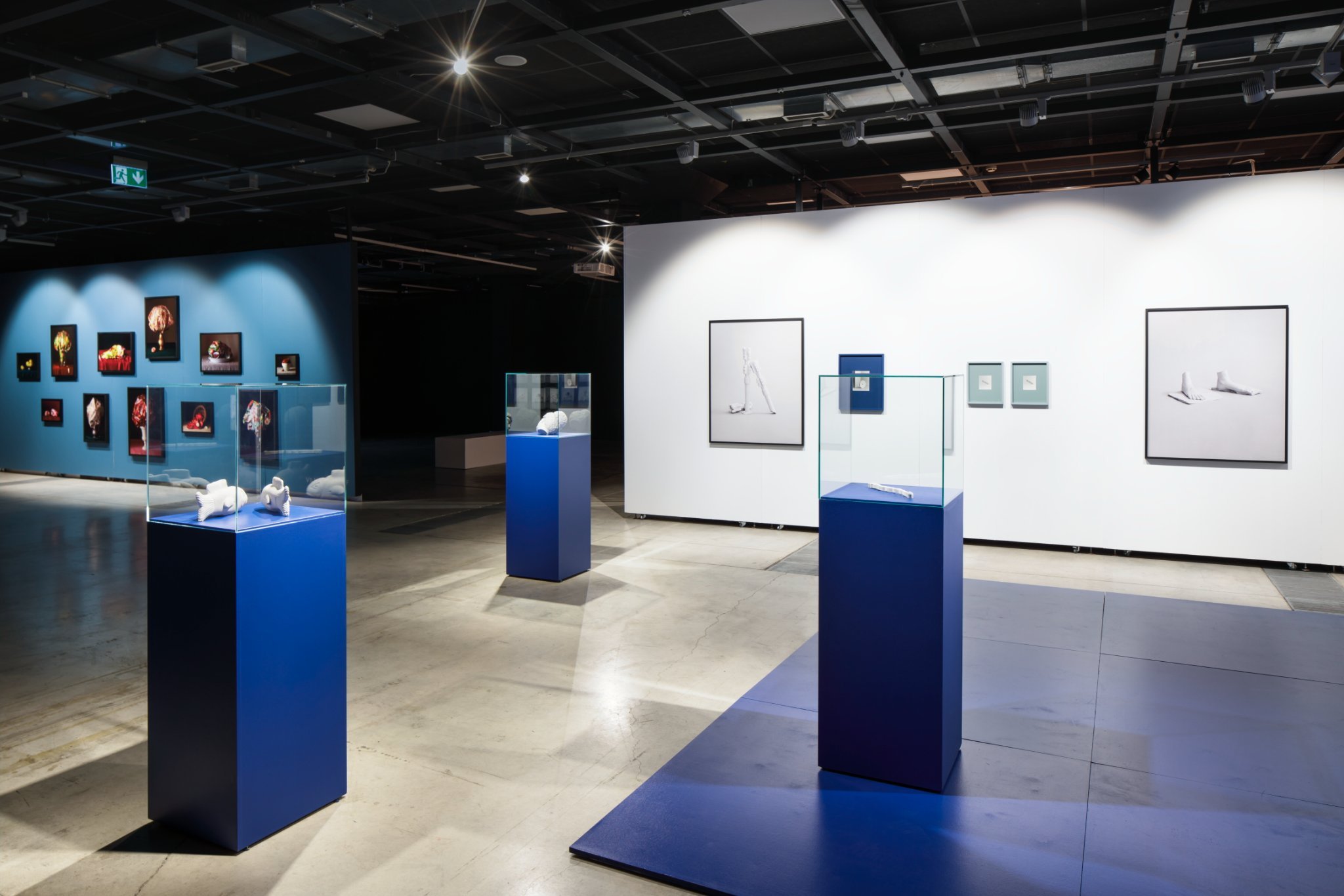
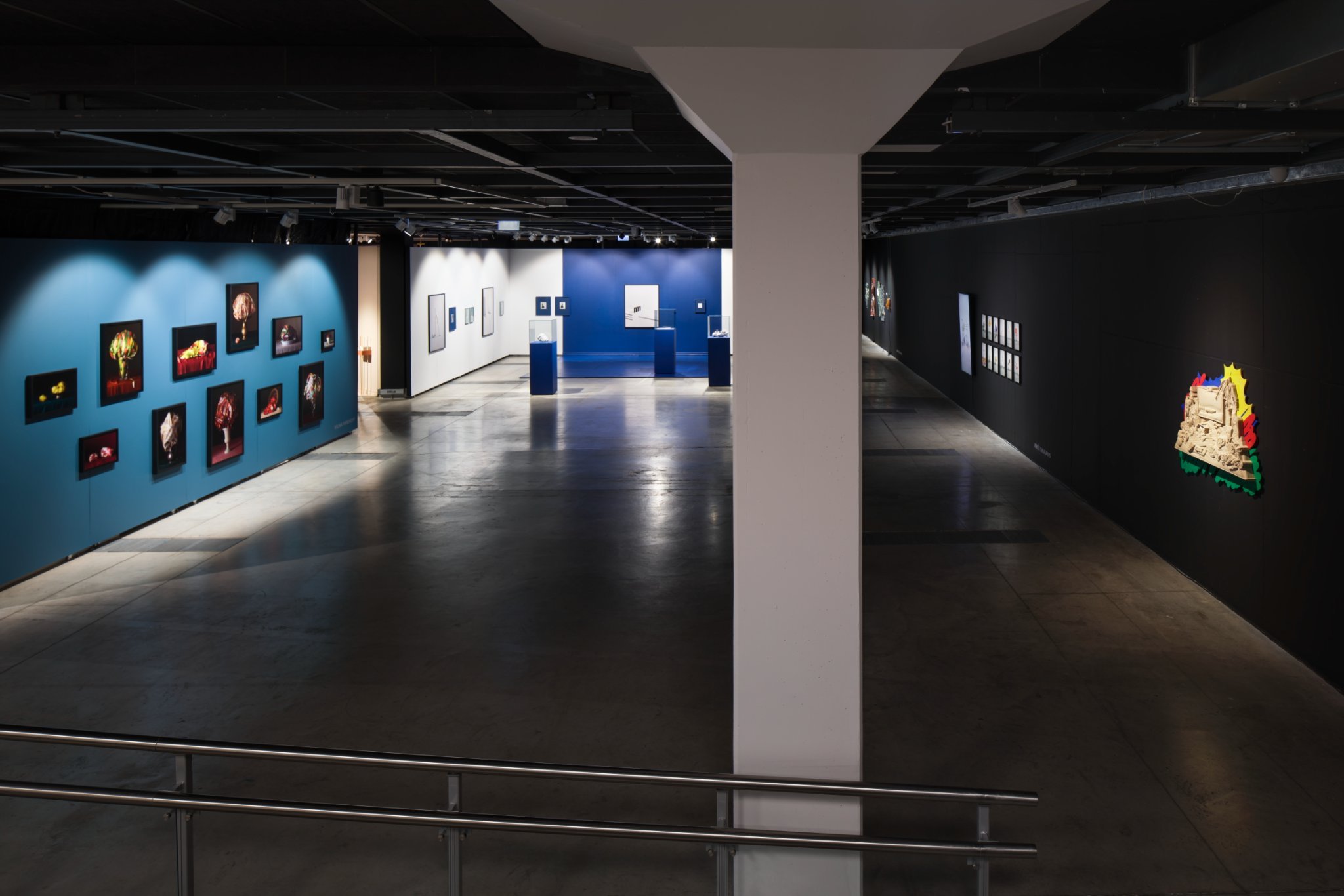
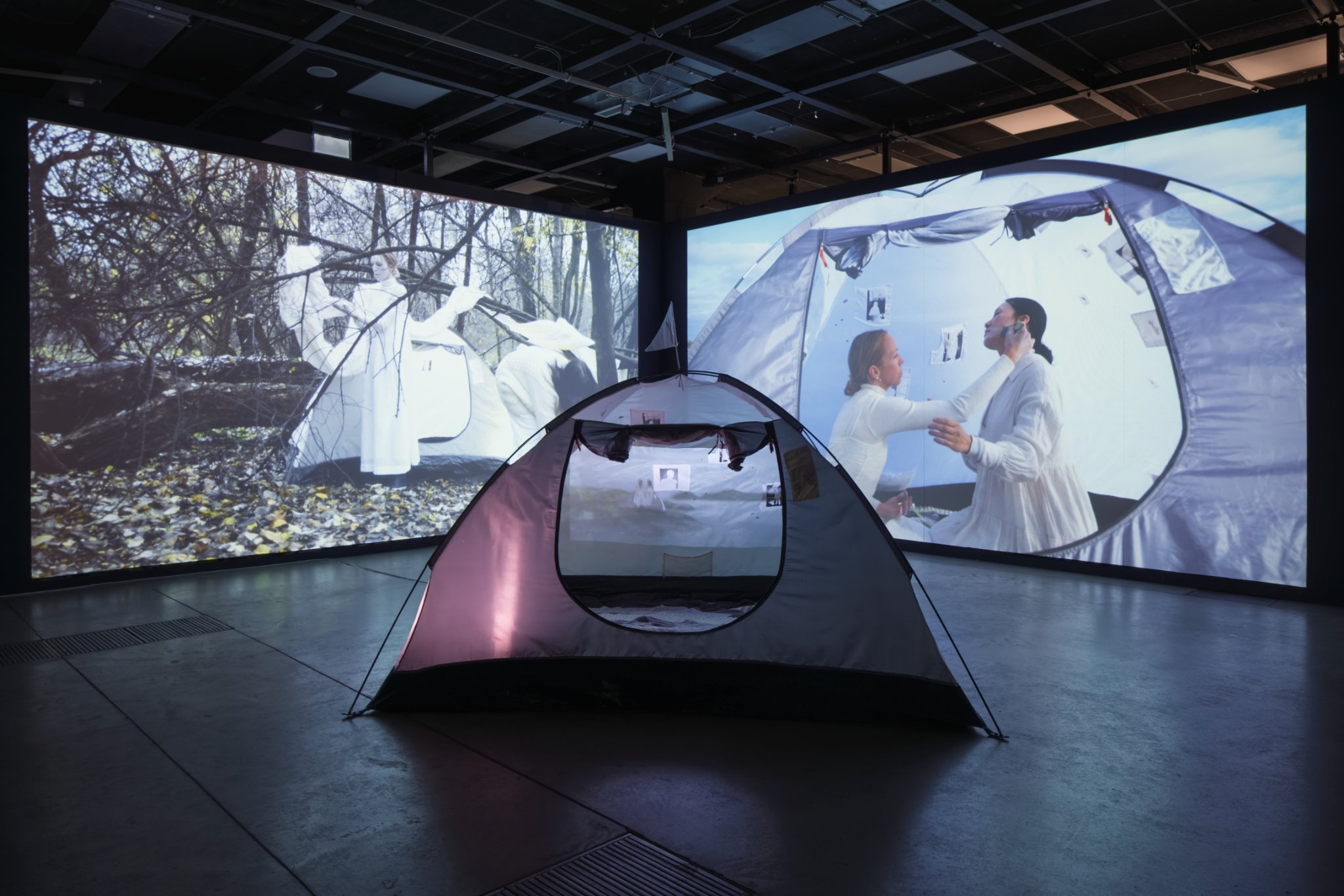
Artist talk with Kjetil Røed, Charlotte Thiis-Evensen and me at Dropsfabrikken
Thank you to everyone that came to our artist talk at Dropsfabrikken. It was such a special evening for us.
All photos by Håkon Sandmo Karlsen
Opening at Dropsfabrikken and Gustav Svihus Borgersen´s beautiful text
Arbeidene til Charlotte Thiis-Evensen og Marie Sjøvold i denne utstillingen tematiserer død. Men i denne forbindelse er utstillingstittelen interessant: «Slutten». Den peker ikke på død direkte, men snarere på slutten av livet. Slik sett er den like livsbejaende som den er dødstematisk. Hvordan vi forholder oss til at livet en gang tar slutt kommer til uttrykk i en serie konkrete, men også åpne arbeider i foto, grafikk, video, lyd og skulptur. Fotografiet som medium og døden som gjenstand for erkjennelser av vår egen timelighet er et kunsthistorisk gjennomgangstema, kanskje særlig kjent fra den franske teoretikeren Roland Barthes, men dette finner her sin helt personlige form.
I ett av bildene i Sjøvolds serie «I Feel So Close To Everything I Lost» ser vi en kvinne i blå bluse og med utslått hår, midt i en blomstereng i skogen. Hvorvidt kroppen synker ned i enga eller er i ferd med å reise seg, er usikkert. Hendene er løftet opp i været. Hvorvidt vi ser et utslag av frihetsfølelse i alt det frodige eller ensom veiving med armene, er det vanskelig å bestemme kategorisk. I et annet bilde ser vi en kropp som nettopp har truffet vannflata. Boblende og brusende, fullt av liv. Samtidig som det er dramatisk og helt uavklart hvorvidt dette er et ukontrollert fall eller et elegant stup.
Fotografiene viser en tett-på-tilhørighet – til omgivelsene. Kroppens relasjon til bakken under, skogen foran, objekter ved hendene. Kroppen som en sansende, taktil størrelse. Denne nærheten til omgivelsene og eksistens finner vi også i Thiis-Evensens «Portraits», en serie fotopolymer på finer, som bokstavelig talt viser nærbilder av natur. Så nært på at naturmaterialene løser seg opp og blir uttrykk for helt grunnleggende, organiske prosesser. Det klare skillet mellom det øvre bildefeltet og finerplater av furu markerer klare brudd mellom det lyse og det mørke.
Flyten i trefibrene finner gjenklang i Thiis-Evensens videoverk «ADRIFT». Innenfor rammen flyter det kropper og hår forbi, bobler når overflaten, vi skimter bunnen, ringer i mørkt vann og krusninger over klart vann. Noen ganger går det fremover, andre ganger går det bakover. I dette vekselspillet glir forskjellige mennesker fordi – eksistenser som aldri kan ta helt kontroll over elementene som omgir dem.
Og denne flyten, dette bruddet, denne oppløsningen finner sin helt håndfaste oppsummering i lydverket «En av hundre tusen», der Thiis-Evensen først snakker med en fagspesialist omkring farens sykdom, kalt PSP. Som hun selv beskriver, begynner det med en fagutredning om sykdommen. Hun stiller de samme spørsmålene som så mange barn av kronisk syke, om sykdommens forløp og arvelighet. Samtaleformen løser seg opp ettersom intervjuobjektet viser seg å være hennes far, den syke. Denne glir ut i en prosaisk samtale om forholdet i presens («akkurat nå høres du bra ut») og om nær framtid («vi kommer på besøk og vi kan gå tur»): Du gleder deg over livet mens du lever, samtidig som en diagnose gir deg og familien så helvetes god tid til å tenke på "at du skal dø".
I serien «Blomster er som hjertet skåret opp» har Sjøvold tatt utgangspunkt i ritualene omkring død, nærmere bestemt nærbilder av blomstene som ligger igjen etter en begravelse. Igjen løser ordinære gjenstander, tilknyttet dette kjente ritualet, seg opp til å bli noe annerledes, ikke-gjenkjennelig. Begge kunstnernes dveling ved, håndtering av og bearbeidelser av vår timelighet tar her hele tiden utgangspunkt i de faktiske forhold, håndgripelige størrelser. Disse sterkt kontekst-/tekst-avhengige arbeidene er åpne, og når de settes inn i denne dødsproblematikkrammen, får tolkningene en retning. De er estetiske uttrykk, talende for hvor fremmed det kan føles å konfrontere dette. Som når mennesker på dødsleiet etterspør sin leppestift eller sin dagbok, viser bildene at vi er vant til å leve – ikke til å dø.
- Gustav Svihus Borgersen, Februar 2022
Photos from the opening by Håkon Sandmo Karlsen
Review in Klassekampen by Tommy Olsson
Thank you to Tommy Olsson for this review in Klassekampen:
Interview in Artscene Trondheim
Thank you Märit Aronsson for this interview in Artscene Trondheim:
https://artscene.no/
Marie Sjøvold and Charlotte Thiis-Evensen work on the basis of personal events. They have different methods, but share an interest in the transitions in life: between sleep and waking, childhood and adult life, and – as in the exhibition Slutten (The End) – life and death.
The End; life and death. They have worked together for five years. This is the second exhibition they are doing together, and a third is already planned. I met them at Dropsfabrikken.
Märit: How did your collaboration begin?
Charlotte: The first time we met was when I was doing a reportage about sleep for the programme ‘Nasjonalgalleri’ on NRK. Marie was one of the artists I interviewed, and we connected well right away. I asked her and Arne Vinnem, another artist, about doing an exhibition together, at Kristiansand Kunsthall. That was in 2016, and the exhibition, which was given the name Oppvåkning (Awakening) –
was related to among other things sleep, but also to more existential themes.
Marie: I knew about Charlotte’s works, also before we began to work together. Working so close to your own life and the various experiences you have in phases of life is a universe I can recognise myself in. The ideas often come to us very intuitively, but we spend a long time, often several years, working them up to what becomes the final project.
You both work on the basis of your own lives, and personal events?
M: Yes, there are many similarities, even though the expression is different. There can be transitional phases in life that trigger works. I use the camera as a tool to try to understand existential situations. Something changes; for example one person disappears and a new one appears. When my grandmother suffered from dementia, and at the same time I was very pregnant, I had an acute need to work with that. I use the camera to be there for moments, so I can understand a bigger totality afterwards. The works I create out of pure necessity are, I suppose, those that communicate best, where I have had a genuine need to tell a story.
C: I’m very interested in everyday life here and now, and often think that after all, we all have to die, so it’s just a matter of making the most of life. It isn’t really that I am so afraid to die.
You, Charlotte, work with documentary, for example in the programme ‘The Architect’s Home’ on NRK. What do you do to balance the documentary and the artistic?
I work in very varied ways: short documentary films, TV programmes and abstract art films. I use the documentary toolbox as a method which in a way I distort here. How much of it I have experienced personally, the public doesn’t need to know. It may be about personal grief, but insofar as the work isn’t directly documentary, I hope it becomes more universal.
When you work with death as a theme, it’s likely that in some sense that includes spirituality and religion. What attitude do you have to that in your work?
C: We have both worked with religious rituals. After all, the candlestick on the floor has a certain symbolism, and a direct association with the church interior. That an exhibition can function as a religious space is quite fine. But beyond that neither Marie nor I are particularly religious.
M: It’s a natural association . I’m not religious, but I’m fascinated by symbolic acts in connection with crucial episodes in life. That you open the window when a person dies, for example. And I have photographed funeral flowers which are included in the exhibition as photographic sculptures. I was given free access to the flowers that had been thrown and spent a lot of time in the chapel in Asker Church. One day while I was standing with the agents from the funeral parlour waiting for a funeral to be over, one of them said to me: you know, death is very small part of my job, I work mostly with life.
Are art and the exhibition space places where non-religious people can find comfort?
C: Yes, for me that space means a great deal. Both because I’m interested in architecture and because it is a space I can visit to find comfort and peace. And it’s interesting to go back to the art spaces and feel the various experiences you have, independently of the art that is shown there. I’m very fond of the Vigeland Museum, for example. There’s something atmospheric and timeless about it.
M: Our works are open enough to play on a range of different emotions, and comfort can be one of them that can have an impact independently of the viewer’s references and history. For me I suppose quite honestly it’s often the case that I prefer to visit nature to seek comfort.
Speaking of exhibition spaces, tell me about how you composed the exhibition!
C: We always make models of the exhibition space – here too. But this time we simply had to reject the original plan and begin all over again. There was something that just didn’t fit. Instead we have tried to engage the works in a clearer dialogue with one another than has been done before. We’ve had to take many works away to create a calmer composition. We like people to pause at a work rather than rush on to the next one.
We work separately, with one exception, the work Due (Dove). It’s a photo of a dead pigeon that lay outside the Sandefjord Art Society. In that photograph we managed to capture the ambivalence we seek in our work.
The theme is after all death, but we like to get some lightness into the exhibition too. That’s why we brought in a few older works, for example the videos with the ladies dancing with the exercise hoops. That makes it less of a one-track thing.
As I understand it, this is your second exhibition together, and then comes another one, so they form a trilogy, one could perhaps say. For each exhibition you have also produced a book, which is a work of art in its own right. Can you talk about them?
C: Yes, the next book and exhibition has a venue but not a title yet. It will take place in 2026, and by then we will have worked together for ten years. When we work with the books, each contributor is allowed to leave a clue that they send on to the next person. A bit like the paper chase games we played when we were small. We’re very interested in the way things move when you pass something on to someone else. It’s generous and fine to be together in something.
Yes, the business with cycles is something that recurs.
C: It’s great fun not knowing what it will become – there’s an unpredictabilty there. Cycles are very clear in nature, and we both have a lot of natural elements in our pictures. In nature there’s room for metaphors and ideas that can be understood immediately and don’t necessarily need to be explained so clearly.
M: The cycles recur in many of the projects. For example I’ve worked with the seasons throughout a whole year, with recurring periods of dark and light – the way nature is also present in us human beings as a kind of mental landscape.
Can you tell me more about how you work?
M: When I start a project I usually know what it will be about, and I lay down a clear framework for how I am to work with it. Within that framework I can permit myself to work very freely. At some point it may be that I have to reassesss the work and see whether the project has become something else. I try to let it develop.
I feel so close to everything I lost began with me avoiding social media and my smartphone for a whole year. I wanted to get rid of distractions, like when you just pick up the mobile and scroll with no plan. Those times I had the impulse to pick up the phone on a whim, I picked up the camera instead. I registered the scene around me, and took a picture. That way I took control of my bad habit.
What happened when you weaned yourself off the smartphone and social media?
Gradually it became clear that it wasn’t about social media, or switching off, because I very quickly got used to not letting myself be distracted by my smartphone. It just took a couple of months. What happened was that I gained a different presence. That changed the way I see my surroundings, and the way I take photographs. Now it’s more about the great silence, the closeness to nature and to the people close to me, but that too requires silence, which becomes a magnifying glass for one’s own feelings.
Exhibition at Dropsfabrikken in Trondheim
Når jeg skriver dette til deg er det tidlig på morgenen. Det er stille i huset. Så stille at jeg kan høre bruset fra natten og søvnen som fremdeles sitter i kroppen. Lyden blander seg med biler som suser forbi nede på den fuktige hovedveien. Det har blitt en vane, disse tidlige morgenene i ukene før en utstilling. En blanding av spenning og iver som skjerper alle sansene nå som utstillingen Slutten skal på reise videre til Dropsfabrikken i Trondheim.
Utstillingen åpner lørdag den 19.februar kl.12.00-15.00. Både Charlotte Thiis-Evensen og jeg vil være tilstede. Jeg ser også frem til kunstnersamtalen mellom Kjetil Røed, Charlotte og meg som finner sted kvelden før åpningen, altså den 18.februar kl.18.45-20.00.
Du er selvsagt hjertelig velkommen begge dagene!
Da Slutten ble stilt ut første gang i Sandefjord Kunstforening i høst, skrev Kjetil Røed en utrolig fin anmeldelse i Vårt Land. Anmeldelsen hadde overskriften «Stort viktigere enn dette blir ikke kunsten» og Røed påpekte at «Charlotte Thiis-Evensen og Marie Sjøvold tar for seg såkalt «triste temaer», men resultatet er ofte forsonende og oppløftende.»
Videre skriver han:
“Døden er allmenn, den skjer alle, men erkjennelsen av den er alltid knyttet til noe konkret, et sted å se fra, en erfaring, noe Sjøvold reflekterer interessant rundt i sine bilder av blomster som er brukt i forbindelse med begravelser. […]
Blomstene åpner for et mulig fristed i det flettverket av konvensjoner og offisielle ritualer rundt døden som vi vanligvis er fanget i. Blomsterbildene og flere andre verk på utstillingen viser at vi aldri kan finne endelige svar når det gjelder vår egen sårbarhet, aldring og død, men at vi hele tiden må kretse tilbake til utgangspunktet og stille nye spørsmål. Etter hvert som vi beveger oss på livets vei, vil andre synsvinkler tvinge seg på.
Begravelsesblomst # 3 (2020)
Begravelsesblomstene er fotografert samme dag som bisettelsen fant sted. Deretter fulgte jeg deres forfall gjennom en uke, noen ganger enda lenger. Jeg fotograferte vekstens cellestruktur, men ville også se hvordan blomstens indre landskap endret seg i forråtnelsen. På leting etter noe jeg ikke visste hvordan så ut. Noe menneskelig i naturen. Noe gjenkjennelig i et landskap jeg enda ikke har opplevd. Kunne jeg finne eller skape fotografier som sa noe om de følelsene vi tillegger blomstene? Sorgen, savnet, sårbarheten og kjærligheten som bindes inn i buketter hver eneste dag.
Verkene i Blomster er som hjertet skåret opp er fotografert med et mikroskop, som min mann Ludvig laget spesielt for dette arbeidet. Selve fotograferingen var et svært tidkrevende arbeid. Det du ser i fotografiene kan plasseres på et knappenålshode og hvert av de ferdige verkene er satt sammen av hundrevis av eksponeringer. Når jeg leter meg frem til et motiv og eksponerer, ser jeg kun en liten stripe av motivet skarpt. En antydning til det bilde. Det er først når jeg i en annen prosess “syr” sammen eksponeringene at bildets dybde kommer til syne.
Så kjære deg, hvis du er i Trondheim mellom den 18.februar-20.mars 2022, ville jeg blitt så glad om du tok turen innom Dropsfabrikken. Eller kanskje du kjenner noen som kan ha interesse av å se Slutten? Fortell meg gjerne om din opplevelse. Jeg blir så glad for alle tilbakemeldinger, brev eller smser jeg får. Utstillingen i Sandefjord Kunstforening ga både Charlotte og meg noen sterke og fine møter med dere som kom og så. Dere som fortalte om deres opplevelse av utstillingen. Dere som fant nye lag i dialogen mellom Charlotte og mine verk. Dere som tente lys, eller som gikk rundt i rommet i stillhet. Det var så utrolig berikende, så vi har valgt å ta med oss disse erfaringene inn i arbeidet med Slutten i Dropsfabrikken.
Norwegian Art yearbook
“In my eyes, the presentation of Marie Sjøvold’s photo book The Practice of Presence was Le Book Club’s most refreshing element. Among other things, it was about the experience perspective that both the book and the installation of the book opened up for; a perspective that is strikingly unexplored in the photobook literature. ”
Heidi Bahle Amundsen has written a really good text about the exhibition “Le Book Club” in the Norwegian Art Yearbook. The exhibition was shown at Fotogalleriet in Oslo January/February 2020, curated by the Norwegian artist Nina Strand and Paris-based duo Anna Planas and Pierre Hourquet. In five chapters unravelling over five weeks, the exhibition Le Book Club explored the photobook as an exhibition space.
From Heidi Bahle Amundsens text in Norwegian:
I mine øyne var presentasjonen av Marie Sjøvolds fotobok The Practice of presence Le Book Clubs mest forfriskende element. Det handlet blant annet om det erfaringsperspektivet som både boken og installasjonen av boken åpnet opp for; et perspektiv som er påfallende uutforsket i fotoboklitteraturen. Sjøvold bok består av fire publikasjoner i en boks, som hver beskriver nærværserfaringer fotografen hadde i løpet av et år med begrenset bruk av smarttelefon og sosiale medier. Dette nærværet i egen erfaringsverden ble speilet i publikums omgang med boka, siden fire ulike installasjoner av verket inviterte til fire ulike opplevelser.
Blant annet ble man som leser invitert til å legge igjen hver av de fire delene av The Practice of Presence åpne på det oppslaget man hadde opplevd sterkest, som ble neste lesers inngang til prosjektet. Interessant nok var det ikke disse oppslagene som satt sterkest i meg etter utstillingen, men de som andre hadde åpnet for meg. Den erfaringen sier noe om betydningen av andre leseres blikk og meninger for leseropplevelsen.
From Heidi Bahle Amundsens text translated to English:
In my eyes, the presentation of Marie Sjøvold's photo book The Practice of Presence was Le Book Club's most refreshing element. Among other things, it was about the experience perspective that both the book and the installation of the book opened up for; a perspective that is strikingly unexplored in the photobook literature. Sjøvold book consists of four publications in one box, each of which describes the photographer's presence experiences during a year with limited use of smartphone and social media. This presence in one's own world of experience was reflected in the audience's interaction with the book, since four different installations of the work invited four different experiences.
Among other things, the reader was invited to leave each of the four parts of The Practice of Presence open on the post they had experienced most, which became the next reader's entrance to the project. Interestingly enough, it was not these postings that stood out the most in me after the exhibition, but the ones that others had opened for me. That experience says something about the importance of other readers' views and opinions for the reading experience.
Vårt Land: These are the ten best exhibitions
Kjetil Røed writes about this year's best exhibitions in Vårt Land and among them is Charlotte Thiis-Evensen and my exhibition «Slutten» at Sandefjord Kunstforening.
Read the article here:
https://www.vl.no/kultur/anmeldelse/2021/12/31/dette-var-arets-ti-beste-kunstutstillinger/
Read the full review here:
He also writes about
Sissel Tolaas at Astrup Fearnley Museet
Eli Eines at Tenthaus Galleri
Bård Breivik på Bomuldsfabrikken
Heidi Bjørgan at Nitja senter for samtidskunst
Marthe Elise Stramrud at Sørlandets Kunstmuseum
Otobong Nkanga at Henie Onstad Kunstsenter
Tone Indrebø på Galleri Haaken
Joar Nango at Nasjonalmuseet – Arkitektur
and the opening of The Munch Museum
Berlingske: Here they are! The best and most debated art exhibitions of the year
The duo exhibition "The past in front of me" that Astrid Kruse Jensen and I had at Fotografisk Center in Copenhagen has been nominated by Berlingske's art editor Birgitte Ellemann Höegh as one of the best exhibitions in Denmark in 2021. The exhibition is curated by Kristine Kern.
Thank you for the invitation and cooperation.
You can read the article here:
https://www.berlingske.dk/kunst/her-er-de-aarets-bedste-og-mest-omdiskuterede-kunstudstillinger
And the full review here:
https://www.berlingske.dk/kunst/der-er-noget-naer-magisk-paa-faerde-i-fotografisk-center
We are in very good company. The other nominated exhibitions are:
Efter stilheden – kunstens kvinder tager ordet at Statens Museum for Kunst
Rugile Barzdžiukaitė, Vaiva Grainyte and Lina Lapelytė: at Copenhagen Contemporary
Mamma Andersson: »Humdrum Days« at Louisiana
Trine Søndergaard: »Works« at Den Sorte Diamant
Anne Imhof: »Sex« at Statens Museum for Kunst
Laure Provoust: »Our elastic arm hold in tight through the clouds« at Kunsthal Charlottenborg
Marie Sjøvold og Astrid Kruse Jensen: »Fortiden foran mig« at Fotografisk Center
David Lynch: »Infinite Deep« at Nikolaj Kunsthal
»Kirchner og Nolde til diskussion« at Statens Museum For Kunst
Randi Jørgensen og Katrine Malinovsky at Kofoeds Skole
So nice that the exhibition can live on into 2022!
Review: Stort viktigere enn dette blir ikke kunsten by Kjetil Røed
Slutten // Opening speech at Sandefjord Kunstforening
Åpningstale til «Slutten» ved Sandefjord Kunstforening 9. oktober 2021
Der én ting slutter, begynner en annen.
I utstillingen «Slutten» møter vi to kunstnerskap, som har utviklet seg over tid og har hvert sitt særpreg, men som også har utviklet seg i samspill med hverandre. Når vi ser arbeidene utstilt sammen trer flere fellestrekk frem. Både Charlotte Thiis-Evensen og Marie Sjøvold er tett på hverdagen og knytter den til eksistensielle spørsmål: en kropp bryter overflaten og beveger seg inn i et ukjent rom; en datter snakker med sin far om hans uhelbredelige sykdom. Begge kunstnerskapene kjennetegnes også av et blikk for det poetiske i dagliglivet: Mønsteret i en furustamme; lyset som treffer en hånd (eller er det en flamme?) Arbeidene gir oss innblikk i menneskers liv. Og vi kjenner oss igjen.
Denne utstillingen er andre del i en trilogi, som startet med utstillingen «Oppvåkning». Det slår meg at den er blitt mer enn summen av to separate kunstnerskap. Den er blitt en samtale. Verkene snakker sammen, de kommenterer og utdyper hverandre. De gir hverandre nye lag.
Der jeg slutter, begynner du.
Samtalen mellom Charlotte og Marie startet for mer enn åtte år siden. Charlotte lagde en reportasje om søvn og intervjuet Marie. Jeg har latt meg fortelle at da intervjuet var ferdig, sa Charlotte: Jeg har fått en utstillingsplass, vil du stille ut sammen med meg? Og der startet samtalen dem imellom.
Flere års arbeid har ledet frem til denne utstillingen. Det handler om å utforske dokumentariske prosesser, utfordre tradisjonelle arbeidsmetoder og bli kjent med mennesker over tid: Komme nær de menneskelige erfaringene gjennom det kunstneriske arbeidet. Først var planen å stille ut i forskjellige rom, mer som to parallelle separatutstillinger. Så kom ideen om å blande verkene, og slik trer dialogene tydeligere frem.
I utstillingen har begge kunstnerne med arbeider fra ulike faser i kunstnerskapet. Et felles verk er også med, det første de har laget sammen: Et fotografi av en due. Og apropos det poetiske i hverdagen, duen fant de utenfor denne bygningen, på vei ut fra det første planleggingsmøtet her i Sandefjord kunstforening.
Verkene i utstillingen viser oss at slutten har mange ansikter. I noen er slutten en lengre, uunngåelig prosess, i andre en brå og uventet hendelse. Vi blir vitne til personlige utvekslinger om sykdom eller død. Andre verk peker på det språket vi mangler i møte med døden, de utforsker begravelsesblomster, de blomstene som skal si noe for oss når vi mangler ord. Andre igjen viser at elegansen og leken også hører alderdommen til, enten det består i å trene med rokkering i en grønn eng eller blåse enorme rosa tyggegummibobler. Vi får også se bevegelsene og forvandlingene som oppstår når noe avsluttes og noe nytt kan begynne. Som portrettene av gamle furustammer som oversettes til nye fremstillinger. I den gamle stammen ligger kimen til nye portretter. Eller kropper som beveger seg inn i ukjente rom, enten de bryter barrierer, eller driver mot noe de foreløpig ikke vet hva er. Slutten er en fase som bærer med seg nye begynnelser. Og med det nye syn på verden, og nye mulige fellesskap.
Dialogen mellom Charlotte og Marie har også ledet frem til en bok med tittelen Slutten. Omslaget er vårgrønt, boka har japansk binding og er håndsydd av kunstnerne selv. I boka har de invitert inn andre til samtalen: Eivind Hofstad Evjemo, Sverre Malling og Erik Pirolt. Dialogen blir en slags stafett, hvor hvert bidrag slutter med et spor til nestemann – en tekst, et fotografi, en tegning – noe å bygge videre på.
Der én slutter, tar den andre over.
Arbeidene i disse rommene får oss til å tenke over vår egen virkelighet. Og her kan enda en samtale begynne. Jeg ser for meg at fortellingene i denne utstillingen smelter sammen med våre egne, og lever videre i oss. Og når vi endrer oss, så ser jeg for meg at de endrer seg med oss.
Der én samtale slutter, kan en ny begynne.
Jeg er så glad for å få åpne denne utstillingen. Jeg er sikker på at den vil åpne for mange nye og givende samtaler. Tusen takk – og gratulerer!
Nina M. Schjønsby
Exhibition Sandefjord Kunstforening
Charlotte Thiis Evensen og Marie Sjøvold
SLUTTEN
Åpning 9.november 2021
kl.14.00
Gratis og åpent for alle
-Med slutten kommer også nye begynnelser. Og nye mulige fellesskap.
Sitat fra kunsthistoriker Nina Schønsbys etterord i boken Slutten.
Slutten består av utstillingen i Sandefjord Kunstforening og en ny bokutgivelse. Gjennom Slutten
utforsker kunstnerne Charlotte Thiis-Evensen og Marie Sjøvold overgangene, bevegelsene og
forvandlingene som oppstår når noe avsluttes og noe nytt begynner. I flere tidligere prosjekter
har kunstnerne jobbet med temaer knyttet til menneskelig redsel og skrøpelighet i møte med
sykdom, alderdom og død. I utstillingen tas temaene videre, i fotografier, videoverk og
installasjoner. Dette er andre del av kunstnernes pågående samarbeidsprosjekt som startet med
utstillinger i Kristiansand Kunsthall (2016) og Kunsthall Grenland (2017) samt bokutgivelsen
Oppvåkning.
I bokprosjektet samarbeider Thiis-Evensen og Sjøvold med skulptør Erik Pirolt, forfatteren
Eivind Hofstad Evjemo og tegner Sverre Malling. Boken er en del av utstillingen, men også gis ut
som en egen publikasjon. I boken utforskes ulike kunstneriske språk og tilnærminger (prosa,
tegning, fotografi, noter, brev med mer), påvirkningen de har på hverandre og hvordan de ulike
kunstnernes bidrag gir nye nivåer av innhold og mening, både på et kreativt, innholdsmessig og
visuelt plan.
Prosjekt- og produksjonsstøtte er gitt av Billedkunstnernes Vederlagsfond,
Bergesenstiftelsen, Den Hielmstierne-Rosencroneske Stiftelse, Fond for Lyd og Bilde, Fritt Ord,
Kulturrådet, Norsk Fotografisk Fond, REV Ocean, Norske Kunstforeninger og Oslo Kommune.





